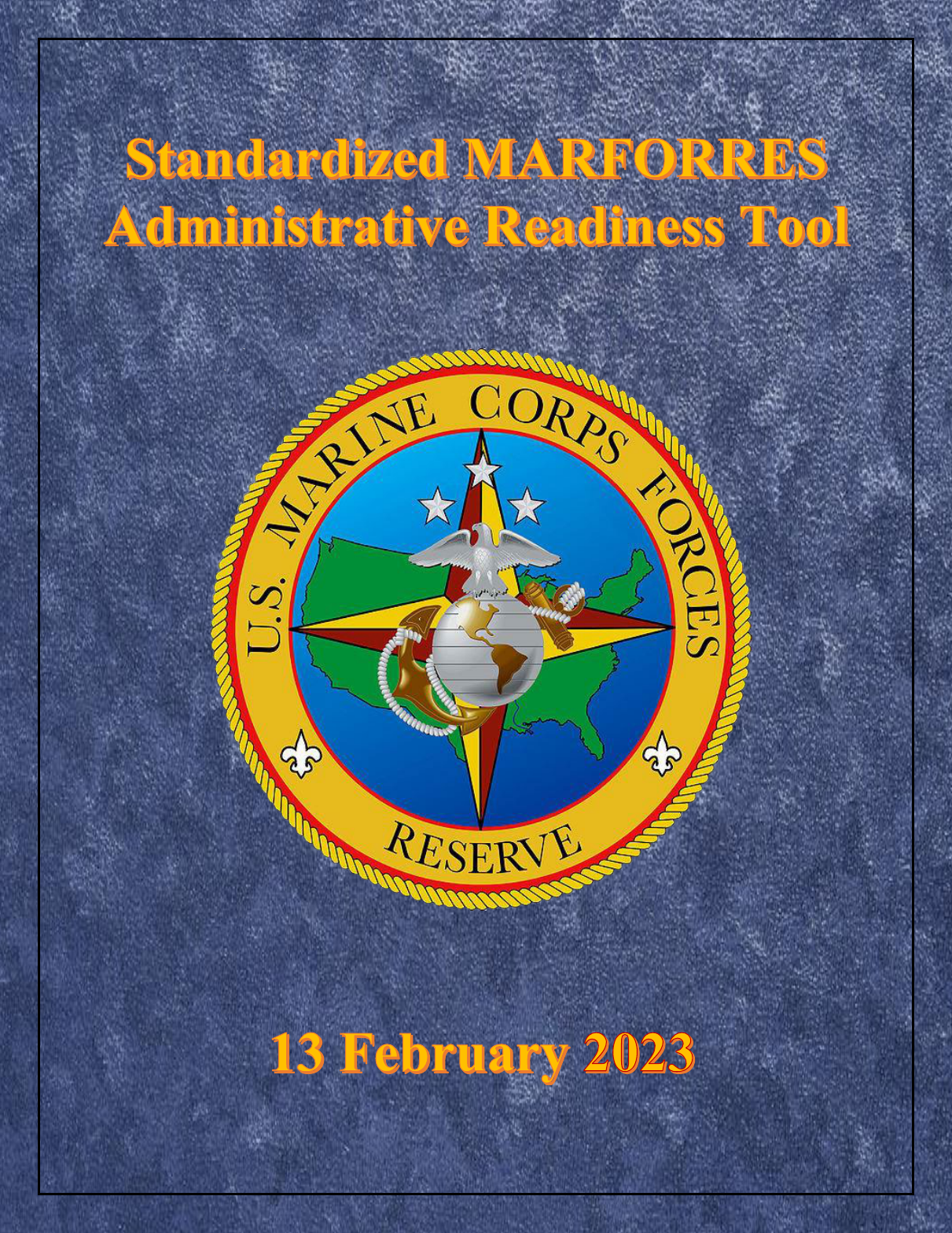
2
BACK TO TOP
I. BATTALION
LEVEL ADMINISTRATIVE MANAGEMENT
(BLAM) 6
II. STANDARD BLAM CONSTRUCT AND BILLET DESCRIPTIONS 7
III.
0111 ADMINISTRATORS REQUIRED SYSTEMS OR ACCESS 10
IV.
ONLINE REFERENCES 11
V.
MARINE CORPS ORDERS 13
VI.
MARFORRES BATTLE RHYTHM 14
VII. ADMINISTRATIVE TEMPLATES 21
1.
ACTIVE-DUTY OPERATIONAL SUPPORT (ADOS) 23
1 STANDARD OPERATING PROCEDURES
2.
ANNUAL TRAINING (AT) 25
1 STANDARD OPERATING PROCEDURES
3.
AUDITS 27
1 JOINS
2 MEMBER TO MEMBER AUDITS
3 MOBILIZATION AUDITS
4 DEPENDENT OVER 21 AUDITS
4.
AWARDS 35
1
REGISTRATION
2
USER ROLES AND RESPONSIBILITIES
3 ROUTING
AWARDS
4
STANDARD OPERATING PROCEDURES
5.
CORRESPONDENCE 39
1
ROUTING PROCEDURES
2
STANDARD NAVAL FORMATTING
6.
DEFENSE TRAVEL SYSTEM 40
1
DD 577
2 ORGANIZATIONAL DEFENSE TRAVEL ADMINISTRATOR (ODTA)
3 REQUIRED ODTA REPORTS
4
NON-DTS ENTRY AGENT (NDEA)
5
ROUTING OFFICIAL (RO)
6 AUTHORIZING/CERTIFYING
OFFICIAL
AO/CO
7 DETACHING AND RECEIVING TRAVEL ORDERS
8 SPLIT
DISBURSEMENT
9 ORDERS WRITING

3
BACK TO TOP
10 TRAVEL
VOUCHERS
11
MCTFS REPORTING VIA UNIT DIARY
12 OTHER SERVICE PERSONNEL
13
STANDARD OPERATING PROCEDURES
7.
DRILL WEEKEND 45
1 DRILL WEEKEND ACTIONS
2 REPORTS
3 DRILL FOLDER
8.
GOVERNMENT TRAVEL CHARGE CARD (GTCC) 48
1 APPOINTMENT LETTERS
2 REPORTING REQUIREMENTS
3 STORAGE OF RECORDS
4 STATEMENT OF UNDERSTANDING
5 TRAVEL CARD 101 TRAINING CERTIFICATES
6 ACTIVATING/DEACTIVATING CARDS
7 STANDARD OPERATING PROCEDURES
9.
G-1 ADMIN READINESS REPORTS 52
1 GAINING ACCESS
2 DISCREPANCIES
3 HOW TO WORK DISCREPANCIES
10.
INSPECTIONS 53
1 MARINE CORPS ADMINISTRATIVE ANALYSIS TEAM (MCAAT)
2 COMAMANDING GENERALS’ INSPECTION (CGI)
3 FRAAP (FORCE READINESS ADMINISTRATIVE ASSISTANCE PROGRAM)
11.
LEAVE 56
1 APPROVAL
2 CHECKOUT PROCEDURES
3 DEPARTURE AND RETURN TIMES
4 LEAVE INCONJUCTION WITH SPECIAL LIBERTY
5 PERMISSIVE TEMPORARAY ADDITIONAL DUTY (PTAD
6 SAVED LEAVE ACCOUNT
7 POST DEPLOYMENT MOBILIZATION RESPITE ABSENSE (PDMRA)
12.
LEGAL 59
1 GUIDANCE

4
BACK TO TOP
2 NON-JUDICIAL PUNISHMENT (NJP)
3 6105/PAGE 11 ENTRIES
4 PROMOTION RESTRICTION
5 ADMINISTRATIVE SEPARATIONS
6 REDUCTION PROS & CONS
7 COMMAND LEGAL ACTION (CLA)
13.
LIMITED DUTY COORDINATOR (MEDICAL) 72
1 PERMISSIONS
2 STANDARD OPERATING PROCEDURES
14.
MARINE RESOURCE ORDER WRITING SYSTEM (MROWS) 74
1 PERMISSIONS AND ACCESS
2 USER ROLES AND RESPONSIBILITIES
3 STANDARD OPERATING PROCEDURES
15.
MOBILIZATION 76
1 PRE-MOBILIZATION
2 MOBILIZATION DAY
3 DE-MOBILIZATION
4 DTS/DTS-R
16.
ORACLE DIRECTORY SERVER ENTERPRISE (ODSE) REPORTS 78
1 STANDARD REPORTS
2 WEEKLY REPORTS
3 MONTHLY REPORTS
4 STANDARD REPORTS TEMPLATE AND HOW TO BUILD
17.
PERMISSIONS (MOL) 80
1 GUIDANCE
2 WHO HAS PERMISSIONS?
3 PERMISSIONS MATRIX
18.
PROMOTIONS 85
1 CO/I&I PERMISSION
2 PROMOTION RECOMMENDATIONS
3 WILL NOT PROMOTES
4 DELETE AS ERRONEOUS PROMOTIONS
5 ZEROED OUT COMPOSITE SCORE

5
BACK TO TOP
6 PROFICIENCY AND CONDUCT MARKS
7 BODY COMPOSITION PROGRAM (BCP)
8 COMPENTENCY REVIEW BOARD (CRB)
9 STANDARD OPERATING PROCEDURES
19.
REENLISTMENTS AND EXTENSIONS 93
1 STANDARD OPERATING PROCEDURES
20.
REQUIREMENTS TRANSISTION AND MANPOWER MANAGEMENT
SYSTEM (RTAMMS) 94
1 PERMISSIONS
2 DRILL MANAGER
3 INVENTORY DRILL MANAGEMENT SYSTEM (IDMS)
21.
SEPARATIONS 96
1 STANDARD OPERATING PROCEDURES
22.
UNIT DIARY AND UNIT DIARY MANPOWER INTEGRATED PERMISSIONS SYSTEM
(UDMIPS) 99
1
USER ROLES AND RESPONSIBILITIES
2
STANDARD OPERATING PROCEDURES
3
SITUATIONAL REPORTING
23.
GENERAL ADMINISTRATION 105
1 GENERAL GUIDANCE
2 SHAREPOINT
3 MISSA/MISSO ACCESS
4 SMART OMB

6
BACK TO TOP
BATTALION LEVEL ADMINISTRATIVE MANAGEMENT (BLAM)
Battalion Level Administrative Management:
The BLAM concept centralizes administration
support at the Battalion level, equitably distributes senior administrators through the Force, and
standardizes administrative processes to be used by all MARFORRES units, which includes CLB
451.
1.
Marine Forces Reserve (MFR) is unique in that MFR has adjusted the BLAM into
consolidated Battalion level certifying sites to operate more individually as an IPAC. There are
usually two distinct reporting administrative RUC’s. Each battalion has two reporting RUC’s
(1) for active and (1) for reserve.
2.
The following will align with the Battalion to serve as both a BLAM and as a
functional and displaced IPAC.
a.
The Battalion Personnel Officer will serve as the overall manager and director
for all administrative reporting RUC’s.
b.
The battalion will certify all unit diaries. The certifier for these will primarily be the
Battalion Personnel Officer and Battalion Administrative and Personnel Chiefs.
c.
All site I-I First Sergeants can have reviewer permissions for each of their
respective sites in order to review administrative actions and help maintain the
overall scope.
3.
All supported units of MFR will use and adhere to established BLAM processes and procedures.
4.
All administrators will utilize the Functional Administrative Support Tool (FAST) to
generate checklist associated with Unit Diary (UD) transactions. The FAST tool can be
located using the link. FAST
5.
All admin processes are available on the MFR SharePoint:
https://usmc.sharepoint-mil.us/sites/MFR_AAU
6.
Smart Reference Guide SMB: SMB_SMARTTool@usmc.mil
*Note* Additional requirements may be given by the Battalion Personnel Officer as needed to
reinforce current processes and procedures.
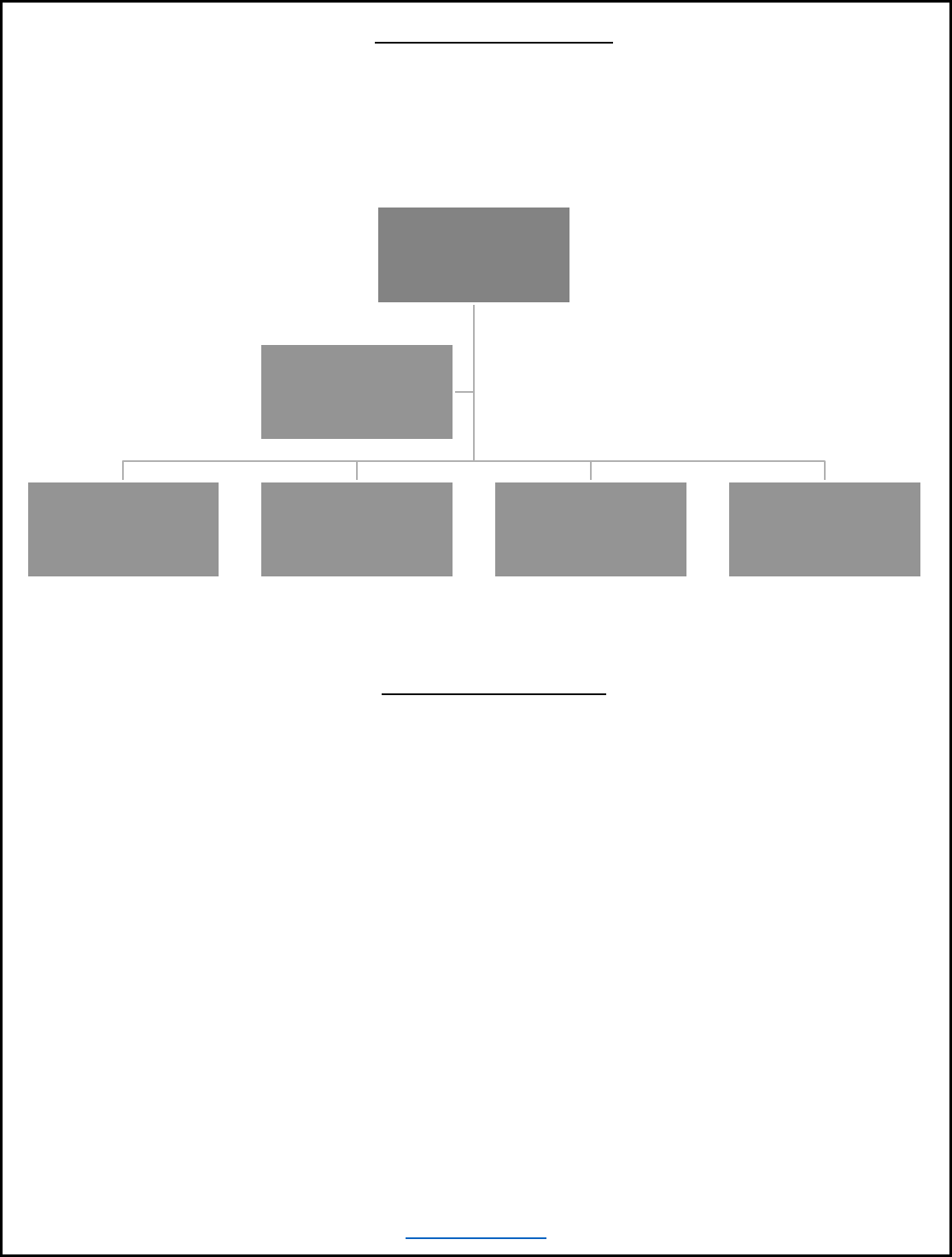
7
BACK TO TOP
Standard BLAM Construct
*Note* This based off the standard (Division Infantry Battalion) and minimal construct of
Battalion Administration Section. This can be tailored to fit any size BLAM
BLAM Billet Descriptions
Personnel Officer:
-
Direct and supervise the BLAM (Battalion Level Administrative Management) on matters
pertaining to personnel, manpower, legal, operational administration, and IPAC level functions.
-
Ensuring the proper management of the section’s training and professional development as well
as the Marines well-being.
-
Maintain oversight of all correspondence, the battalion awards program, unit diary, travel, joins,
separations and reporting requirements.
-
Responsible for all account maintenance, as well as the tracking, editing, reviewing, certifying and
approving of all authorizations and vouchers via Defense Travel System (DTS) as the DTS Approving
Official.
-
Serve as the Battalion's Agency Program Coordinator (APC) for the government travel charge card
program (GTCC).
-
Perform duties as the DM Manager, trusted agent and MCMEDS Case Administrator within
Drill Management
Module (DMM); ensuring proper completion and correctness of all Unit Muster Sheets and LOD cases.
-Serve as the site's Postal Officer, Privacy Act Coordinator & Limited Duty coordinator.
OPS NCO
Maintenance
NCO
Separations
NCO
Personnel
Chief
Personnel
Officer
Admin Chief

8
BACK TO TOP
Battalion Administrative Chief:
-
Supervise the administrative section to ensure timely and accurate submissions of all documents
pertaining to promotions, correspondence, Defense Travel System (DTS), drill attendance, records and
directives management, reporting to higher headquarters, postal, and awards.
-
Manage personnel assignments within the battalion to ensure compliance with the BIC assignment
policy.
-
Manage, supervise, and track the use and compliance of the government travel charge card
program (GTCCP).
-
Develop and manage the internal flow of administrative documents in accordance with all
applicable directives and coordinate with higher headquarters to submit all correspondence.
-
Lead, mentor, and supervise all subordinate Marines assigned to the staff, and ensure they receive
routine counseling, maintain all standards of personal appearance and physical fitness, and promote
professional and MOS development.
-
Manage all Battalion Line of Duty (LOD) and Med-Hold cases within the MCMEDS modules
as the Battalion
-
Manage all awards in iAPS overseeing the board’s process and ensuring the awards are approved in a
timely manner.
Personnel Chief:
-
Serve as the acting Administrative Chief in the absence of the Administrative Chief.
-
Serve as a DMM Muster Manager, submit muster attendance, and submit corrective actions, and
Export Muster Sheets for SMCR personnel.
-
Act as an alternate Citibank APC, submit GTCC applications and work monthly reports as required.
-
Serve as an Alternate Case Administrator for MCMEDS.
-
Act as the Ops/Maint chief to ensure that Joins, Separations, transfers, retirements, orders, and travel
claims are accurately prepared and certified.
-
Supervise the collection of documentation for unit diary reporting and the supervision of finalizing all
Diary feedback reports.
-
Pull and delegate the action of working the G-1 readiness reports to include the diary actions
-
Serve as the Battalion LDTA in DTS managing all DTS profiles and permissions throughout.
-
Serve as the Battalion Terminal Area Security Officer (TASO) to manage all MCTFS profiles
-
Lead, mentor, and supervise, all subordinate Marines assigned to the staff and ensure they
maintain a professional appearance and promote professional and MOS development.
Separations NCO:
-
Serve as the S-1 NCOIC by ensuring that the well-being, professionally and personally, of all the
Marines in the section are accounted for.
-
Serve as the battalion legal clerk to prepare AdSep Packages, Legal Boards, and NJPs. Track and
review all Command Legal Action (CLA) packages and functions for accuracy and timeliness while
maintaining the Battalion Legal Tracker.
-
Serve as the primary Separations/Outbound NCO. Track and review Separations and Outbound
occasions via the Outbound Interview Module (OBI) for the Active Duty RUC (ARUC: 46841). As
well as ensure separation and transfer orders for active and reserve are accurately completed in a timely
manner.
-
Prepare naval correspondence for the command as required.
-
Inspect and instruct 0111 Marines on administrative readiness MOS development for all functional areas.

9
BACK TO TOP
-
Complete all additional tasks as directed by the Personnel Officer and/or Administration Chief.
-
Prepare and submit all correspondence related to Separations and Outbound process (i.e. DD214/
NAVMC 11116/NAVMC 11060) via DTMS. This includes preparing and routing Transfer to IRR
Requests and Orders to completion.
- Receive, Track, and Register Service Treatment Records (STR) in STR Data Base. Also prepare
and Mail all STR’s for Marines separating from the unit.
Operations NCO:
- Serve as the Battalion Administration Operations NCO.
- Serve as the primary Order Writer for Marine Resource Order Writing System (MROWS) in the
case of H&S Co, CLB 451. Submit MROWS and any corrective actions for subordinate units as
needed.
- Monitor MROWS order writing for completion to track all MROWS periods for accurate
and timely submission.
- Report/Track all transactions and entitlements for CLB 451 MROWS periods (Primary: H&S Co).
- Serve duties as the Organizational Defense Travel Administrator (ODTA) in Defense Travel
System (DTS) and pull monthly reports.
- Prepare, Track, and/or submit Travel Claims (DD 1351-2)/DTS Vouchers for all Active Duty and
Reserve RUCS for H&S Co, CLB- 451 associated with TAD/TDY.
- Report all Perstempo and other entitlements for all TAD periods for active and reserve Rucs.
Administrative Maintenance NCO:
- Serve as the Battalion Administrative Maintenance NCO.
- Act as the primary preparer of Unit Diaries for the Active Duty and Reserve RUCS. Report
any/all transactions and corrections for subordinate units as needed.
- Print all Unit Diaries and Research Reports for certification daily to be submitted to Certifier.
- Assign all Diary Feedback Reports (DFRs) to appropriate units daily.
- Research and properly work Diary Feedback Report for the Active Duty and Reserve RUCS for
UNIT This is to include any DFR’s not completed by subordinates units within 9 calendar days.
- Responsible for Unit Diary breakdown (CART every Diary) to be completed weekly every Friday.
This also includes scanning and tracking inclusion of documents to member’s Electronic Service
Record (ESR) until completion. Additionally, ensure documents are properly filed in command files
IAW policy.
- Serve as a DMM Muster Official, submit muster attendance and IUTs for SMCR personnel.
- Serve as Primary MCMEDS Case Administrator to track progress of case files and facilitate
updates for individual cases as required.
- Serve as an alternate Order Writer for Marine Resource Order Writing System (MROWS).
- Prepare naval correspondence for the command as required.
- Inspect and instruct 0111 Marines on administrative readiness MOS development for all functional
areas.
- Complete all additional tasks as directed by the Personnel Officer and/or Administration Chief.

10
BACK TO TOP
0111 ADMINISTRATORS REQUIRED SYSTEMS OR ACCESS
Required systems or access:
To be more efficient, productive and to be able to accomplish the
administrative mission daily; the following systems are the most common and required for all
administrators, as applicable. Each administration chief should have permissions to all systems, and
the
administration clerk will have some level of access to all systems:
1.
Marine Corps Total Force System (MCTFS)
is used to research all needed
information on personnel records. Access is granted by the unit Terminal Area Security
Officer (TASO) via the auto SAAR through the following link https://autosaar.usmc.mil/.
2.
Functional Administrative Support Tool (FAST)
is a checklist tool that is to be
used by every administrator across MARFORRES for every administrative functional area.
It is a checklist that details how to perform any one administrative function. FAST
3.
Command Legal Action (CLA)
is a sub-module in MOL, it is used to
administratively process Marines for separation. Access is granted via DD 2875 SAAR to
MISSO via the trouble ticket process.
4.
Basic Orders
is a sub-module in UDMIPS, it is used to pull/view orders for
active-duty Marines.
5.
Outbound Interview is a sub-module in UDMIPS, it is used to review and
certify all PCS/PCA/Separation/Retirement orders that is submitted to the unit
administrators.
6.
Inbound Interview is a submodule in MOL, it is used to review and approve all inbound
PCS/PCA orders for Marines that are due to check in to the command.
7.
ODSE
is a MOL sub-module, it is used to pull/view various administrative reports
which enhances unit readiness. Access is granted via DD 2875 SAAR form submit to
MISSO via trouble ticket.
8.
Marine Reserve Orders Writing System (MROWS)
is a sub-module in MOL, it is
used to write and view orders for reserve Marines. Accesses granted via a DD 2875 SAAR
submitted to the MROWS helpdesk via email at mrowshelpdesk@usmc.mil.
9.
Document Tracking Management System (DTMS)
is a sub-module in MOL,it is
used to submit and track various pay and travel documents that are sent to the servicing
disbursing office. Access is granted by the ARUC manager via a DD577.
10.
Unit Diary Manpower Integrated Personnel System (UDMIPS),
is used to type and
transmit unit diaries. For Personnel Officer’s access is granted by MISSO via a submission of
assumption of command letter. All others access is granted by the certifying RUC’s manager
via a DD577.
11.
Defense Travel System (DTS),
is used by Marines to submit travel request

11
BACK TO TOP
authorizations and by unit administrator’s to manage, view, and approve requests.
Access is granted by the Battalion’s LDTA via DD 577 and training certificates for
appropriate assigned permissions.
12.
Drill Management Module (DMM),
is used to manage unit drills. It is also used to
access sub-modules, Marine Corps Medical Entitlement Database System (MCMEDS) and
Inventory Development and Management System (IDMS), in which units manage Line of
Duty cases and reserve manpower. Access for this system is granted by the command DM
manager via submission of a DD577 and access request in DMM
.
13.
Total Force Structure Management System (TFSMS),
is used to pull unit's Table
of Organization and Equipment (TO&E). Access is granted via request through the
TFSMS website at the following link TFSMS.
14.
Individual Awards Processing System (iAPS),
is used to submit awards. Access is
granted via the iAPS website by the Battalion via the following link IAPS
.
15.
Marine Corps Medical Entitlements Data System (MCMEDS)
The mission of
MCMEDS is to support the Reserve Medical Entitlements Determination (RMED) section
of the Wounded Warrior Regiment (WWR) in the submission, reporting, and tracking of
Line of Duty (LOD) and Medical Hold (Med Hold) benefits. Access is granted by the DM
Manager. DMM
16.
Official Military Personnel File (OMPF)
is a sub-module in MOL is used to
review documents Access is granted by the unit MOL coordinator.
17.
Inventory Development & Management System (IDMS),
is used for BIC
management. Access is granted by DM manager via DD form 577 signed by the Company
CO or any personnel with delegation authority for the CO. DMM
18.
Optical Digital Imaging-Records Management System (ODI-RMS),
issued to scan
and submit all documents required to be maintained in each Marine's OMPF. Access is
granted via a DD 2875 SAAR.
19.
City Bank Agency Program Coordinator (APC) Access,
required for personnel
designated as 'APC or Assistant APC to maintain the GTCC program. Access is granted
after completion of required training and appointed in writing by the Battalion Personnel
Officer or Battalion Administration Chief. You can access at the following link Citibank
20.
STR Registry,
is used to prepare Service Treatment Records (STRs) for
shipment. Access is granted via the website upon request. You can access at the
following link STR Registry
21.
Manpower Command Profile (MCP)
is an application that gives users the ability
to view data about their Co/Det's. Users can view data ranging from Marine Corps-wide
down to Reporting Unit Code (RUC)/Monitored Command Code (MCC) by adjusting the
filter settings. Access is granted via the M&RA portal.

12
BACK TO TOP
22.
Manpower Information Systems Support Office Procedures Manpower
Information Systems Support Office Procedures (MISSA/MISSO) Portal
Serves as a
central hub for administrators to find administrative references as well as submit work
request for administrative issues that units are not able to reconcile at the unit level.
23.
Account Management and Processing System (AMPS) serves as the central hub for
administrators to locate other services LES in order to process member to member audits.
You
can access at the following link
AMPS
24.
SharePoint
is how the battalion will share and use common documents, tasks, and
information.
Online References:
a.
MCTFSPRIUM - Marine Corps Total Force System Personnel Reporting
Instructions User's Manual.
This is the guide used for unit diary reporting. This manual is
very useful when communicating with the S-1 for unit diary updating.
https://eis.usmc.mil/sites/missa/reference.aspx?ref=prium\
b. MARADMINS/ALMARS – MARADMINS and ALMARS are messages released from
HQMC and official branches of. They are intended to inform a mass audience of upcoming and
released guidance. Examples of released messages are awards updates, promotion selections,
convening boards, etc.
c.
MCTFSAPSM - Marine Corps Total Force System Automated Pay Systems
Manual. This is the guide used by the Disbursing Office for unit diary reporting within the
Finance office and by administrative personnel to prepare documents for submission to the
finance office. https://www.manpower.usmc.mil/portal/page/portal/M RA
HOME/MI/Finance%20Policy
d.
On-Line Codes Manual - This manual provides codes used in unit diary reporting
and is a useful tool when reviewing personnel records. This manual can be found at:
https://www.manpower.usmc.mil/lookups/lookups/lookups.action
e.
MISSA/MISSO - The MISSOs are sub units of the MISSA and are assigned a region
to supports all units within that region. This website provides access to important reference
information including the MCTFSPRIUM, PAAs, PAANs, TANs. The local MISSO is a great
source for information regarding MCTFS systems, MOL modules and assistance with
establishing permissions in MOL, and providing training and access to Report Studio. It also
maintains links to important sites including MOL. It contains links to references including the
DODFMR, JTR, on-line codes manual (Manpower Look-up Tables), and MARADMINs.
Use
the following link to access the website:
MISSO 16/17. Your servicing MISSO is
MISSO
16/17 KANSAS CITY, MO
(816) 394-7706 DSN 465-7706, FAX 394-7758.

13
BACK TO TOP
MARINE CORPS ORDERS
1. SECNAVIST 1650.1J (AWARDS MANUAL)
2. DOD FMR 7000.14 VOL 7A (FINANCIAL MANAGEMENT REGULATIONS)
3. JAGINST 5800.7F (JAG MANUAL)
4. JOINT TRAVEL REGULATIONS (JTR)
5. MCO 1001R.1L (MARINE CORPS RESERVE ADMINISTRATION MANAGEMENT MANUAL)
6. MCO 1050.3J (LEAVE MANUAL)
7. MCO 1740.13C (FAMILY CARE PLAN MANUAL)
8. MCO 1741.8 (LIFE INSURANCE MANUAL)
9. MCO 1900.16 CH 2 (SEPARATIONS MANUAL)
10. MCO 3040.4 (CACO MANUAL)
11. MCO 3061.1 (TOTAL FORCE MOBILIZATION AND DEPLOYMENT PLAN)
12. MCO 4600.40B (GTCC MANUAL)
13. MCO 4650.39A (DTS MANUAL)
14. MCO 5110.4A (POSTAL MANUAL)
15. MCO 5215.1K (DIRECTIVES MANAGEMENT)
16. MCO 5800.16 CH 7 (LEGAL SUPPORT ADMINISTRATION MANUAL)
17. MCO 6100.3A (PFT-CFT MANUAL)
18. MCO 6320.2E (MEDICAL- ADMIN MANUAL)
19. MCO P1070.2K CH 1 (IRAM)
20. MCO P1400.32D (PROMOTIONS MANUAL)
21. MCO 1610.7F (PES MANUAL)
22. MCO 1751.3F (BAH MANUAL)
23. MCO 5210.11F (RECORDS MANAGEMENT)
24. SECNAV 5216.5 (CORRESPONDENCE MANUAL)
25. MANUAL FOR COURT MARTIALS
26. MCO 3000.18B (MARINE CORPS FORCE DEPLOYMENT PLANNING AND EXECUTION)
27. MCO 1800.11 (POLICY AND PROCEDURES FOR RESERVE COMPONENT MEMBERS 16 YEARS AND BEYOND)

15
BACK TO TOP
BATTLE RHYTHM
Battle Rhythm: The purpose of a battle rhythm serves as two purposes. The first being that it keeps
the administrator on track to complete all daily, weekly, and monthly tasks assigned to them. Secondly,
it lets the leadership know what the Marine is doing from moment to moment to keep up with extra
tasks that may be assigned. Below is a typical battle rhythm outline for an administrator on I-I duty.
There is also an external one linked here for print
Battle Rhythm
Daily Requirements
Requirement
Notes
Read MARADMINs/PAAs/PAANs/TANs
Review message Notes
Marine On Line (MOL)
1.
Daily Morning Report
2.
Approve leave pending requests.
3.
Check-out/Check-in as needed.
Check Emails at 0800, 1300, and 1600
Sort and save emails for response/work/delegate
(Take 30 minutes to respond or delegate)
Meet with Admin Chief
Delegate and assign responsibilities for the day
Billet Identification Codes (BIC)
1.
Every morning, BIC assignments should be
validated via IDMS (within RTAMMS on
M&RA Webpage).
2.
Every Saturday of Drill Weekend,
BIC assignments should be validated
via IDMS.
Unit Diary
1.
Work tickler for any pending action for the
day (or weekend).
2.
Certify Unit Diaries
3.
Give source documents to Files Clerk
Diary Feedback Reports
1.
Verify the DFR’s to ensure accurate close out
2.
Certify cycles once complete
Documents Tracking Management System (DTMS)
1.
Look in DTMS inbox and forward to
disbursing if complete
2.
Reject any Quads, 11060’s, travel claims that
are incorrect.
3.
Ensure all travel claims are submitted (DTMS
and DTS) and once settled vouchers are audited.
DD214
Certify any DD214s as necessary for separating
Marines (note that new drop system will drop
Marines based on completion of the DD214).
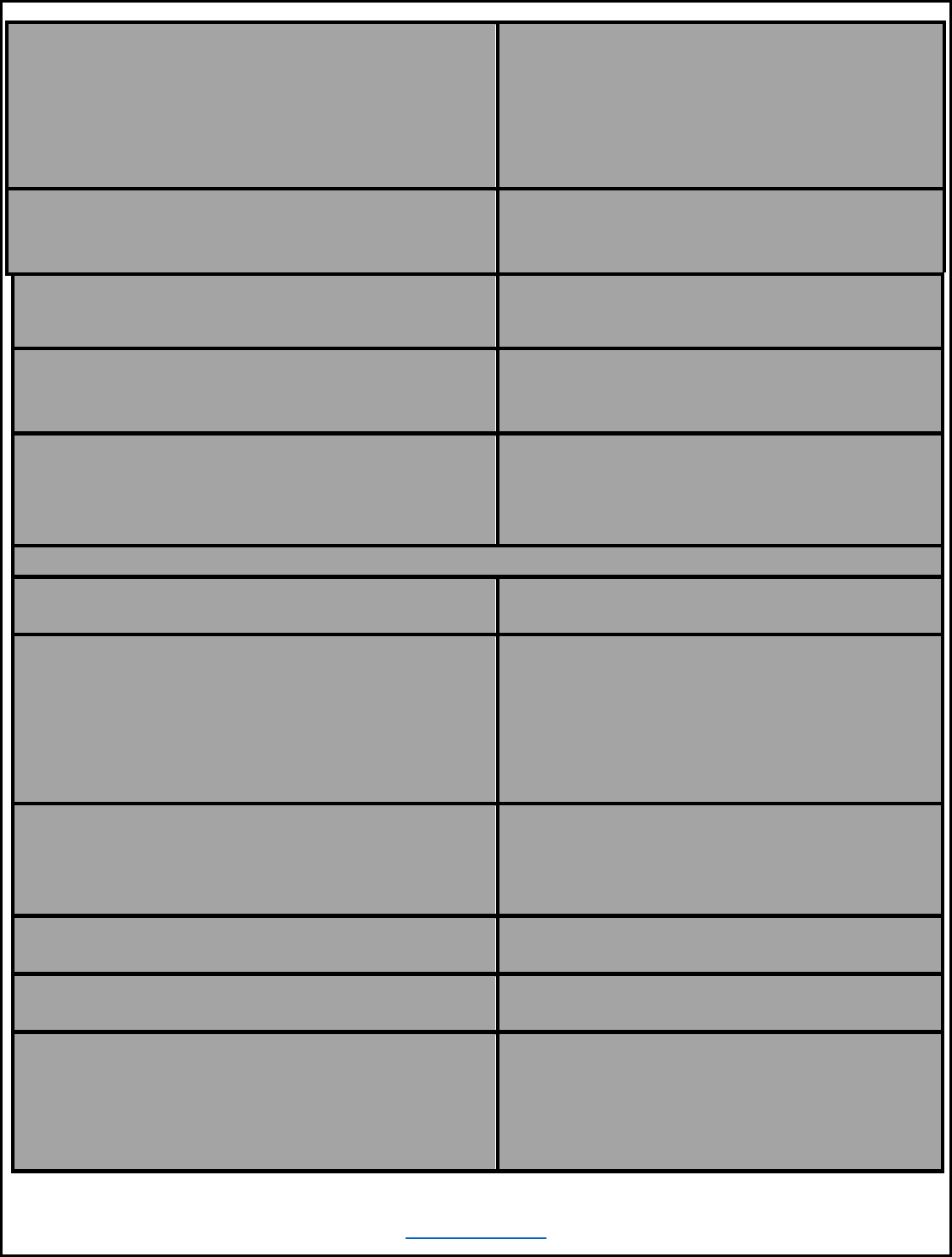
16
BACK TO TOP
Command Legal Action (CLA) Administrative
Separations (MOL)
1.
Quick review to ensure Marines are
working packages as they come in
2.
Track packages being processed
3.
Correct packages returned for errors.
4.
Separate Marines upon receipt of
discharge authority.
Drill Manager Module (DMM) within RTAMMS on
M&RA Webpage
1.
Certify any drills that have been submitted
2.
Approve any pending drill requests
3.
Review for any pending requests. Approve any
corrective action
4. Review for any Marines scheduled to perform
IDT.
Marine Reserve Order Writing System (MROWS)
1.
Review any orders with Hard Holds
2.
Authenticate orders ready for authentication.
3.
Ensure orders are placed in tickler for
reportable actions on effective date.
Weekly Requirements
Complete 2d stage Audits every Monday from
the previous week
within 60 days of the date of join
Verify NOBE, VA Pension, Family Care Plans, etc.
Every Tuesday pull the G1 readiness reports
1. Validate information and consolidate to 1
excel document
2. Calculate readiness at sites
3. Email and inform administrators to take action
4. Close outs are due prior to next pull (Monday)
Command Legal Actions (CLA)
1. Track Weekly
2. ensure Strength Category “X” is submitted
and required pg. 11 entry completed upon
package being sent to the GCMCA (MSC)
Service Treatment Records (STRs)
Ensure the mail clerk mails out STRs every
Wednesday
Administrative Assistance Unit (AAU) Weekly Admin
Updates
1. Read and inform others of any pertinent changes
DTS Reports
1. Pull & Work Un-submitted Vouchers
2. Depart Status Report
3. Run PERSTEMPO (as required with this report)
4. Pull and work the special duty pay report to
report DMR
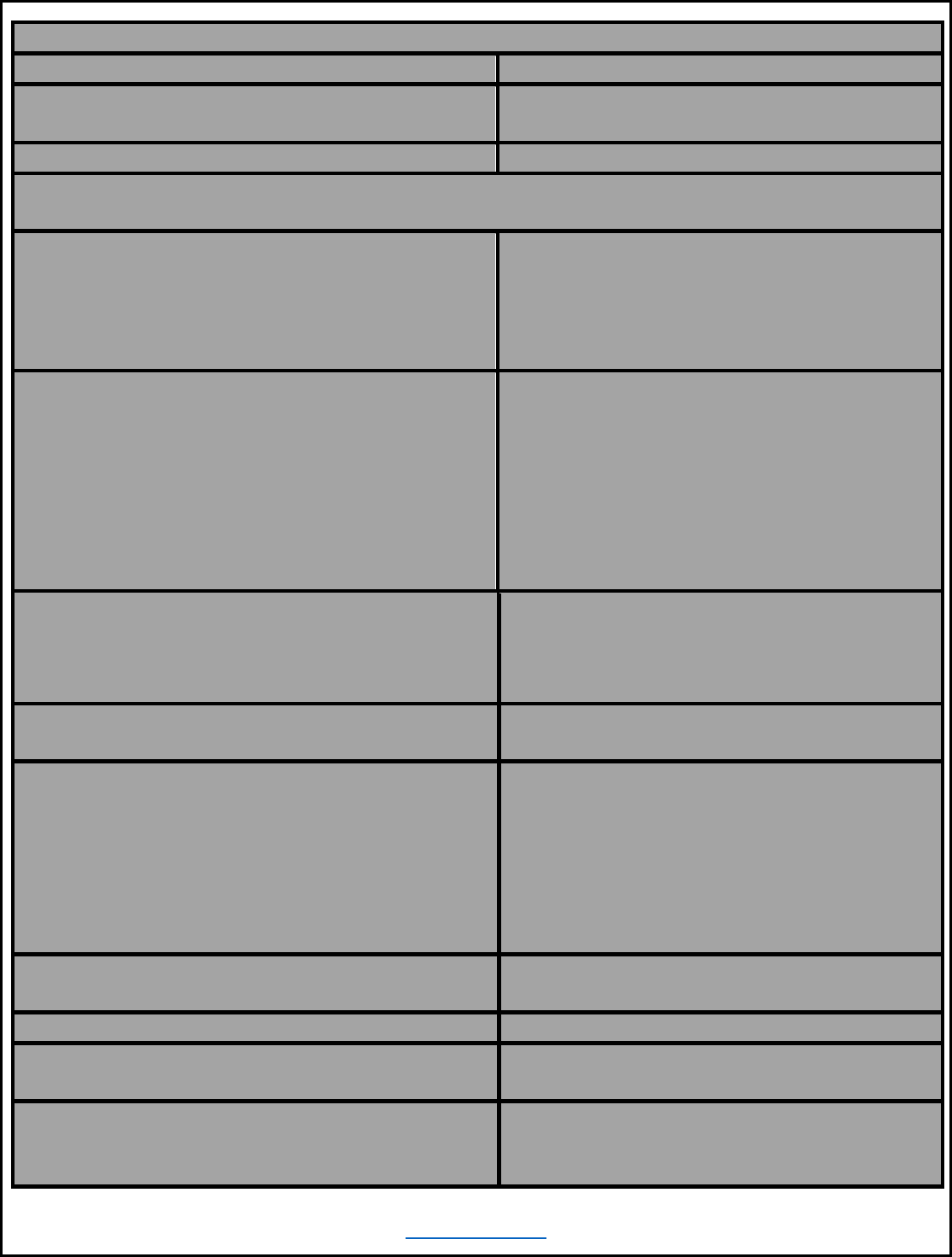
17
BACK TO TOP
Bi-Monthly Requirements
DTS Report for FDTA
Approved Status Report
Pull pay roster (after U&E for each payday)
Verify that payment amounts are as expected
(variances from previous payday should be audited
Admin Chiefs Meeting
Every 1st and 3rd Thursday of the month
Monthly Requirements
GTCC
on or about the 1st pull the last delinquency report
prior to cycle on the 6
th
GTCC
1. After the 6th of the month pull reports
a. Delinquency
b. Aging Analysis
c. Aging Analysis Summary
d. Account Listing
e. Account Activity
2. Alternate APC completes 60, 90, or 120
delinquency letters when required)
GTCC
After delinquency report is pulled send Admin
chiefs
the assignment of a PI for all 60, 90, 120
delinquencies
Awards
As required except GCM/SMCR/AFRM which you
shall pull a roster monthly and complete
Promotions
1. Admin chiefs will send the select grade
roster to Battalion
2. Ensure the Promotions clerk works all the
promotion warrants for the Battalion
3. Warrants must be sent out the last Friday of
every month with the select grade rosters
DTS Report for ODTA
Travel clerk pulls the Complete Travelers
Information Report
DTS Report for FDTA
Travel clerk pulls the Budget Transaction Report
Pull U&E/events Calendar from MISSO website
The first of the month use to verify U&E and
Promotions dates
Day after monthly drills are exported Pull Paid Drill
Roster
Have the pay clerk verify payment of mustered
Marines, Verify number of drills remaining less
than
scheduled for next month

18
BACK TO TOP
Create Drill Folder (Day Prior to drill weekend)
Task the Admin chief to create for the next month
1. Muster sheets
2. Excused absences
3. Unexcused absences
4. Scheduled RIDT’s
5. Unit contact report
6. Drill weekend I-I hit list with rosters if needed
Audits (first day of each month)
1. Pull report to see if any triennial audits are
required and conduct them
2. Ensure all member to member audits are
conducted on the 15th of each month if needed
3. Ensure dependents over 21 audits are conducted
Promotions
1. Will not promote for previous month’s Marines
that unit failed to non-rec but were selected (page
11)(between the 1-6 of each month)
2. Will Not Promote – Last day entry can be run is
the 5th of the month for the previous month (page
11 required) (between the 1-6 of each month)
3. Delete as erroneous Promotion – Can be run
up to the point the Marine physically pins on the
rank (between the 7-13 of each month)
4. Non-Recs due by the 10th and certified by
15th (complete page 11s)
5. first day that will not promotes can be entered is
the 16th of the month of the promotion (5th of next
month is last)
6. Composite scores calculated (verify on the
MISSO cycle calendar the day for each
month/quarter)
7. Selections (verify on the MISSO cycle calendar
the day for each month/quarter)
8. Create the Next Month’s promotion folder
JEPES
1. On the first Monday of the month the
promotions clerk will work all remedials
in JEPES.
2. The promotions clerk will also verify
that all Marines have no overlapping
occasions nor missing occasion.

19
BACK TO TOP
3. All Marines that go TAD, transfer to
AD, go on orders less than 30 days rate
an occasion
NAVMC 11378/11379 SGLI termination letters are
mailed via certified Mail
4. Upon 9th consecutive UA notification
sent on the next work day after drill
weekend
5. 60 days later notification of termination
Notice of Unsatisfactory Participation Letters mailed
via certified mail
Upon completion of drill, complete and mail out via
certified mail, notices of unsatisfactory
participation for those that had unexcused
absences.
Limited Duty Coordinator and Medical reconciliation
1. Reach out to medical to ensure receipt of
monthly medical updates.
2. Pull limited duty reports and update
tracker as needed prior and after drill
weekend.
3. Provide training (S-3) a copy of the medical
status report to ensure all training events are
reported correctly.
4. Marine Corps Medical Entitlements Data
System (MCMEDS): Non-Compliance Report
is retrieved,
worked and corrective actions taken.
Special and Hazardous Duty Letters
1. As required, obtain letters of authorization from
the S-3
2. Stop/Start entitlements as required
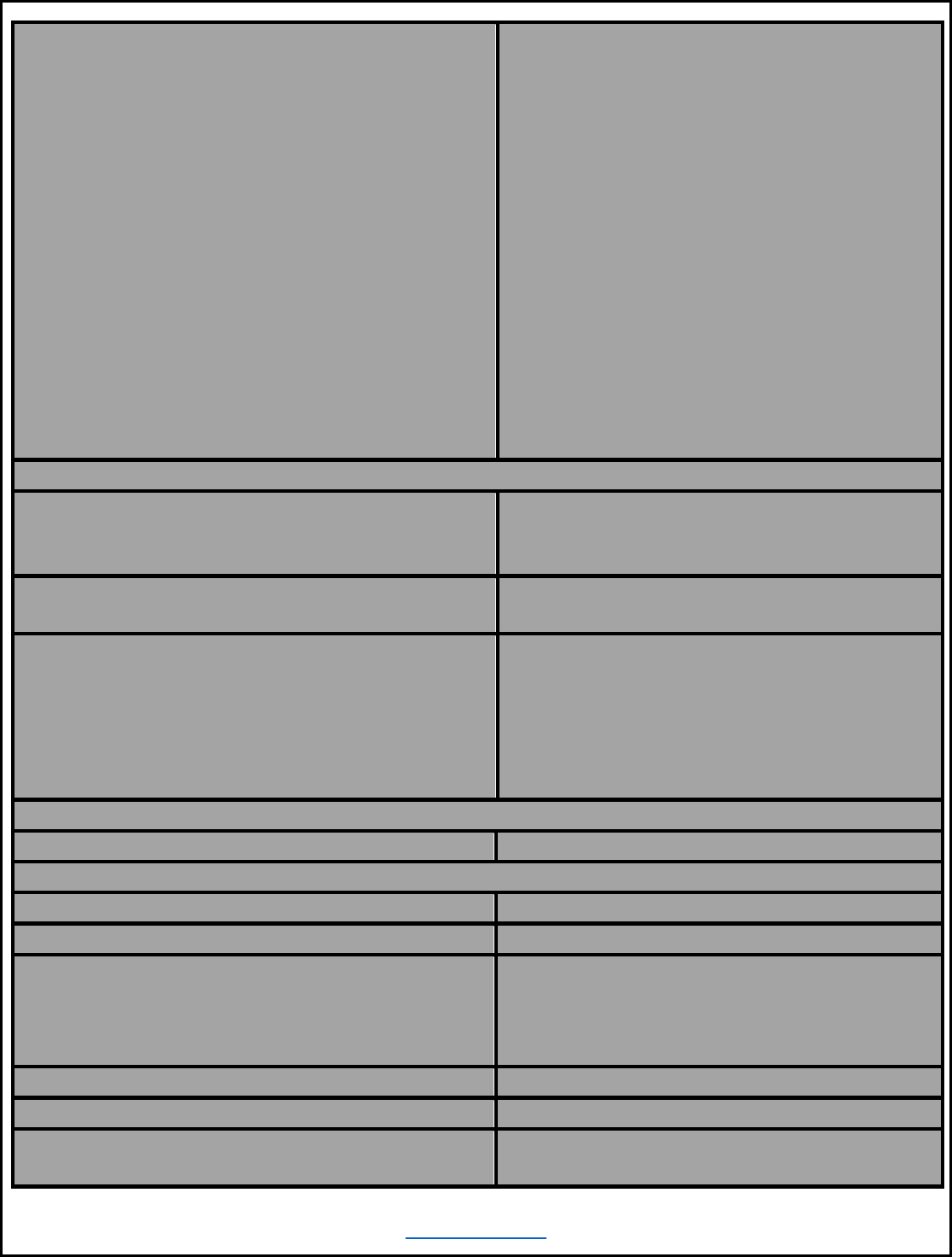
20
BACK TO TOP
Competency Review Boards
1. Confirm board membership letters are complete.
2. Schedule board.
3. Send out notification letters for the next
month’s board.
4. Hold current month’s board
5. Obtain board report and send to the
promotion authority if at a higher level than
your command.
6. Create reduction letter for promotion
authority’s signature.
7. Mail reduction letter to Marine.
8. Report reduction. Note that this is
administrative in nature and DOR should be the
date the Marine
previously held the rank to which they have been
reduced.
Quarterly Requirements
Promotions
Reserve promotions for E-4, and E5 (January, April,
July, October) select grade rosters and advisory
posted on or about the 23rd each month
QCAR Legal Report
legal report to your next higher level of command
(check with MSC on actual due dates)
Work Unliquidated Orders
1. Identify, retrieve, work adjustments as
necessary in the budget system for orders settled
or cancellation of orders not executed (S-1/S-4
together)
2. Set meeting to consolidate information
Semi-Annual Requirements
JEPES Occasions
active duty and AR Marines
Annual Requirements
Special Leave Accrual Packages
Work each September
Career Planner Letters for Special Duty Pay
Requires a new letter authorizing payment each year
Command Chronology
Recommend data collection throughout year but
begin
to prepare for submission to the S-3/G-3 by
November of each year.
Reserve JEPES occasion
Reserve Marines are due December 31
Command Files
Create, Transfer, Destroy as required (December)
DTS
Annual Certifying Officers Legislation refresher
training for all level 2 permission holders.

21
BACK TO TOP
Annual Training
1. Audits Completed NET 60 days prior to start of
AT
2. AT JEPES occasions completed within 90
days of completion of AT
3. Ensure all AT orders, LOI and manifest
and any other pertinent documents are
filed properly in the deployments and
exercises files
4. File all AT files in a binder labeled by exercise
and rotation with the following:
-
orders
-
audit
-
travel claim
-
fast and ipp checklist
GTCC APC Unit Training
Conduct Yearly training for all GTCC holders in
command

22
BACK TO TOP
ADMINISTRATIVE
TEMPLATES
1.
150 Mile Distance Waiver
2.
6105 Template (Blank)
3.
6105 (Alcohol Related Incident)
4.
6105 (BCP Initial)
5.
6105 (BCP Extension)
6.
6105 (BCP Adsep)
7.
6105 (PFT/CFT Failure)
8.
6105 (Positive Urinalysis)
9.
6105 (Promotion Restriction)
10.
6105 (Required did not take PFT/CFT)
11.
AA Form (NAVMC 10274)
12.
Acting Letter
13.
Appendix J (Active-Duty Retirement Request)
14.
Assumption of Command
15.
AT Endorsement Letter
16.
AT Waiver Endorsement
17.
BAH Policy Template
18.
BAS Policy Template
19.
Carry Over Leave Statement
20.
Continuation Pay (Active)
21.
Continuation Pay (Reserve)
22.
Conditional Release (DD 368)
23.
COLA Form (NAVMC 11106)
24.
DD 577 (Blank)
25.
Dependency Application (NAVMC 10922)
26.
Dependency Statement-Full Time Statement (DD 137-6)
27.
Discharge Certificate
28.
DLA Form
29.
Enlistment Contract (DD Form 4)
30.
Employment Letter
31.
Family Separation Allowance (DD 1561)
32.
IPP Checklist

23
BACK TO TOP
33.
Member to Member Data Sheet
34.
MFR Inter-Unit Transfer Checklist
35.
MGIB Basic Election (DD 2366)
36.
Notice of SGLI Termination (NAVMC 11378)
37.
Notice of SGLI Termination Final (NAVMC 11379)
38.
NAVMC 799
39.
Notice of Basic Eligibility
40.
Non-Medical Assessment
41.
Notice of Waiver of VA Compensation
42.
OCONUS SOU
43.
OCONUS Area Clearance
44.
OCONUS DMO Credit Card Authorization
45.
Off Site IDT Travel SOU
46.
Pg 11 (Blank)
47.
Pg 11 (GTCC Misuse)
48.
Pg11 (GCM Election)
49.
Pg 11 (Non-Rec JEPES)
50.
Pg 11 (PME)
51.
Release from Active-Duty Endorsement
52.
Reporting/Detaching Endorsement (Reserve Orders)
53.
Reporting/Detaching Endorsement (Active Duty)
54.
Reporting Endorsement (Reserve Join)
55.
Reserve Retirement Request
56.
Shared Room Lodging Statement
57.
State of Legal Residence (DD 2058)
58.
Statement in Lieu of Receipts
59.
Statement of Service
60.
TLE Form
61.
Travel Claim Checklist
62.
Travel Voucher (DD 1351-2)
63.
Transfer to the IRR
64.
Officer Promotion Warrant Reprint

24
BACK TO TOP
ADOS (Active-Duty Operational Support)
ADOS: is a valuable tool for a unit to maintain readiness and is used often. S-1’s job is to ensure MROWS
orders are completed prior to as well as DTS authorizations, if applicable. There are several types of ADOS such
as, Funeral Honors (PID G), Operational (PID Q), Off-Site (IDT) Orders (PID 2), Annual Training (AT) Orders
(PID 1) etc. These are the most common types of orders an administrator will write daily.
*If MROWS orders or DTS authorizations (if applicable) are not completed prior to the start date of the
orders, the orders will be cancelled.
*Sites are responsible for ensuring the Marine’s GTCC is activated for the orders as well as reminding them of
the do’s and do not’s regarding the use of the GTCC.
1. Prior to writing MROWS orders
a. Ensure primary residence is current and up to date in MCTFS
b. Ensure individual has a valid GTCC in hand and GTCC profile is current
c. Ensure DTS profile is current (especially GTCC and EFT info)
2. When preparing MROWS orders
a. Ensure local commuting distance questions are answered correctly as it is a determining factor in
what type of travel reimbursement system is used for the set of orders
(1)
Within corporate city limits (lives in the same city as the HTC) (1351-2)
(2)
Within the local commuting distance (lives within 50 miles of the HTC) (Reserve Travel
Module)
(3)
Outside of local commuting distance (lives outside 50 miles from HTC) (DTS)
b. If written as reporting, which all ADOS orders should unless directed not to, a
reporting/detaching endorsement must be completed
3. DTS Authorizations Process
a. DTS Cover Sheet and MROWS must be attached to authorization
b. Ensure estimated expenses are included on authorization (mileage, hotel tax, etc)
c. If l
odging is booked through DTS, receipt from Alamo must be obtained to claim the service
fee and uploaded on the voucher
d. Authorization can be signed by the individual or T-entered
e. Once signed it goes to the site reviewer and should be pushed up right after authorization is signed or
T-
Entered
f. MFR assigns line of accounting and certifies authorization
g. BN PersO or BN Admin Chief approves the authorization (must occur prior to start date of orders or
they will be cancelled)
4. In Progress Payments
a. Orders longer than 12 days in duration will be paid at least two IPPs (Flag C and Flag F)
*include S982 screen from MCTFS when reporting IPPs after the initial payment
b. Orders less than 12 days in duration can have just one IPP reported (Flag F)
c. Source documentation for final IPPs is a completed travel claim with MROWS orders
d. For Reserve Travel Module Claims, provide the tracking history from DTMS showing the date the
Marine submitted the claim
e. For Admin Claims, include the travel claim with the reporting/detaching endorsement

25
BACK TO TOP
5. Travel Claim Process
a. All Marines conducting ADOS at the HTCs will complete their travel claims, regardless of the
system used, on the last day of ADOS prior to departing the HTC.
b. DTS vouchers should include any applicable receipts
c. Once the individual signs the voucher, (if T-Entered, a signed travel claim must be uploaded to the
voucher) the Reviewer at the site should review the voucher for accuracy and ensure the amount
going to the GTCC covers the balance.
*Note* DTS vouchers should be certified by the BN PersO or BN Admin Chief and sent to Disbursing the same
day the orders end.

26
BACK TO TOP
Annual Training (AT)
AT: A Marine is required to attend a 2 week or 14-day AT on an annual basis. If this requirement is
not met the Marine could be considered an unsatisfactory participant. However, if a Marine has done
over 14 days on any set of active duty order they are considered to have met the requirement and can
opt to not participate in the AT. If a Marine does not participate in an AT the Battalion CO must
approve of this in writing using the attached template for waived AT. You access the following link to
verify all pay and entitlements have posted:
AT Tool
1.
To prepare for Annual Training, the S-1 section must be in constant communication with the S-3 or
operations section. The S-3 will generate a manning document that will give you the head count
and name of Marine’s attending an AT. Once you have established who will attend and given AT
you will proceed with the following:
a.
Draft MROWS Orders:
(a)
As a preparer in MROWS you will create a selection list in MROWS by populating all the
EDIPI’s into the list and label the list the name of the AT rotation.
(b)
Once the list has been created you will create the orders template by starting at the
members home of record and proceeding to the home training center lastly ending in the
same manner as they proceeded to AT.
(c)
Once the template is created you will load the selection into the template thus creating
orders for the entire manning document. Pay particular attention to when you submit as
most of the Marines will go to either funding or hard hold. For the Marines in hard hold,
you must give justification as to why they should be released form hard hold.
b.
Print AT Audits:
(a)
All members attending any AT must have an audit conducted no earlier than 90 days before
execution of the AT. For example, if the Marine is attending an AT on 1 July the earliest
you can conduct the audit with the Marine is April 2.
(b)
You will print all of these audits out on or after the 90 day mark as the audits are dated
electronically. Ideally you will conduct the audits at the next drill weekend after the 90
days. You will conduct a mass audit with the Marines by instructing the Marines where to
sign and date all at once. At a minimum, the Marines must fill cross out and date the BAH
certification, Annual certification, CRCR certification, and RED certification. Every page
that has a location for the member to sign and/or date you will instruct them to do so. Verify
that the Marine has done so.
(c)
The Marines will also sign and date their orders for AT in the same instance to ensure they
understand their dates and travel.
(d)
Sample AT Audit

27
BACK TO TOP
c.
Complete Travel Claims:
(a)
After the Marines have officially left for AT you will begin to draft the electronic 1351-2’s
(travel claims) in DTMS. At no time will you print off a blank travel claim and hand write
the locations and information in.
(b)
You will begin to draft the travel claims and leave them in DTMS until they are due to
return from AT. This will prevent you from printing them off too early if they happen to
return on a different date.
(c)
Once the Marine has returned, they will give you receipts for anything under 75.00
dollars and is considered a reimbursable expense.
(d)
The travel claim must be submitted to disbursing within 5 working days of the
Marine returning from travel.
(e)
After submitting the travel claim you will place it in the working tickler file and check the
status of the claim weekly. Once the claim is properly closed out you can file the claim
away.
(f)
If the claim is missing entitlements or not properly paid out you will then need to submit
a supplemental travel claim.
d.
Supplemental Travel Claims:
(a)
If a supplemental is warranted the administrator must initiate a new travel claim under
the same SDN. This will then open a supplemental claim

28
BACK TO TOP
Audits
1. Stage One: Upon arrival at the new permanent duty station, an interview with the Marine will be
conducted. All members, to include those that are single will certify their entitlement to BAH. A
Permanent Change of Assignment (PCA), where the Admin RUC does not change, will not require
a first stage audit; however, a second stage audit focusing on pay entitlements is required.
2. Audit documents include the MCTFS Option N, CHRO, DRS, and SGLI Online Enrollment
System (SOES) certificate.
3. The auditor will compare data in MCTFS and the information contained in the Electronic Service
Record (ESR)
4. In addition to the above, Reserve personnel will verify their retirement credit history and complete
the VA-Form 21-8951-2 waiver of VA compensation as necessary.
a. The CRCR will be reviewed against local records and corrective action taken, as required. If a
CRCR does not exist, a new one must be created and certified as correct by the Marine
utilizing available records. Once the review of the CRCR is complete, the CRCR Certification
Date transaction (TTC 922 000) will be reported to record the annual administrative review of
the reservist's retirement credit history.
b. Ensure the Reserve Mobilization Statement is certified on the BIR.
5. Stage two: Once the join posts the auditor is responsible to ensure the accuracy of MCTFS data,
pay and allowances, validate that all required documents are in the ESR; there should be no
disagreement between MCTFS and the ESR. This stage of the Join Audit does not require the
physical presence of the Marine. This stage of the audit must be completed within 60 days of the
Marine's date joined present unit. Validation of this process will be completed by completing the
second stage portion of the join/triennial checklist (Table 12-3). There is no requirement to wait for
the 520/521 to post to complete a second stage audit. The Finance Office is responsible for the
audit of pay and allowances during elapsed time.
6. Audit tools for the completion of this requirement may include the Leave and Earnings Statement
(LES), MCAAT printouts, TRS Remark Summary in MCTFS, Travel Claim and Disbursing Office
Voucher (DOV) (if available), and Cognos Business Intelligence (ReportNet).
New Joins Process:
1. The join process, if done correctly, covers many areas of the G-1 Monthly Status Report (BIC, Primary
Residence, ESR, GTCC, and SOES). This is a time consuming process, but taking the time to complete
everything while you have the Marine sitting in front of you will save you time in the long run.
2. Site administrators are responsible for tracking their own inbound roster to include the assignment
of sponsors, sponsorship letters, and the completion of the Independent Duty Checklist. All joins
will be uploaded to the Battalion New Joins Case Files via the battalion SharePoint. The

29
BACK TO TOP
certifying official will validate that the new join package is submitted and in accordance with this
policy. A SMCR Join Audit is attached as an example to follow SMCR Join Audit
3. All Marines, Active or Reserve, will conduct a new join audit; unit administrators must conduct a
new join audit, immediately. The unit administrators will immediately create and endorse the
reporting endorsement dating it the day the Marine reported in. An audit is required for reserve
Marines even when transferring to active-duty orders over 30 days.
*Note*- All SMCR Marines will be joined the day following their release from active duty regardless
of circumstance.
4. After the reporting endorsement has been submitted, the unit will conduct a New Join audit and
travel claim utilizing the FAST checklist and the unit diary SOP, enclosure (3).
5. Unit administrators must complete the checklist Unit Diary entries and submit a unit diary with all
source documents no later than the day after the Marine reports to the company or the drop has
occurred from the previous command. If unable to submit in a timely manner due to the Marine not
being dropped from active duty, the site must notify the battalion or company S-1 Section by the
third day from the join.
6. For SMCR Marines being released from active duty, the unit administrators must verify that the
Marine has been properly dropped and the last DD 214 and 11060 were completed accurately.
7. For initial pipeline Marines (IADT), company administrators must scan the Marine’s Service
Record Book (SRB) as part of the New Join diary and report the “ER” training code.
8. New Join audits must include the CHRO from reports and an audit of the Marine’s Electronic
Service Record. As required, the following also need to be completed: CRCR, Notice of Basic
Eligibility (NOBE), SGLI Online Enrollment System (SOES), and Primary Residence form, GTCC
application and SOU, DTS profile created or pulled into hierarchy, and other supporting documents.
9. Unit administrators are responsible for submitting the travel claim to the Disbursing Office via
DTMS before the Marine departs to his/her home of record. If unable to submit before the member’s
departure, the administrators must contact the battalion or company S-1 Section for assistance. The
travel claim must be submitted no later than 5 days from check in.
10. Second stage audits will be completed by the battalion and company administrative sections
every Friday.
a. Second Stage Audit Requirements
b.
FAST checklist required for all Stage Two audits.
(1)
Remarks summary from MCTFS (annotated to show entitlements were reviewed
and started/stopped correctly)
(2)
*While travel claims are not part of the stage two audit, the travel claim must be audited
upon it being paid out by disbursing to ensure proper payment.
c. Unit Diary Submission

30
BACK TO TOP
(1)
Stage Two Audits will be reported on Unit Diary every other Monday (or first
workday of the week) for all new joins (Active and Reserve) from the previous
week.
(2)
Stage Two Audits will be submitted in the following order:
- FAST Checklist (filled out, signed and dated by auditor)
- LES
- Remark Summary from MCTFS
- Source docs for any diary action required to correct entitlements (if appl.)
*11116’s will be submitted prior to the Z2 training event code to correct any entitlements for
SMCR Marines that cannot be corrected at this command via Unit Diary (if applicable)
3. Supplemental Travel Claims will be submitted by site administrators.
Document Tracking Management System (DTMS)
The DTMS module is located within MOL. The system is used to submit travel claims,
11060’s (final pay), and 11116 (request for special payments), and draft and submit DD214’s. This
system is set up to automatically register any information for a Marine using their EDIPI. It will
electronically store all information entered into the system.
1. The utilization of DTMS is mandated to use throughout the battalion and will be utilized
electronically no administrator should be submitted any hand written documentation into the
system.
Additional Audit Requirements
SOES – SGLI Online Enrollment System
Reference: MarAdmin 139/19
1. Per the reference, all Marines are to complete their SGLI via SOES. The paper copy SGLI form that
used to be used is for emergencies only. Paper copies of the SGLI will not be accepted as well as the
SGLI TTC being reported on unit diary. This is on the individual to complete, but it is S-1’s job to
make them aware of the requirement and ensure it gets done.
a. Below are the steps to follow to complete this requirement:
(1)
login to MilConnect https://milconnect-pki.dmdc.osd.mil/milconnect/ (CAC card or login
and password capable)
(2)
click on benefits
(3)
click on life insurance (SOES) under the benefits tab
(4)
click continue at the bottom

31
BACK TO TOP
(5)
verify your information is correct
(6)
Click on every tab an input the correct info (Your Coverage/edit coverage/edit
beneficiaries)
(7)
Sign once you go through all tabs
b. Confirm and certify portion
(1)
check the boxes confirming understanding of all the information on the screen
(2)
select continue
(3)
enter name and email and check the box digitally signing the document
(4)
a window will pop up saying the effective date of your SGLI beneficiary election is
xx/xx/xxxx
(5)
another window will pop up saying you have completed certification of your SGLI
coverage and beneficiaries
(6)
it gives you the option to print your SGLI and it should have the Marine's digital signature
This process triggers a diary entry that will update the Marine's VA Certification Date within a day or
two depending on whether there is a cycle the day they certified their SGLI.
*SOES completion is tracked on the G-1 Monthly Status Report as well as a FRAAP requirement
GTCC- Government Travel Charge Card
Reference: MCO 4600.40B
All Marines (Active Duty or Reserve) are required to possess a GTCC. This is part of the new
join process, and the account should either be brought into the appropriate hierarchy, or the application
process completed through submission to CitiBank while the Marine is present.
Follow on actions:
- Review the Marine’s profile to ensure account is in an open status, personal information is
correct, and they have verified receipt of their GTCC
- Units are required to have a Statement of Understanding and a Programs & Policies - Travel
Card Program (Travel Card 101) [Mandatory] certificate for every Marine. These documents
are valid for three years and must be maintained in the unit’s files.
Below are the steps to follow to complete the training requirement:
Go to the following link: https://dtsproweb.defensetravel.osd.mil/dts-app/pubsite/all/view/
- Select "DTS Training"
- Select the "Trax" ICON at the bottom right of the screen
- Use the CAC Login or password login and password (if you have never used
- this, select "register" and register for an account)
- Select "Training" at the top of the screen

32
BACK TO TOP
- Select the "view all" circle at the top of the screen
- Select "launch” for Programs & Policies - Travel Card Program (Travel Card
- 101) [Mandatory]
-
*SOU can be found in the reference
DTS – Defense Travel System
1. All Marines (Active and Reserve) are required to have a DTS account. The only difference is the
Reserve Marines will have a reserve account. A Reservist uses DTS for ADOS, PME, School
Orders and Mobilizations. Annual Training orders are not authorized for DTS yet. This is part of the
join process, and the account should either be brought in to the hierarchy or account created while the
Marine is present.
2. Follow on actions:
- Review the Marine’s profile and ensure all their unit and personal information is updated
- Ensure the Marine’s GTCC info is correct to include the expiration date
- Ensure the Marine’s EFT info is correct
3. Units are required to have a completion certificate on every Marine for DTS 101. Below are the
steps to follow to complete the training requirement:
4. Go to the following link: https://dtsproweb.defensetravel.osd.mil/dts-app/pubsite/all/view/
- Select "DTS Training"
- Select the "Trax" ICON at the bottom right of the screen
- Use the CAC Login or password login and password (if you have never used
- this, select "register" and register for an account)
- Select "Training" at the top of the screen
- Select the "view all" circle at the top of the screen
- Select "launch" for DTS (Basic) - DTS Travel Documents (DTS 101)
FFA – Full Financial Audit
Reference: MarAdmin 015/20
1. The Marine Corps has been tasked with ensuring all documentation regarding pay and entitlements
are uploaded in the Electronic Service Record. It is on the individual units to conduct an audit of the
ESR when a Marine joins the command or changes in pay occur.
2. Required source documentation:
- DD Form 4 (current contract)
- NAVMC 321 (extension of enlistment) (current contract)
- NAVMC 763 (Officer appointment)
- 10922 (dependency application) (w/source documentation)
- Family Separation allowance form or orders validating payment

33
BACK TO TOP
- Meritorious promotion warrants
3. Upon review and validation of all supporting documentation being in the ESR, training event code
ZV will be reported on unit diary.
Travel Claims
It is policy that all travel claims must be submitted within 5 days from the end of the Marine’s travel,
to include DTS. Upon return from travel, the site administrator must sit down with the Marine and
gather all receipts and documents being used for claimed expenses. The travel claim must include a
reporting/detaching endorsement, the signed and dated 1351-2, receipts, and/or statement in lieu. In
accordance with the battalion policy, you must include the travel claim checklist enclosure (5). All
admin clerks are authorized to sign as the reviewer and DTMS certifiers sign as the authorizing
official.
1. All travel claims will be created electronically via the DTMS module in MOL. There will not be any
travel claims handwritten and submitted. This will reduce the amount of errors and rejections for
unreadable print.
2. Travel claims will be created using the travel claim checklist located in the battalion share point and
also attached as .
3. Certifying officials are authorized to reject the travel claim to the preparer if the travel claim is not
adhered to by the policy.
4. All travel claims must include the following:
a. DD 1351-2
b. Reporting/Detaching endorsement
c. Receipts for each reimbursable expense
d. Any orders related to the travel (PCS, PCA, MROWS including modifications)
5. All travel claims will be submitted to disbursing within 5 days of the end of travel to include PCS or
travel for SMCR.
OTHER SERVICE PERSONNEL
ACCOUNTABILITY
Other Service Personnel:
1.
Other Service Personnel Accountability:
a.
All other service personnel must be joined in MOL/MCTFS upon reporting.
b.
All other service personnel must be dropped in MOL upon transfer/separation.
c.
Each site must have procedures in place to ensure source documents related to other service
personnel are forwarded to the appropriate Navy Personnel Administration Center (NPAC)

34
BACK TO TOP
and/or S-1, as appropriate.
d.
All TAD orders and/or field duty rosters must be submitted to both the NPAC and the S-1 for
Personnel Tempo reporting.
e.
Each Co/Det must have written internal control procedures for their deployments and pay
policy processes. These procedures must include billet responsibilities, monthly report
procedures, document flow within the office, and relationship with other organizations and
services.
Member Married to Member Audit
1. Auditors must review the entitlements of the member's spouse to avoid unauthorized or duplicate
payments of entitlements and allowances. Particular emphasis must be placed on those entitlements and
allowances in which erroneous payments most frequently occur, to include BAH, FSA, OHA,
Government quarters, and COLA. In addition to verifying that married member to member couples are
not in receipt of unauthorized dual entitlements, auditors must also ensure that members are not
receiving dual travel entitlements or allowances at the dependent rate on behalf of an active duty
service spouse.
2. Complete M2M data sheet
when gaining a member spouse, reporting to a new PDS, or the member
spouse status changes. Scan and upload the Member to Member Data sheet in the member's ESR. An
audit of member to member entitlements must also be conducted when the members SERVICE
SPOUSE INFO (TTC 252) data element is required to be changed or the unit is notified or made aware
of any change to the service spouse's entitlements. The member will be required to inform the reporting
unit of any changes to their service spouse's status or entitlements. Under no conditions should a
member's allowances or entitlements be changed without reviewing the service spouse's entitlements
and allowances.
3. In addition to the audit requirements outlined in the above paragraphs, an annual administrative review
is required to be conducted on members married to members. At a minimum the audit must cover pay
and entitlements for the preceding 12 months for both members or from the last join audit, whichever is
more recent. Both audit and administrative review procedures will include a thorough review and
comparison of the member's and the service spouse's entitlements and allowances. All documentation
used to conduct audits and administrative reviews of member to member records will be maintained in
the reporting unit files for the current year plus 2 years.
4. Marines married to Marines. Audit of Marines married to other Marines will include a review and
comparison of entitlements using TRS Remarks Summary screens or LES. Both the service member
and service spouse TRS Remarks Summary or LES should be extracted and reviewed for potential
unauthorized and/or dual payment of entitlements and allowances. In lieu of the TRS Summary or LES,
units may utilize Cognos Business Intelligence which contains all potential entitlements and allowances
for both members.
5. Marines married to other members of the Armed Forces. Other service personnel pay records are not
accessible via MCTFS, but are accessible via the Account Management and Processing System
(AMPS). In the absence of AMPS access, members married to members of other services are

35
BACK TO TOP
responsible for providing the information of their service spouse's entitlements and allowances.
Members must provide the reporting unit copies of their spouse's LES's covering the required audit
period to conduct the review and comparison of entitlements.
Mobilization Audits
1. Predeployment/Mobilization Audit. For a deployment which is anticipated to be 31 days or more
in duration will be audited no earlier than 90 days prior to deployment. Reserve component
Marines will be audited no earlier than 60 days prior to commencement of a period of active duty
to include annual training (AT). The audit will include the following:
a. The RED will be printed, audited, signed and witnessed. The RED certification date will be
reported along with corrective action taken on the UD. Only REDs that exceed the
maximum number of possible MCTFS entries: seven (7) or more children; seven or more
guardians; three or more not notify; three or more pay arrears beneficiaries; or more than
five insurance policies will be scanned and uploaded to the ESR.
b. The SGLI form will be audited for accuracy and currency. If updates are required, a new
form will be completed and reported on the UD prior to scanning and uploading to the ESR.
c. CRCR/BIR (reserve only). The Career Retirement Credit Report (CRCR) and BIR will be
reviewed and certified by all reserve Marines.
2. Post-deployment/De-mobilization/Post TAD Excess/FROM FAP Audit. Whenever a Marine
returns from a deployment/FAP to include return from a period of TAD 31 or more days.
3. Within 30 days of the Marine's return to the PDS/FROM FAP an audit will be conducted on all
pay and allowances. This audit does not require the physical presence of the Marine.
NOTE: Although the RED is not a requirement for audit under this occasion, Marines should be
advised to validate RED information via MOL. Audit tools for the completion of this requirement
include the Travel Claim, Disbursing Office Voucher (DOV), Defense Travel System reports,
manifests, and/or deployment/FAP orders.

36
BACK TO TOP
AWARDS
Awards:
Awards are a means of rewarding above and beyond performance of duties for all Marines and
Navy personnel assign to Combat Logistics Battalion 451 (CLB-451). Officers submitting awards will
ensure all awards are truthful and accurate accounts of all works performed.
Awards will be
submitted in accordance with reference (m).
1.
Registering in iAPS: The first time you log into iAPS, it displays the iAPS Welcome
& Registration page.
a.
iAPS users must login and register with iAPS at iAPS
b.
All officers, once registered in the unit, will automatically have originator permissions in IAPS
but must request additional permissions, such as endorser, reviewer, or approval authority
through the unit awards administrator.
c. All Staff Sergeants (both active and reserve) and above to include officers must submit for
permissions as board members in Improved Awards Processing System (IAPS) upon check in to the
command (https://www2.manpower.usmc.mil/iaps/). All officers in the command will be board
members and originators in IAPS. The RUC that will be used to request permissions is M29070.
According to MARADMIN 024/22 all awards to include letters of appreciation, certificates of
commendation, certificates of appreciation and meritorious masts must now be processed via IAPS.
d. To ensure that the timeliness of awards is met it is instructed that any award for Navy Achievement
Medal be submitted to battalion via IAPS no later than 60 days from date of presentation, all Navy
Commendation Medals must be submitted no later than 90 days from presentation, and all
meritorious service medals and above are submitted no later than 120 days from date of presentation.
e. All unit administrators will have unit administrator permissions in IAPS to ensure that awards stay in
compliance with the 4
th
MLG awards policy for structure, formatting, and submission guidelines.
This also allows the administrators to ensure that all awards for Marines are submitted accordingly.
2.
iAPS User Roles and Responsibilities:
a.
Preparer: Can only create draft awards and forward them to associated originator
b.
Originator:
By default all Officers will have permissions to submit awards.
c.
Endorser: User(s) that are in the official chain of command of an award and must officially
"endorse" an award recommendation (Company Commander, Battalion Commander, etc.).
d.
Reviewer:
User(s) that are NOT in the official chain of command, but may still have input on an
award recommendation.(lstSgt, SgtMaj, XO, etc.)

37
BACK TO TOP
e.
Unit Admin: User(s) that are responsible for checking the accuracy and timeliness of processing
of awards. Most likely they are the Personnel Officer, Adjutant, or the Admin section of the
unit. They also manage all local iAPS permission issues.
f.
Awarding Authority: Only about 520 personnel within the USMC that have been given the
authority to approve at least one type of personal award.
Awarding Authorities are usually the
Battalion/Squadron and higher level commands. HQMC Military Awards Branch (MMMA)
manages these permissions. HQMC MMMA: They can manage all permissions and process all
awards submitted to HQMC.
g.
Trusted Assistant: For General Officer's only (share the General’s endorsing permissions).
3.
Routing: Awards will be routed via the Reserve or Active Duty chain of command
accordingly. Awards that are equivalent to Marine Corps Navy Achievement Medal (NA) and
above will be submitted via iAPS to the battalion administration section. Awards
a.
As per ref (a) Award originators, endorsers, reviewers, and board members must
become familiar with IAPS.
Introductory material can be found on the HQMC-MMMA
web page at https://www.manpower.usmc.mil/webcenter/portal/MMMA.
b.
Awards will be submitted by an Officer or those designated to submit awards for a
specific officer. The Battalion Administration Chief or Battalion Awards Clerk is designated as
the command point of contact for all award submissions within the battalion. Originators will
use Combat Logistics Regiments' Awards guidance to write all awards, which will ensure
proper formatting and contents are present at time of submission.
c.
Once award is completed by the originator in IAPS it will be forwarded to the
CLB-451 Awards Administrator for action. The battalion awards clerk will board all newly
submitted awards bi-weekly on the 1st and 3rd Friday’s of each month.
d.
The CLB-451 Awards administrator will assign the award to an Active Duty or
Reserve award board.
The originator is requested to be available during the awards board for
additional input and/or corrective action recommendations by the board during and after it is
closed. All board members will have exactly
e.
Once the board is complete the award will be submitted to either the I-I SgtMaj/BN
SgtMaj for all enlisted personnel and all officer personnel to the XO or Assistant I&I for
review.
f.
The SgtMaj’s, XO, or Assistant I&I will return the award to originator for corrections
or forward it to the BNCO or I&I for signature or endorsement for awards that are Navy
Achievement or higher.
g.
For Meritorious Mast through NAM the BNCO/I-I is the awarding authority. For all
awards below a meritorious mast the awarding authority is the Company Co’s or Company I-
I’s.

38
BACK TO TOP
h.
All awards once signed by awarding authority will be endorsed and sent back
to the company via United States Postal Service (USPS) to be presented to the awardees
in formation.
i.
Each company and detachment must have internal control procedures in place for the
awards process IAW orders.
Good Conduct Medals and Selected Marine Corps Reserve Medals
1. The AWARDS tab in MOL provides unit commanders/Inspector-Instructors with the ability to approve
GCMs and SMCR Medals monthly for eligible Marines. The unit’s responsibility in this process is to:
a. Understand the awarding criteria
b. Recommend eligible Marines (option to provide justifying comments – highly recommended step)
c. Notify commander when he/she has awards to review/approve
d. Print certificate for commander’s signature (S-1 responsibility) From the reference:
2. Good Conduct Medal (enlisted Marines only)
a. Awarding Authority. COs who have the authority to award the NAM may award the MCGCM to
personnel assigned to their command who meet the eligibility criteria and shall ensure appropriate
service record entries are made.
b. Criteria. Any three (3) years of continuous active service in the Regular or Reserve (on continuous
Active Duty or Active Reserve) after 10 December 1945.
c. During the period of service, there must have been no convictions by courts-martial, no Non-
Judicial Punishment (NJP) under Article 15 of the Uniform Code of Military Justice, and no lost
time by reason of sickness-misconduct or injury-misconduct.
3. Select Marine Corps Reserve Medal (officer and enlisted)
a. Awarding Authority. COs who have the authority to award the NAM may award the SMCRM to
personnel assigned to their command who meet the eligibility criteria and shall ensure appropriate
service record entries are made.
b. Criteria. Awarded to members of the Selected Marine Corps Reserve (SMCR) who, effective 1
January 1996, fulfilled designated service requirements within any three-year period of service in
the Marine Corps Reserve.
c. Attendance with an SMCR unit, including duty in an Individual Mobilization Augmentee (IMA)
billet in Training Category A, at three consecutive annual field training periods. A period of active
duty for training that was authorized to be performed in lieu of a regular annual field training period
will fulfill this requirement.
d. Attendance with an SMCR unit, including duty in an IMA billet in Training Category A, 90 percent
of all scheduled drills each year for four consecutive years. Appropriate duty or equivalent
instruction-or-duty may be credited in lieu of drills.
4. In the case of officers and noncommissioned officers (sergeant or above), the SMCR unit’s CO (or the
Commander, Marine Corps Mobilization Command (MOBCOM) in the case of IMA Category A) is
responsible for determining whether the individual’s service and performance of duty warrant the award.

39
BACK TO TOP
5. Enlisted personnel in the rank of corporal (E-4) and below must have obtained a combined average of
conduct and proficiency markings of 4.0 or above for the first three-year period. For subsequent three-
year periods, enlisted personnel must have obtained a combined average of conduct and proficiency
markings of 4.5 or above.
6. Prior Service Joins
a. Prior service joins come from the IRR or active component. Time spent in the IRR does not count
towards eligible time for the SMCR medal. Active component enlisted Marines rate the GCM
while on active duty. In both cases, when a prior service Marine joins the SMCR unit, their SMCR
medal commencement date should be reset to the date they joined the command. *If they have a
date for the GCM, it must be reset to 00000000. Doing this prevents ineligible Marines from
showing up in MOL in the AWARDS tab erroneously.
7. Awarding Process
a. At the beginning of each month, the designated representative (1stSgt, S-1, etc) should screen all
eligible Marines for that month to ensure they meet the criteria prescribed in the reference.
b. The same individual should provide comments justifying why the Marine is recommended/not
recommended.
c. For recommended Marines, the designated representative should select the eligible Marines and hit
the RECOMMEND button. This action shows the commander which Marines listed are
recommended for the award. The commander should be notified at this time so he knows the
awards are ready for his/her actions.
d. The unit commander has until the end of the month to act on the awards. If he/she does not, all the
Marines for that month will lose their recommendations and be added to the list for the following
month.
e. The commander actions should occur towards the end of the month to ensure he/she is not
awarding the medals prior to the TO date of the award. *When the commander awards the medal
in MOL, that action triggers the following unit diary entries automatically:
-
runs the award
-
resets the commencement date
8. For Marines that are not awarded the medal, S-1 will report a new commencement date (effective 3 years
past the current date in MCTFS) and those individuals begin a new eligibility period.
9. For Marines awarded the medal, S-1 will print the award certificate for the commander’s signature. The
signed certificate is presented to the Marine as well as sent to OMPF and filed in unit files.
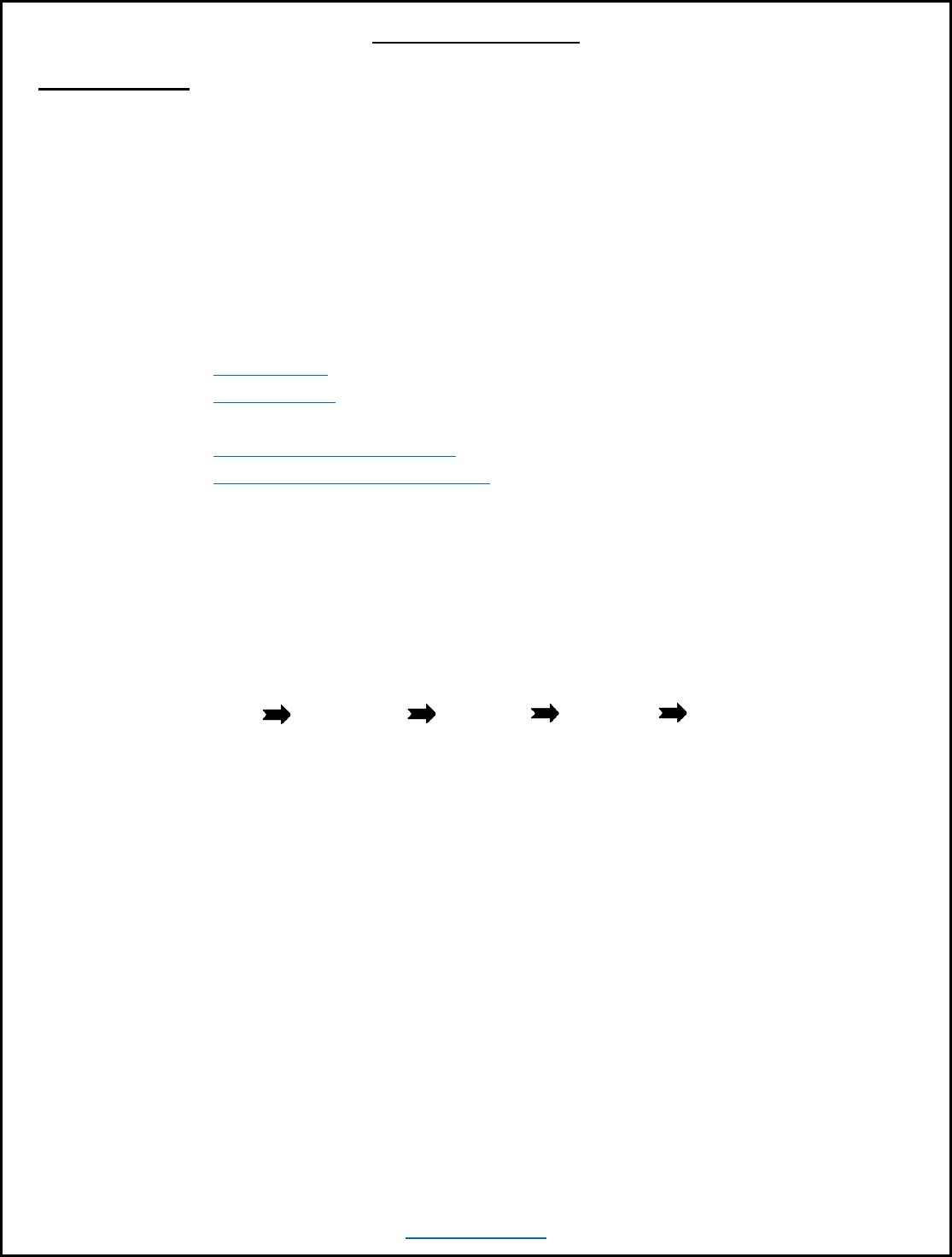
40
BACK TO TOP
CORRESPONDENCE
“
Correspondence
”: or written communication is an effective way to disseminate information and
often vital to ensure mission accomplishment. This is no different on I-I duty. As the administration
for your command or “site”, you are expected to me the subject matter expert (SME). It is impairment
that when you draft correspondence that you do it correctly and ensure that it is grammatically and
formatted correctly. This is not only a reflection of you, but also your command.
1. Sever
al formats are associated with military correspondence. The styles you will be frequently
required to use are:
a. Standard bullets follow this format including when used in subheading text:
i. Standard naval letter
ii. Endorsements
iii. Memorandums
iv. Business letters
v. Position/Point/Talking papers
vi. Administrative action (AA) forms
2. The standard naval letter is the most used type of correspondence and requires structure,
attention to detail, and practice.
3. The following is how correspondence will be routed accordingly:
a. All correspondence will route from the lowest level through the following
chain
b.
Detachment Company Battalion Regiment MSC
*Note* at no time will any correspondence be routed without the administrative section routing through the
next higher command.
All correspondence, unless otherwise directed, will be submitted through the Battalion share-point
correspondence tracker.

41
BACK TO TOP
DEFENSE TRAVEL SYSTEM (DTS)
Defense Travel System (DTS):
All Marines and Sailors assigned to CLB-451 are mandated to maintain
a DTS account. If a member of the Co/Det does not have a DTS account, one will be requested upon
check-in.
1.
DD 577:
a.
Supervisory personnel must ensure all Accountable Officials are appointed in
writing using a DD Form 577, with duties clearly defined.
b.
All DD 577 forms must be signed by the Commanding Officer or someone
appointed in writing with specific authority to sign DD 577forms.
c.
A generic "By direction" letter does not give an individual authority to sign these
forms;
d.
All current DD Form 577s should be retained in the DTS turnover folder.
e.
Review DODFMR, Volume 9, Chapter 2 for proper assignments (i.e., AO, co,
FDTA, ODTA, LDTA, RO, etc.)
f.
Permissions must be terminated via the DD 577 once an Accountable Official
transfers from the Co/Det, is discharged, or no longer holds the position.
g.
All letters of appointment, DD 577 forms and the signed letters of revocation are
archived for 6 years and 3 months after the Accountable Official no longer holds the
position.
h.
The unit must ensure their access permission levels within the DTS provide for
review and approval of travel authorizations and payments ONLY by the appropriate
officials.
2.
Lead Defense Travel Administrator (LDTA): Sample LDTA DD577
a. Permissions (0, 1, 2, 3, 5 + organization and group access). These permissions lies at the
battalion level and should be assigned to the senior travel administrator or the personnel chief.
The assigned personnel will have the ultimate responsibility to manage all permissions within
the organization or battalion/group. The DD577 will be signed by the Battalion Personnel
Officer upon completion of all required training. The training certificates and DD 577 will be
sent to the Battalion/Group comptroller for upload to MFS, uploaded to the members OMPF,
and saved in command records.
3.
Organizational Defense Travel Administrator (ODTA): Sample ODTA DD577
a.
Permissions (0,1,5 + organization and group access). This permission lies with all
sites across the Battalion. The Administration clerks will have the ultimate responsibility for this permission.
On a case by case basis an Administration chief request this permission. The DD577 will be signed by the
Battalion Personnel Officer upon completion of required classes and submission of certificate to
Battalion S-1 ODTA. Once submitted and signed it will be routed further to 4th for roles to
be assigned. Only those individuals with LDTA permissions have the authority to assign
permissions.

42
BACK TO TOP
b.
Administer the DTS, which includes updating organizations, routing lists, groups,
and personnel information. Comply with all requirements of the Privacy Act of 1974. Any
use of DTS information for other than official business may subject this position to possible
criminal penalties and/or administrative sanctions.
c.
Extract, maintain, and work reports.
d.
Important note: The ODTA does not have the authority to obligate funds
nor to certify travel documents for payment.
4.
Required reports extracted and-worked by the ODTA:
a.
Pending Airline Cancellation Report. This report shall be retrieved daily.
The
ODTA shall notify the AOs that there are pending travel documents with reservations that will
be canceled if not approved in a timely manner.
b.
Un-submitted Voucher Report. This report shall be retrieved weekly. This report
shall be reconciled with AOs, and APCs to verify travelers are submitting their travel vouchers
within the prescribed time frame after completion of travel and GTCCs are being properly
paid by cardholder.
c.
Depart Status Report. This report shall be retrieved weekly. This report shall be
reconciled with AOs to ensure authorizations are routed, approved, and ticketed by the CTO if
necessary, prior to commencement of TAD. Specifically, the "Current Status" shall be
reviewed to ensure all authorizations with a "Departure Date" falling on a non-business day.
d.
Complete Traveler Information Listing Report. This report shall be retrieved
monthly. The report shall be reviewed to ensure permission levels and access have been
granted according to DD Form 577s on file; no change in permission levels or access have
occurred; no unsubstantiated duplicate EFT information is present.
e.
All reports must be filed for current year plus one.
5.
Non-DTS Entry Agent (NDEA): Sample NDEA DD577
a.
Permissions (0 + group access). All Administrators will have this permission.
b.
A NDEA has permissions within DTS to electronically prepare and submit
another individual's travel voucher via DTS; this is referred to as T-entering a
voucher.
c.
The traveler must manual prepare and sign a DD Form 1351-2 and submit it to the
NDEA; this is utilized as the source document for T-entering the voucher.
d.
Upload the manually prepared and signed voucher (must be signed by the
traveler) to the DTS.

43
BACK TO TOP
e.
The Co/Det must also ensure the traveler completes block #1 of the 1351-2 with the
amount to be split disbursed to the GTCC.
f.
The approving official and/or supervisor must sign and date the travel
voucher in the DTS to certify the voucher is correct.
6.
Reviewing Official (RO): Sample RO DD577
a.
Permissions (0,1,2 + group access). All administration chiefs should have this
permission. On a case-by-case basis an O6 level commander can authorize a waiver for both
RO and ODTA permissions.
b.
Does not have authority to obligate funds or certify travel documents for payment.
c.
This role is optional and may be appointed at the Commander’s discretion. ROs
are supervisors and/or duty experts in specific areas that assist AOs in the performance of
their duties.
d.
Review DTS travel documents (travel authorizations, vouchers, and local vouchers).
e.
Review travel documents prepared under DTS in accordance with Appendix O of the
JTR.
7.
Authorizing/Certifying Officials (AO/CO): Sample AO DD577
a.
Permissions (0,1,2 + organization and group access). This permission lies
at the Company and Battalion level.
b.
AOs determine when travel is mission essential and have the authority to authorize
travel, obligate funds, and approve estimates of travel expenses. AOs appointed the authority
to apply the "APPROVED" stamp to travel authorizations that contain cash advances or
scheduled partial payments are subject to pecuniary liability in the execution of their duties.
c.
Ensure authorizations are approved within established guidelines and
GTCC cardholders are properly using their cards in conjunction with travel and
current policy.
8.
Detaching and receiving travelers: Co/Dets shall incorporate requirement for the Tier I (unit
level) Help Desk signature block on all check in/out sheets.
9.
Split Disbursement: All travelers that are not exempt from use of the GTCC must have at a
minimum, their rental car, lodging, and commercial transportation expenses paid directly to
their GTCC account. This is accomplished via the payment option in the DTS voucher
process. The total amount of the rental car, lodging, and airfare must be reflected as being paid
to the GTCC.

44
BACK TO TOP
10.
Orders Writing: The RO and AO will ensure:
d.
The orders include the cost of quarters when government quarters are directed.
e.
All DTS authorizations have a signed and uploaded travel request
form with signature from BN Operations and the Assistant I-I.
f.
That the member is required to obtain a statement of non- availability
when government
quarters are directed but are not available.
This statement must be
attached to the travel voucher as a supported document to substantiate payment of
lodging expenses.
g.
That there is a specific mode of transportation authorized in the traveler's orders.
h.
That a constructive common carrier cost worksheet is completed and attached to the
orders as a supporting document when the member elects to travel via POV vice the
directed mode of a GTR. (Not required if the round-trip mileage is less than 800 miles)
Traveler must cost compare against the City Pairs website located at
(https://www.gsa.gov/travel/plan-book/transportation-airfare-pov- etc/city-pair-program-
cpp)
i.
This estimate informs the traveler regarding authorized expenses and obligates
funds more accurately.
j.
That all TAD orders to schoolhouse training direct the use of government
quarters and messing that enables the schoolhouse commander to determine availability.
k.
If the schoolhouse commander determines that messing or government quarters
were not available, the schoolhouse will provide an endorsement stating what type of per diem
and/or lodging was authorized.
l.
This endorsement must be uploaded to the travel voucher as supporting
document to substantiate payment.
m.
That all orders directing members traveling together (formerly group travel) state
"limited or no reimbursement" when subsistence has been provided.
n.
TAD orders for between 31 and 180 days must be adjusted to 75% of the standard
rate. DTS does not automatically adjust the rate so care must be taken to ensure the appropriate
rate is paid.
11.
Traveler Vouchers:
The RO and AO will ensure:
a.
That travelers are providing the Authorizing Official (AO) with justification in

45
BACK TO TOP
the comments field of the authorization, amendment, or voucher for variations
from policy or any substantial variances between the authorized "should cost"
estimate and the final travel voucher.
b.
That all required receipts and supporting documents are electronically attached to the
member's DTS claim and submitted for proper payment (Lodging receipts, airline
tickets, rental car receipts, or receipts for any expense of $75.00 or more) Note that
the AO reserves the right and has the discretion to request receipts even when under
$75.00.
c.
All receipts utilized to support payment must be final zero balance receipts or must
show positive payment method. Do not include reservations or confirmation
receipts.
d.
All travelers are required to submit a travel voucher within 5 days of their return from
their period of TAD.
e.
DTS ODTA’s must pull an un-submitted voucher report from DTS on a weekly basis
to identify those travelers who have not submitted a voucher within 5 days of the end
of their trip DTS administrators must contact via email and Phone, also assist those
Marines who have not completed their travel vouchers on time.
12.
MCTFS reporting via Unit Diary in conjunction with DTS:
a.
DTS administrators must monitor the reporting of entitlements associated with
TAD orders by placing a copy of all completed 1351-2forms in a 30/31 day
tickle file and review the MCTFS to ensure that all required entries have been
reported.
b.
DTS administrators should ensure that all travelers that rate perstempo will
report the entries via unit diary monthly
13. Each Co/Det must have written internal control procedures for their Defense Travel System
process. These procedures must include billet responsibilities, monthly report procedures,
document flow within the office, and relationship with other organizations and service

46
BACK TO TOP
Drill Weekend Actions
1. S-1 has important responsibilities before, during and after drill weekends. Being proactive and
having excellent communication with the SMCR leadership is vital to ensure all required actions are
complete.
Prior to Drill Weekend
(a)
All month long, you are receiving new joins, attempting to obtain documents from SMCR
Marines, constant discrepancies you must work, but need the SMCR Marines to do something to
fix it, etc. Drill weekends are prime time to take care of everything that couldn’t happen during
the month. A good way to track this and ensure everything gets done is by creating an “Admin
Hit List”. This list should contain the following:
-
Name of Marine you need to see
-
Brief description of what needs to be done
-
Any documents required by the Marine
2. When creating this list, it is best to sort it by platoon or section so it is easier for the SMCR leadership
to pass the word and ensure those Marines make it to S-1 to take care of what is required. Send this list out
to the SMCR leadership a few days prior to drill so there is time to inform the Marines on the list and gives
them a chance to bring whatever is needed with them to drill.
3. New Joins- to serve as a reminder, the SMCR leadership should be sent an email with all the new joins
that have reported since the previous drill weekend to include their contact info. This is a step to ensure the
Marines that are new to the command receive the word regarding when drill is, what is required, and
billeting is set up, if applicable.
4. Drill Folder- prior to drill, the drill folder should be prepared that includes everything the SEA
needs in order to handle all administrative matters during drill weekend. At a minimum, the drill folder
will include
a. Current recall roster
b. Current UA report (highlight any Marines that will reach the 9 or more UA mark during that
drill weekend if UA
c. Paid drill report for the current FY (this becomes very important during the last few months of the
FY)
d. Hard copy of the Unit Muster Sheet (print this the day prior to drill to ensure all joins, drops,
transfers have posted)
e. Blank UA contact sheets
f. Site Hit List
In addition to the drill folder, S-1 should have anything needed for signature, presentation, etc for the 1stSgt
or SEA ready by the beginning of drill. (For example- promotion warrants, awards, page 11’s for signature)
*Transfer to the IRR requests and checkout sheets should be maintained by S-1 to verify the Marine meets the
requirements to do so prior to beginning the checkout process.

47
BACK TO TOP
During Drill Weekend
1. In addition to training your Marines during drill weekend, S-1 has other responsibilities during
drill weekend.
a. Accountability
(a)
While this falls under the 1stSgt/SEA realm of responsibilities, S-1 needs to know who is
present and who not to ensure all administrative actions are complete. After the first muster of the
weekend is complete, obtain a copy of the muster sheet so all UA’s can be identified. For each UA
Marine you will need the following
(b)
UA contact sheet for each drill missed (for example- 4 drills missed, S-1 should receive 4
UA contact sheets)
(c)
Unsatisfactory participation letter – generated for each UA Marine that lists each drill
missed along with the standard verbiage and signed by the Company or Detachment CO/OIC.
(d)
Character statements (if a Marine reaches the 9 UA mark) – these must be typed and
reviewed for content and grammatical mistakes prior to the end of drill.
Stay in contact with the Company or Detachment SEA during the drill weekend to ensure you are aware of
any changes to the muster sheet after each muster.
b. Admin Hit List
(a)
Track your Admin Hit List through completion. Another purpose of obtaining a copy of the
muster sheet is so you know who on your hit list is present or not. Be familiar with the training
schedule for the weekend and ensure all Marines that are present for duty complete what is required.
Update the list and provide the Company or Detachment SEA a current copy each day of drill.
(b)
Engage the I-I leadership as needed if you aren’t getting the support needed to complete the
items on the hit list. Once drill weekend is over and the SMCR Marines leave, it is difficult to get
what you need done. Keeping the leadership informed on what is still required throughout the drill
weekend is a key step in ensuring everything gets accomplished.
Post Drill Weekend
1. After drill weekend if concluded you should take the time to gather all the documents and actions
that happened over drill weekend and prepare them for diary, submission, etc. During the drill
weekend you should have placed everything in a tickler folder for you to act on throughout the next
week.
2. First you should export all the drills from drill weekend, but you will not do this until you verify that the
muster submitted is correct. Many a times you will need to verify that the Marine was actually UA or is
not a member. It pays dividends to do the research and track all the accountability from the weekend.

48
BACK TO TOP
a. Legal
(a)
You will gather all the character statements, unsatisfactory participation letters, contact sheets
and upload them to the CLA created for the member. If the member is a UA Marine then
likely you will have to mail the NOSP, AOR, and BCNR to the member for signature. The 20
days starts the day you mail it out.
(b)
Upload all documents that can be uploaded so when either the 20 days passes or the member
returns the package signed you can forward immediately.
b. Admin Hit List
(a)
As you track the hit list, this too is how you will track completion of post drill actions. You
should track and mark off each item that you have completed this way nothing goes undone. For
instance, if you have (4) Marines that were identified as needing a primary residence and you
received all the paperwork you will then run them on diary and mark them as completed.

49
BACK TO TOP
GOVERNMENT TRAVEL CHARGE CARD (GTCC)
Government Travel Charge Card (GTCC):
All Marines and sailors are required to have a GTCC upon
arrival to CLB 451 and any subordinate command. When a Marine checks into the command and is a
pipeline Marine or does not have a valid card the administrator must ensure that the Marine completes the
application or is pulled into the command’s hierarchy.
1. The following billets are required to have access in the Citibank system.
a. Battalion Personnel Officer- Battalion APC
b. Inspector-Instructor First Sergeants or Senior Enlisted Advisor (SEA) Company or Detachment
Agency Program Coordinator (APC)
c. Administration Chiefs- Battalion, Company, or Detachment Alternate APC
d. Administration Clerks- Battalion, Company, or Detachment Alternate APC
2. Appointment
Letters:
a.
Each Co/Det I-I must assign a Primary Agency Program Coordinator (APC) it is
recommended that the APC be the I-I 1stSgt/SEA and an Alternate Agency Program
Coordinator (AAPC) be the administration Marines. All administrators are required to
have access to the Citibank website and be either an APC or AAPC. The APC’s and
AAPC’s must be appointed in writing; this letter must contain all information required by,
MCO4600.40B, paragraph 4b(2)(c).
b.
Letters must include: mailing address, e-mail address, telephone numbers,
central account numbers and hierarchy numbers.
c.
The APC and Alternate APC must have access to the Citi Manager website.
https://home.cards.citidirect.com/CommercialCard/login
2.
Report Requirements:
a.
APCs are required to extract, work, and maintain monthly reports.
b.
Annotate all action taken on each report.
c.
The APC must request reports from Citi Direct and reconcile them prior to the close of the next
month's billing cycle. Do not extract the reports until the last "post" date (8th) each month.
d.
The APC/AAPC has two days to work the reports from the USMC billing cycle.
e.
The AAPC must extract, work, and maintain the required monthly reports which are:
(1)
Account Listing Report.
The APC or AAPC must contact the Intermediate Agency
Program Coordinator (IAPC) for assistance in removing unidentified cardholders from their account
listing. These names must be identified when the account listing is pulled and worked each month.
The Intermediate APC is normally located at your Regiment/Group or your local Disbursing Office.

50
BACK TO TOP
(2)
Account Activity Text File CDl00T Report.
The Commanding Officer or his
designated representative must conduct a spot check of at least 25% of the Account Activity
Report each month. The front page of the report should be signed and dated when it is worked,
this will document that the process took place as required.
This process ensures that charges
posted to the report were made in conjunction with official travel.
(3)
Delinquency Report. The APC or Alternate APC must document the
delinquency report to include completing and maintaining the 60, 90, and 120 day letters found in
Enclosure (1) of MCO 4600.40B. A copy of these delinquency letters must be kept on file for
current plus 2 years.
(4)
Declined Authorization Report. This report provides a summary level of
declined transactions for the unit.
(5)
DoD Travel IBA Aging Analysis Summary.
This report provides a
detail level of the required metrics of dollars and accounts delinquent.
(6)
Weekend/Holiday Activity Report. This report capture usage during
times of possible non-duty days.
(7)
Non-Travel Activity. This report capture usage during times of possible non-
duty
days.
f.
These reports must be kept on file for current plus two years.
3.
Storage of GTCC Records.
All Co/Det's GTCC reports and cardholder information must
be kept in a locked storage area or container that is only accessible by the APC and AAPC. Files
may be stored electronically; however, they may not be stored on a shared drive.
If files are
stored electronically they should be kept on an external hard drive that is password protected and
maintained in a locked storage container when not in use.
4.
Statements of Understanding:
a.
The Co/Det must have a statement of understanding (SOU) on file for each Marine that
has a GTCC.
The statements of understanding should be maintained alphabetically in a
separate binder.
b.
The APC or AAPC cannot sign the SOU Supervisor block.
c.
The APC or AAPC must compare the statements of understanding on file with the
account listing report each month to identify which statements of understanding are missing.
An
SOU must be completed for those Marines that do not have an SOU on file.
d.
Each Marine that has an existing GTCC must complete an SOU as part of the
check in process.
e.
Marines who are applying for a new account must complete Anjou when they
complete the GTCC application.

51
BACK TO TOP
f.
The APC or AAPC must destroy the statements of understanding for those Marines
who have been transferred or discharged (maintain each SOU until the cardholder drops from
your account listing).
5.
Travel Card 101 Training Certificates:
a.
The APC will file and reconcile the account listing first, then attach the certificates to
the sous for each traveler. If the traveler's name remains on the Account Listing, the APC must
maintain the SOU and training completion certificate.
b.
It is mandatory that all cardholders complete "Programs & Policies (Travel Card
101)." https://www.defensetravel.dod.mil/Passport/bin/Passport.html?CFID=5614
230&CFTOKEN=57498207#
c.
APC must also advise new cardholders of the proper use of the card, and ensure
that cardholders, supervisors, and commanders are informed on policy and procedures
changes to the government travel card program.
6.
Activating/Deactivating
Cards:
a.
The APC or Alternate APC will ensure that each individual's GTCC account is
always activated unless there is suspected misuse, abuse, or fraud. If there is any of those
circumstances, the site I-I must sign a letter stating the circumstance and keep it on file.
b.
The APC or Alternate APC will ensure that each individual's GTCC
account is deactivated within five days after completion of official travel.
c.
In all cases where the CO authorizes accounts to remain active, the approval must be
in writing and a copy maintained on file.
d.
The most efficient way to activate and deactivate the GTCC for your travelers is to utilize
the scheduling tool that is available on the Citibank website. This allows the APC and/or AAPC to
program the dates for automatic activation and deactivation for each period of TAD.
e.
Each Co/Det's check-in and check-out sheet must contain a block for the APC/AAPC
to initial.
This will ensure that all Marines check-in and check-out with the APC/AAPC for PCS
and TAD.
f.
Note: A common problem is the units allows someone other than the APC or AAPC to
sign the check in/out sheet for the APC. This completely defeats the purpose of having them on
the check in/out sheet. Only the APC or AAPC will sign the check in/out sheets for all Marines at
each individual command.
g.
Marines with delinquent balances may execute PCS/PCA orders to another
command; however, the APC or AAPC must make coordination with the gaining command's
APC or AAPC.

52
BACK TO TOP
h.
Any Marine executing TAD orders more than 45 days must have their GTCC joined
to the hierarchy of the TAD command.
i.
The APC or Alternate APC must log into the Citi Direct website to verify that each
Marine being separated has a zero balance on their GTCC account prior to discharge or departure
on PTAD/Terminal leave.
j.
The APC must then cancel the member's account.
k.
Any Marines separated/retired will be coded as "Tl" to ensure they fall off the report
when processed out.
7.
Each Co/Det must have written internal control procedures for their Government Travel
Charge Card process. These procedures must include billet responsibilities, monthly report
procedures, document flow within the office, and relationship with other organizations and
services

53
BACK TO TOP
MFR G-1 Admin Readiness Report
G-1 Report: The G-1 readiness reports can be accessed with the following G-1 Admin Reports. The reports
were initially created due to the lack of administrative oversight at the sites across MFR. These discrepancies
were directly related to MCAAT, FRAAP, and CGI inspectable items. More importantly it showed the bigger
issue, which was Marines not being administratively ready. The following is direct guidance on how to ensure
that the areas of the G-1 readiness are always maintained.
1. On a bi-weekly basis the Battalion PersO or Admin Chief will pull all the reports and reconcile them into 1
spreadsheet.
2. This report will then be hung on the Battalion SharePoint for consolidation and working.
3. The site admin chiefs are responsible for ensuring their discrepancies are annotated with the corrective
action taken (reported on UD# and date)
4. All corrective action and annotations on the report must be worked before COB on Friday that week.
5. The Battalion PersO will contact the site I-I’s and SEA’s once the report has been hung for
situational awareness.
6. The following is all areas that are a part of the G-1 admin readiness reports and how to correct them:
a. Billet Identification Codes – The Marine responsible for the management of the unit BIC’s will
utilize MOL to report BICs for active-duty joins. This will be done during the joins/check in
process. For all SMCR joins the day following the join the joins clerk will login to IDMS (located in
RTAMMS) and assign the new join to the proper BIC.
b. Electronic Service Records – Upon check in the Joins Marine will scan the SRB utilizing the ODI
scanner and upload to the member’s OMPF. On the join diary utilize the ODI cover sheet as the
source document and run the ER training code on the unit diary.
c. Primary Residence – Upon check in the joins Marine gather (2) forms of proof of residence i.e.
driver’s license, mortgage, lease, etc. These will be used to verify residence and will run the primary
residence on the join diary.
d. Not Joined – All SMCR Marines are to be joined to the SMCR RUC the day following a drop from
active duty. The joins clerk will keep all current orders for Marines in a tickler system to ensure the
Marines are properly dropped and joined the following day.
e. STR – All Marines checking out of the command will have their medical and dental records scanned
into the STR database and sent to HQMC utilizing their mail or Pitney Bowes system. Upon proper
transfer to the IRR, FMCR, Ret AWTG Pay, or completely dropped from the Marine Corps, the
Separations clerk will gather the medical and dental records from medical and proceed to register
and mail the files.
f. Join Audit – All active duty joins will be joined the day following checking in unless they are a new
accession to the AR program. A check in day is not considered a day of duty and is considered a
travel day. Therefore, always join a Marine that is PCS’ing or PCA’ing the following day

54
BACK TO TOP
Inspections
1.
Marine Corps Administrative Analysis Team (MCAAT)
a.
Per MCO 7220.13, the MCAAT is the eyes and ears of Headquarters Marine Corps, Manpower
and Reserve Affairs (M&RA), Director Manpower Strategy Division (MX) for the Personnel
Administration Field and Director Programs & Resources Department, Fiscal Division, Resources
Finance Fiscal Branch (RFF) representative for the Disbursing/Finance Field. As such, the
MCAAT's primary mission is to provide commanders a detailed evaluation of the efficiency and
effectiveness of internal audit procedures, regulatory compliance, systems management, internal
controls, command administrative and disbursing/ finance (DO/FO) operations, and the timely
and accurate performance of pay and entitlement transactions in the Marine Corps Total Force
System (MCTFS), travel systems, and other associated systems; and act as a conduit between the
field activities and CMC (MX) and CMC (RFF). MCAAT also provides audit support to varying
outside agencies as directed by higher. The most up to date checklist can be found here MCAAT
Checklist
b.
Best Practices:
(a)
Conduct an internal inspection utilizing the MCAAT Admin checklist
(b)
Ensure compliance with the Records Management Program and MARADMIN 015/20 to support
the Full Financial Audit
(c)
Request assist training visit from local Administrative Assistance Unit or MCAAT.
(d)
Routinely review the MCAAT website for the following resources o MCAAT Grades
c. Trends:
(e)
Inspection Schedule
(f)
Admin Checklist & DO/FO Checklist (Finance) (also available through the Manpower Codes
Lookup Site)
(g)
Unit in-brief presentations
(h)
AskMCAAT – seek clarification to administrative questions that remain unanswered after
conducting thorough research
2.
Inspection Frequency: Administrative units are inspected once every three fiscal years. Per DODFMR, all
DO/FO are required to be inspected annually. To find out if you are in this year’s inspection schedule
check here MCAAT Inspection Schedule
3.
All corrective actions and discrepancies annotated on inspections are required to be corrected and
addressed with a corrective action plan endorsed by the first O-6 in the office’s chain of command within
60 days from the conclusion of the inspection.

55
BACK TO TOP
Commanding General’s Readiness Inspection (CGRI)
1.
Per MCO 5040.6_, the Inspector General of the Marine Corps (IGMC) is the principal advisor on
inspection matters and is the eyes and ears of the Commandant of the Marine Corps that are, and will
continue to be, the hallmark of our Corps. Through the IGMCIP, the IGMC will evaluate the
thoroughness and efficacy of all commands with and without a CGIP in the Marine Corps. The IGMC
will ascertain current command conditions, assess policy compliance, and recommend corrective
actions, thereby promoting Marine Corps institutional discipline and foundational readiness. The
following link will show the most up to date checklists Functional Area Checklists
2.
Inspection Frequency:
a.
Comprehensive Command Inspection: Every third or fourth Fiscal Year
b.
Independent Command Inspection: Typically, every other Fiscal Year
3.
Best Practices:
a.
Conduct an internal inspection of your primary and collateral duties utilizing the corresponding
Functional Area checklists. Research each question by locating the appropriate response in the
referenced identified.
b.
Communicate with the HQMC Subject Matter Expert identified in the header of the Functional Area
checklist to seek clarification to checklist requirements
c.
Routinely review the Inspections Division website (link above) for the following resources o
Functional Area Checklists (new, updated & removed)
(a)
Functional Area Concerns & Best Practices
(b)
Grading Criteria
(c)
Contact Information
4.
Background: Inspectors shall use Functional Area Checklists to assess the thoroughness and
effectiveness of a functional area. Checklists are written by subject matter experts on behalf of
their Headquarters, U.S. Marine Corps sponsors. Each checklist question will reference a
congressional mandate, Department of Defense directive or instruction, Secretary of the Navy
Instruction, Marine Corps Order, or Marine Corps Bulletin. While compliance to all policies is
required, the IGMC publishes a list of functional areas that are Critical or Required Evaluation
(CoRE) to prioritize efforts. The Core list, which includes the Commandant’s “Top Priority”
functional areas, serves as the focus of inspections, and has the highest priority for support. At a
minimum, the CoRE list is inspected within all commands with board selected commanders
regardless of unit size, mission, or location. Programs will be graded as “Effective” or
“Ineffective.” Commands will be assessed as “Mission Capable” or “Non-Mission Capable.”
Inspection teams will train and assist functional area managers as needed and as time permits
during inspections. After receiving an inspections report, Commanders shall write a corrective

56
BACK TO TOP
action report that details a plan and timeline to remediate ineffective functional areas and effective
functional areas with findings. A command found Non-Mission Capable shall be re-inspected,
typically three to six months after the original inspection. Inspections shall recognize excellent
performance during inspections. Functional area managers invest a significant amount of their time
in such duties. Excellent performance shall be recognized by the command, Commanding General,
or IGMC, as appropriate.
Force Readiness Administrative Analysis Program (FRAAP)
The MARFORRES Command Inspector General (CIG) will conduct periodic inspections of Selected
Marine Corps Reserve (SMCR) units to ensure unit activation readiness for smooth integration with the
GFC. This assessment will be scheduled for prioritized units identified annually by the G-3/5 based on
Global Force Management (GFM) sourcing, units in a post Service Level Training Event (SLTE) status,
and units identified for operational plan (OPLAN) preferred sourcing.
Commander’s Intent
: The purpose of the FRAAP assessment is to evaluate a reserve unit’s ability to
activate, stage, and marshal personnel and equipment for follow-on movement prior to integration with a
Gaining Force Commander (GFC).
1.
The functional areas inspected for the administration section are:
a.
Muster
b.
Frost Call
c.
Personnel Administration
d.
Manpower Management
e.
Employer Support of the Guard and Reserves (ESGR) if applicable
2.
To successfully prepare for a FRAAP you must first pull the checklists and thoroughly go through
them. Linked here
FRAAP Checklists

57
BACK TO TOP
LEAVE
Leave:
IAW Chapter 4, paragraph 1 of MCO 1050.3J, each command must establish their own leave
and liberty regulations/policy. This regulation/policy must cover all topics required by Chapter 4.
1.
Approval: I-I, OIC, or unit SEA personnel must review the Leave, PTAD, Special Liberty, and
PDMRA modules in MOL daily tonsure all pending requests are either approved or disapproved
by the appropriate personnel prior to their effective date.
2.
Check out procedures:
a.
Each command must have procedures in place to ensure that all Marines are properly
checked out and check in via MOL.
b.
Ensure that Marines are checked out in MOL for all requests that had a departure date
that has passed.
c.
This can be accomplished each morning by verifying that all Marines scheduled to
depart the day prior were signed within MOL.
d.
Call the Company/section to verify the status of those Marines who were supposed to
check out then take corrective action as necessary, i.e., sign Marines out if he or she
departed, modify dates if necessary, or cancel period if Marine is not going on the period
of Leave, PTAD, Special Liberty, or PDMRA.
e.
Ensure Marines have checked in via MOL for all requests that had a return date that
has passed.
f.
Each morning verify that all Marines scheduled to return the day prior were signed in
via MOL.
g.
Call the Company/section to verify the status of those Marines who were supposed to
check in then take corrective action as necessary, i.e. sign Marines in if they returned, get
an extension approved if necessary, or place in an Unauthorized Absence (UA) status.
3.
Departure and return times:
a.
IAW Chapter 2, paragraph 5 of MCO 1050.3J, Marine's driving POV to a location outside of
the local area are authorized to depart on leave at 1201 and return at 1200.
b.
All others must depart at the end of the normal workday and return at the beginning of the
normal work day
c.
There are exception to the departure time rule when ORM is applied for example; when a
Marine is flying to a leave location and there is a lengthy drive on both ends to/from airport.
d.
In these cases, the leave approval must state that the Marine was approved to depart at 1201 and
return at 1200 due to ORM considerations. Use specific justification used to apply exception
to policy, not just "ORM considerations).
4.
Leave in conjunction with special liberty: Each command must ensure that when leave is
taken in conjunction with special liberty that the leave period begins and ends in the local
area.

58
BACK TO TOP
5.
Permissive Temporary Additional Duty (PTAD) request:
a.
S-1 or SEA personnel must also verify that the dates and reasons for PTAD
requests are authorized IAW with Chapter 5 of MCO1050.3J.
b: PTAD will not be approved by Co/Det's for reasons that are not in accordance with the
regulations. Additionally, personnel will not be approved PTAD who are not authorized by
regulations to do so.
6.
Saved Leave Account:
a.
Each Co/Det must have procedures in place to identify those Marines who are in
danger of losing leave at the end of each fiscal year. During June of each year, each
Co/Det identify all Marines with excessive leave balances and encourage the use of leave
before it is lost on 30 September.
b.
These Marines should be notified so that they can submit leave requests and
exhaust their excess leave prior to Sep 30th.
c.
The Commanding Officer must enter the SLA module of MOL after 1 Oct to see
which members of their Co/Det they can approve for restoration of SLA (Applies to those
Marines unable to reduce their leave balance below the maximum limit).
d.
MCO 1050.3J, Chapter 2, paragraph 9a(4) outlines the requirements and routing
procedures for the restoration of SLA for those Marines that fall under the other category (these
must be routed through the CG).
7.
Post Deployment Mobilization Respite Absence (PDMRA):
a.
This is time off earned when dwell time between deployments has
been interrupted.
b.
Active component dwell time is 2:1.
c.
PDMRA is earned and is dependent on the type of orders the Marine is on.
d.
PDMRA is automatically calculated within MCTFS once the Marine has
met all qualifications.
e.
Each Co/Det must have procedures in place to monitor their PDMRA program.
f.
Pull PDMRA rosters via Report Net each month when units have Marines deployed,
send an email to all Marines with a PDMRA balance, and maintain copies of rosters/emails.
g.
PDMRA must be taken prior to a Marine executing PCS orders or commencing
terminal leave or it will be zeroed out and lost.

59
BACK TO TOP
h.
Co/Det I-I/commanders/OIC's should encourage their Marines tousle their PDMRA
earned before taking annual leave.
i.
The number of days PDMRA that a Marine is authorized to take in conjunction with a
PCS move must be annotated on the Marine's outbound interview and approved by the
Commanding Officer.
j.
The number of days PDMRA that a Marine is authorized to take in conjunction
with terminal leave must be annotated on the Marine’s LWAS data sheet and approved
by the Commanding Officer.
k.
The 8-1 will then place the number of PDMRA days authorized
in the Marine's PCS or LWAS orders.
1.
Each Marine's PDMRA balance can be viewed by accessing their
MCTFS "TOUR" screen.
m. The Leave section must have written internal control procedures established that cover
billet responsibilities, document flow within the Co/Det, and relationship within other
organizations and services.
These procedures must cover all aspects of the leave clerk’s duties
and responsibilities.

60
BACK TO TOP
LEGAL
Legal:
Guidance: Use ref (d) Legal admin manual for guidance, along with the below Personnel Admin
Advisories PAA's for clarification:
1. Clarifying
guidance:
a.
PAA 02/11 - Correction to PRO/CON Reporting Requirements
b.
PAAs 09/11, 10/11 & 12/11 - Promotion Restriction Page 11 format.
c.
PAA 06/12 and PAA 07/12 UPB Processing, Distribution, and Updates in the ESR.
d.
PAA 04/13 Promotion Restrictions for Administrative Separations (Misconduct).
e.
PAA 06/14 Location of forms/documents and Table 5-1referenced in MCO P5800.16A.
2.
Non-Judicial Punishment: First NJP authority cannot be delegated. “Acting" commanding
officers may not hold NJP based solely on their "Acting" status. At the time NJP is imposed, the
commanding officer must be subject to the UCMJ (
on IDT status or on orders
). Before
imposing NJP or convening a court-martial, the commanding officer must ensure the following
requirements are met.
a.
The accused must have been subject to the UCMJ at the time of the commission of
the offense.
b.
The accused must be subject to the UCMJ at the time of the NJP or trial by courts-martial.
c.
To be "subject to the UCMJ", the reservist must be either:
1)
On active duty or ADT.
2)
On
IDT.
d.
In addition, to be subject to the UCMJ, the reservist must not have been discharged
from all military service obligations before committing the offense or before the imposition of
NJP or commencement of courts-martial proceedings.
e.
The authority that sets forth the maximum punishments at NJP can be found in par. 5,
Part V, MCM.
f.
These punishments are broken down into punishments imposed upon officers
and punishments imposed upon enlisted by company grade and field grade officers.
1)
The maximum permissible punishments that can be awarded by any
individual authorized to preside over NJP punishment proceedings are as follows:
a)
Forfeitures awarded during NJP cannot exceed the maximum allowable
amount; 1/2 months' pay for two months when imposed by a field grade

61
BACK TO TOP
officer and 7 days' pay when imposed by a company level officer.
b)
Majors who are company commanders may award forfeitures for field
grade officers; however, they cannot reduce a Marine unless they have
been granted special promotion authority.
c)
Forfeitures amounts are based upon the base pay for the reduced grade
even if the reduction is suspended
.
d)
Battalion: Reduction of one rank for sergeants and below, forfeiture of half
months pay for 2 months, 45 days restriction and 45 days extra duty to run
concurrently, or 60 days restriction in lieu of 45 days restriction and 45 days
extra duty.
e)
Company: Forfeiture of 7 days' pay for 1 month, 14 days restriction and 14
days extra duty, or 7 days Correctional Custody Unit (E-3 and below) in
lieu of any restriction or extra duty.
g.
Each Co/Det is required to maintain a Unit Punishment Book (UPB) binder for
each calendar year; all UPBs must be filed alphabetically within the binder.
h.
All UPBs must be prepared in accordance with paragraph 3008.5of MCO P5800.16A.
All UPB’s will be created at the
Battalion level
, but the package to include the notes taken,
charge sheets, article 31 rights will be submitted as one document for the Battalion to create the
UPB.
i. Sample UPB Package linked UPB
j.
All transcripts (supporting documentation) must be filed with the UPB
within the command's UPB binder.
k.
The office hours guide created during the NJP proceedings will be included, along
with copies of the promotion restriction and 6105 counseling page ll's, the naval drug lab
message (if applicable), and any civil court adjudication paperwork.
l. UPB documents Distribution and tracking:
1)
Copy to Battalion S-1 and report on Unit Diary.
2)
Battalion S-1 will also forward a copy to CMC (MMSB) for inclusion in the
Official Military Personnel File. Original in the UPB binder (maintain for 2
plus current.)
3)
Copy to Marine, Marines will initial of the UPB to indicate receipt of the UPB.
4)
Submit a copy of the UPB with the promotion restriction page 11 to the S-1 for
MCTFS reporting within 3 days of the NJP.
5)
Once all unit diary action has been completed by the S-1: Annotate block 17

62
BACK TO TOP
of the original UPB with UD number and date.
6)
Validate that the completed copy of the UPB and associated promotion
restriction page 11 entry has been input into ESR.
7)
The S-1 must verify the correctness before acceptance, so it is important to
thoroughly review the UPB for accuracy before submission to the S-1.
Supervisory personnel must ensure any corrections made are on the original
copy maintained at the unit and the corrected copy is provided to the S-1 for
unit diary reporting and ESR update. This will ensure the copy in the ESR
matches the original at the unit.
3.
Vacation of Suspended Punishment:
a.
If a Marine who was awarded punishment and any portion of the punishment was
suspended at the NJP but is later vacated, you must:
1)
Prepare a vacation letter for the Commander who imposed the NJP per MCO
P5800.16A, paragraph 3009.
The letter should provide details of what
punishment is being vacated and the effective date.
2)
Update the original UPB on file by entering the appropriate information
from the vacation letter in block 16.
MCO P5800.16A, paragraph
3008.Sp.
3)
Forward a copy of the vacation letter and a copy of the UPB with block 16
updated to the S-1 for MCTFS reporting and ESR update Ensure the updated
UPB has been prepared per PAA 7-12, paragraph 6.
b.
Unit legal personnel must ensure all unit diary action has been properly reported in the
MCTFS.
This can be accomplished by reviewing the following screens in MCTFS:
1)
D119 - NJP or Court Martial date
2)
D905 - Time lost
3)
D925 - NJP Forfeitures
4)
D990 - Court-Martial forfeitures (Also contains the Convening Authority's
action) GRAD - Reduction and promotion restrictions.
5)
AWDS - Good Conduct Medal commencement date.
6)
TROS -
Reduction proficiency and conduct marks.
7)
TRS Remarks - Time Lost and Confinement dates.
8)
The above screens will be printed (when applicable) and file with the UPB.

63
BACK TO TOP
4.
6105/Page 11 entries:
a.
The following are common occasions that require a promotion restriction page 11 entry:
b.
NJP, Court-Martial, Administrative Separation (misconduct), Testing positive for illegal drugs,
Drug Possession, Pending Civil Court Charges, DWI/DUI Conviction, Reckless Driving
Conviction, and Conviction of a misdemeanor or felony charge.
c. All 6105 entries must be signed by the commander with promotion authority or Battalion
level or higher, unless delegated down in writing.
5. Promotion Restriction reporting:
a.
To avoid erroneous promotions, pending DWI/DUI or any other civil court charges
need to be tracked on the legal report.
b.
These Marines must be "not recommended" for promotion once the promotion
restriction period expires from the NJP while the civil charges are still pending
adjudication.
c.
Once
convicted,
the paperwork must be submitted to theS-1 for the 12-month
promotion restriction.
d.
The effective date of the 12-month promotion restrictions the date of
conviction for the DWI/DUI.
e.
Note: If the Marine is found not guilty or charges are reduced to a misdemeanor the
Marine may rate a remedial promotion (Charges dismissed) or a lesser promotion
restriction for a misdemeanor (charges reduced).
f.
For positive drug use results, the drug lab message must be submitted to the S-1 to
report the 18-month promotion restriction within 3 days. The promotion restriction
will be reported once the page 11 is signed.
g.
Note: The promotion restriction will change to 12 months during the administrative
separation process when the S-1 is notified. See PAA 11-14 concerning promotion
restriction page 11 entry requirements.
h.
The command's legal report should be compared to the promotion recommendations each
month to ensure Marines pending civil court action, NJP, or Court Martial are not
recommended for promotion.
6.
Administrative Separations: Administrative Separations via CLA is an integral part of maintaining
good order and discipline. It is very important that units maintain positive control of the process as

64
BACK TO TOP
well as understand its intricacies, due to the time sensitive items related to the process. Units will:
a.
Run via Unit diary the Administrative Separation 12-month promotion restriction if due to
misconduct, unsatisfactory performance, alcohol rehabilitation failure, domestic violence,
child abuse, weight control failure, etc.
b.
The effective date of promotion restriction is the date the Commander notifies the Marine of
their intent to separate. If the Marine's acknowledgement of rights (AOR) and CO
notification letter are different, the effective date will be the date of the Marine's
acknowledgement of rights. MCO P1400.32D, paragraph 1204.4v and PAA 04/13 applies.
For Reserve Marines it will be the date the Marine signs the AOR or the date of notification
for those Marines who are in Unauthorized Absence and 20 days have passed since receipt of
notification, this includes those "Return to Sender" cases.
c.
For active-duty Marines the promotion restriction will also terminate discretionary
allotments and update the POE code to reflect EFT vice direct deposit to reduce the out of
service debt incurred as applicable.
d.
Once the Commander has made the decision to separate the Marine you must
immediately have the Marine scheduled for a final physical and to complete the
TAMP/TAP training for active-duty Marines.
e. Ensure that a complete copy of the Marine's package is made prior to forwarding it to
higher
headquarters; this package must be maintained in the correspondence files
for current year plus two at each Co/Det
f.
Reduction JEPES Occasions:
1)
JEPES occasions are certified by the Battalion CO via
established procedures.
2)
All Marines that are reduced to the rank of LCpl and below must
have reduction occasions entered in MOL by the respective
Co/Detachment
3)
The effective date of these occasions is the day prior to the reduction
date.
*See MCO P1070.12K, Table 4-3, rule 38.
4)
The legal clerk or Senior Enlisted Advisor (SEA) will create the
occasion in MOL to ensure the marks are reported and on the
correct dates. Particular attention must be made when reductions at
Court- martial are effective.
7.
Command Legal Action (CLA): Marine Corps Administrative Separations (AdSep) is a very
detail and through process. This process if done correctly helps promote good order and
discipline to Enlisted Marines and serves to discharge those Marines not adhering to Marine
Corps standards. All Reserve and Active-Duty Separations will be created and processed via
CLA. This system is located and can be accessed via MOL.

65
BACK TO TOP
8.
Roles and Responsibilities:
a.
Preparer- the Marine who prepares the Notification of Separation Package (NOSP) and
the MCEAS package for certification byte Certifier (Admin Clerk).
b.
Certifier Reviewer- Someone that reviews the package before the Commander/I-I at
the Co/Det level sees it. (Co/Det 1stSgt/SEA or Admin Chief if necessary).
c.
Certifier - Commander/I-I at the Co/Det level who certifies that the CLA package is
complete (Company CO/I&I).
d.
Endorser Reviewer - Someone at a higher command level than the unit that reviews the
package before the Endorser sees the package. (Battalion XO/SgtMaj/I-I SgtMaj/Asst
I-I).
e.
Endorser - Commander/I-I above the unit level that endorses the CLA package.
(Battalion CO/I&I) (Company CO who has detachments under them).
f.
Classes on CLA roles and how to, can be found via this link:
https://eis.usmc.mil/sites/missa/knowledge/Training%20Content/MCTFS%20FOS
%2acess
%20SOP.aspx
g.
The CLA application is located within MOL under the "Resources" tab titled CLA.
To obtain access to this system a DD Form 2875 (SAAR) "Locked" is required IAW
Ref (e). Prior to completing the SAAR form, the annual USMC Cyber Awareness
Training Course Number CYBERM0000 must be completed and up to date. Once the
SAAR form is completed with the appropriate signatures it is then sativa the admin
clerk to MISSO for approval. Once approved, MISSO will send an email to the
individual with password to access the system. Once
the password is used the account is now active and will be directly tied into the MOL account
and no future passwords are needed.
h.
The CLA application provides the individual users with all required documents and
functionalities which are located on the homepage. It also provides a link to Marine
Forces Reserve (MFR) Legal SOP, CLA Roles and Separation Basis Checklist.
These
checklist and links will be used as the main source for future updates outside of the
individual battalion policies.
Initiating a Package
1.
All packages will be initiated in a timely manner to avoid delay in processing. The following are
provided as examples:
2.
Unsatisfactory Participation
a. Initiated the day of the 9
th
UA
b. Character statements completed by SMCR Leadership

66
BACK TO TOP
c. UA contact sheets and unsatisfactory participation letters obtained
3.
Misconduct – Drug abuse
a. Initiated the day positive results from a urinalysis is received
b. Initiated the day any other source documentation regarding drug abuse is received (police report)
4.
Commission of a Serious Offense
1. Initiated the day source documentation received and after referring to the SJA to ensure offense
warrants an administration separation package
*Factual basis for separation should be a short concise statement as to why the Marine is being separated.
There is no need to tell the whole story in this section. The Certifier can elaborate in his comments on the
Commander’s letter. (ex: SNM has reached 9 UA’s in a 12 month period, SNM tested positive for THC
on urinalysis conducted on 18 Sep 20)
*A package should be in draft status no longer than 48 hours.
Notification Process
Once all the paperwork generated from CLA is printed and signed, MAKE A COPY! There are a few ways
a Marine can be notified:
1.
In person (must sign personal receipt of notification)
2.
By mail (must be mailed CERTIFIED/RESTRICTED DELIVERY) Make copies of the front and back of
the envelope. Screenshot the Marine’s address from MCTFS to show the package was mailed to the
correct address at that time
3.
Email (this does not count as a valid attempt to notify unless the Marine responds with the completed
Acknowledgement of Rights)
4.
The following will be included in the notification paperwork regardless of notification attempt method:
a.
Notice of Separation Proceedings signed by the site I-I
b.
BCNR/NDRB
c.
Acknowledgement of Rights
d.
Personal Receipt of notification (only if notifying in person)
e.
NAVMC 11378 Notice to Terminate SGLI (unsatisfactory participation packages)
f.
AdSep page 11
g.
A Reservist has 20 days to respond from the date they were notified of the separation proceedings.
(Date notified in person, date delivered via PS Form 3811 and signed by Marine) In those 20 days,
documents can start being uploaded to the package:
1)
Signed notification provided to Marine
2)
Character statements
3)
SRB pages (in order listed in CLA, redact all PII other than the Marine’s)
4)
MCTFS screens (in order listed in CLA)

67
BACK TO TOP
5)
NAVMC 11378 (if appl.)
6)
The Separation History and Physical Exam (SHPE)
7)
For drug abuse packages, positive test results and required documents from the SACO
*FAST checklist will be utilized for the entire AdSep Process to ensure all actions are complete to
include unit diary entries required:
1)
Promotion restriction (pending AdSep 12 months) (drug abuse requires an additional
promotion restriction)
2)
Strength Cat X (when package is forwarded to SJA level)
3)
Administrative Reduction (if a Cpl or above and receives an Other Than Honorable discharge)
4)
Drop
1.
The following identifies the battalion's timelines on AdSep packages. If done correctly all CLA
packages should be processed through the battalion within 30-45 days of creation.
2.
AdSep package is created at the site level and sent to the certifier. Once at the certifier level the
BN Legal Clerk will review for discrepancies. If no corrections are needed it will be stamped
reviewed in CLA. (
20 to 30 days
depending on type of notification).
a.
BN Legal Clerk will review and take initial action on the package within 2-5 days
(steady state), or within 2 weeks (during times of heavy traffic).
b.
BN Legal Clerk will reconcile any errors/omissions in the packages with the sites. If the
package is sent back for corrections the site will have 5 days to correct the package and return to
BN.
c.
Once the package is free of errors/omissions, the Legal Clerk will enter in a draft
commander's comments.
d.
Legal Clerk will forward the package in CLA to the Battalion PersO/Adjutant for review.
e.
The Personnel Officer/Adjutant will review the package in CLA, and will either
approve, revise, or reject the package.
If it's rejected, the PersO or Adjutant will provide specific
information as to the reason.
f.
Once the package is reviewed by the PersO/Adjutant, it will be routed to the BNCO for
review/signature.
Command Legal Action (old MCEAS) verbiage templates:
Unsatisfactory Participation
PACKAGE ID: 7087
NAME:
JONES, J.K.
TYPE: 9 OR MORE MISSED DRILLS
<Insert Marine Name Here> is recommended for administrative separation due to unsatisfactory
participation in the Ready Reserve. SNM has been unexcused from <insert number of missed drills>
regularly scheduled drills (as of DD MMM YY) within the last 12 months and has made no attempts

68
BACK TO TOP
to rectify his status. His current chain of command has made numerous attempts to encourage him to
return
through certified mail, and through monthly phone calls. SNM has had no combat service or
deployments and has not been diagnosed with PTSD or TBI. He is exempt from the medical
evaluation requirement of MARADMIN 396/15.
Recommended character of service is (Other Than Honorable.)
PFT Failures
PACKAGE ID: 7087 NAME:
JONES, J.K.
TYPE: UNSATISFACTORY PERFORMANCE- PFT FAILURES
<Insert Marine Name Here> is recommended for administrative separation due to unsatisfactory
performance. SNM has failed two consecutive physical fitness tests. He has been counseled per
paragraph 6105 and has not responded to counseling. SNM has had no combat service or
deployments and has not been diagnosed with PTSD or TBI. He is exempt from the medical
evaluation requirement of MARADMIN 396/15.
Recommended character of service is General (under Honorable conditions).
BCP Failure
PACKAGE ID: 7087 NAME:
JONES, J.K.
TYPE: UNSATISFACTORY PERFORMANCE- BCP FAILURE
<Insert Marine Name Here> is recommended for administrative separation due to unsatisfactory
performance. SNM has failed the Body Composition Program (BCP). He has been evaluated by a
medical physician who determined that weight gain was not due to an underlying cause or disease
and found fit for assignment to the BCP. He has been counseled per paragraph 6105 and has not
responded to counseling. SNM has had noncombat service or deployments and has not been
diagnosed with PTSD or TBI. He is exempt from the medical evaluation requirement of
MARADMIN396/15.
Recommended character of service is General (under Honorable conditions).
Drug Abuse
PACKAGE ID: 7087
NAME: JONES, J.K.
TYPE: DRUG
ABUSE
<Insert Marine Name Here> is recommended for administrative separation due to misconduct
(drug abuse). SNM tested positive for <insert drug here> on <insert date here> (XXX ng/ml) with
a cut off value of XX ng/ml. SNM is a drug user and there is no reason to believe he has any
potential for rehabilitation. SNM has been screened for drug dependency and requires no further
treatment. SNM has had no combat service or deployments and has not been diagnosed with PTSD
or TBI. He is exempt from the medical evaluation requirement of MARADMIN 396/15.

69
BACK TO TOP
Recommended character of service is (Other Than Honorable.)
Commission of a Serious Offense (COSO)
PACKAGE ID: 7087
NAME:
JONES, J.K.
TYPE:
COMMISSION OF SERIOUS OFFENSE
<Insert Marine Name Here> is recommended for administrative separation due to commission of
serious offense. SNM has been arrested by the civilian authorities and charged with <insert charge(s)
here>.
SNM has had no deployments or combat service and is exempt from the medical evaluation
requirement of MARADMIN 396/15.
Recommended character of service is (Other Than
Honorable.) Alternate MARADMIN 328/10 Statements:
Per MARADMIN 328/10, SNM has (been mobilized or) had a combat deployment but has failed to
attend scheduled appointments for PTSD and TBI. The command has screened his medical records
and there is neither indication of a diagnosis nor symptoms of PTSD and TBI. He is exempt from
the medical evaluation requirement of MARADMIN 396/15.
Per MARADMIN 396/15, SNM has been mobilized or deployed and a medical evaluation was
required. SNM was screened and has not been diagnosed for PTSD or TBI.
1.
If SNM has been diagnosed with TBI or PTSD, there is no template. Each one of those is a case-by-
case basis
2.
Unit legal personnel must ensure all unit diary action has been properly reported in the MCTFS.
This can be accomplished by reviewing the following screens in the MCTFS:
a.
D119 - NJP or Court Martial date
b.
D905 - Time lost
c.
D925 - NJP Forfeitures
d.
D990 - Court-Martial forfeitures (Also contains the Convening Authority's action) GRAD -
Reduction and promotion restrictions.
e.
AWDS - Good Conduct Medal commencement date.
f.
TROS -
Reduction proficiency and conduct marks.
g.
TRS Remarks - Time Lost and Confinement dates.
h.
The above screens will be printed (when applicable) and file with the UPB.
1.
6105/Page 11 entries:
a.
The following are common occasions that require a promotion restriction page 11 entry:
b.
NJP, Court-Martial, Administrative Separation (misconduct), Testing positive for illegal drugs,
Drug Possession, Pending Civil Court Charges, DWI/DUI Conviction, Reckless Driving
Conviction, and Conviction of a misdemeanor or felony charge.

70
BACK TO TOP
2.
Promotion Restriction reporting:
a.
To avoid erroneous promotions, pending DWI/DUI or any other civil court charges
need to be tracked on the legal report.
b.
These Marines must be "not recommended" for promotion once the promotion
restriction period expires from the NJP while the civil charges are still pending
adjudication.
c.
Once
convicted,
the paperwork must be submitted to theS-1 for the 12-month
promotion restriction.
d.
The effective date of the 12-month promotion restrictions the date of conviction for the
DWI/DUI.
Note: If the Marine is found not guilty or charges are reduced to a misdemeanor the
Marine may rate a remedial promotion (Charges dismissed) or a lesser promotion
restriction for a misdemeanor (charges reduced).
e.
For positive drug use results, the drug lab message must be submitted to the S-1 to
report the 18-month promotion restriction within 3 days. The promotion restriction
will be reported once the page 11 is signed.
Note: The promotion restriction will change to 12 months during the administrative
separation process when the S-1 is notified. See PAA 11-14 concerning promotion
restriction page 11 entry requirements.
f.
The command's legal report should be compared to the promotion recommendations
each month to ensure Marines pending civil court action, NJP, or Court Martial are
not recommended for promotion.
3.
Administrative Separations: Administrative Separations via CLA is an integral part of maintaining good
order and discipline. It is very important that units maintain positive control of the process as well as
understand its intricacies, due to the time sensitive items related to the process. Units will:
a.
Run via Unit diary the Administrative Separation 12-month promotion restriction if due to
misconduct, unsatisfactory performance, alcohol rehabilitation failure, domestic violence, child
abuse, weight control failure, etc.
b.
The effective date of promotion restriction is the date the Commander notifies the Marine of
their intent to separate. If the Marine's acknowledgement of rights (AOR) and CO notification
letter are different, the effective date will be the date of the Marine's acknowledgement of rights.
MCO P1400.32D, paragraph 1204.4v and PAA 04/13 applies. For Reserve Marines it will be
the date the Marine signs the AOR or the date of notification for those Marines who are in an
Unauthorized Absence and 20 days have passed since receipt of notification, this includes those
"Return to Sender" cases.
c.
For active-duty Marines the promotion restriction will also terminate discretionary allotments

71
BACK TO TOP
and update the POE code to reflect EFT vice direct deposit to reduce the out of service debt
incurred as applicable.
d.
Once the Commander has made the decision to separate the Marine you must immediately have
the Marine scheduled for a final physical and to complete the TAMP/TAP training for active-
duty Marines.
e. Ensure that a complete copy of the Marine’s package is made prior to forwarding it to the higher
headquarters. This package must be maintained in the correspondence files for current year plus
two in the Battalion legal files.
4.
Reduction JEPES Occasions:
a.
Pro/Con Marks are certified by the Battalion CO disestablished procedures.
b.
All Marines that are reduced to the rank of LCpl and below must have reduction pro/cons entered in
MOL by the respective Co/Det.
c.
The effective date of these marks is the day prior to the reduction date. *See MCO P1070.12K,
Table 4-3, rule 38.
d.
The legal clerk or Senior Enlisted Advisor (SEA) will create the occasion in MOL to ensure the
marks are reported and on the correct dates. Particular attention must be made when reductions at
Court-martial are effective.
5.
Command Legal Action (CLA): Marine Corps Administrative Separations (AdSep) is a very
detail and through process. This process if done correctly helps promote good order and
discipline to Enlisted Marines and serves to discharge those Marines not adhering to Marine
Corps standards. All Reserve and Active-Duty Separations will be created and processed via
CLA. This system is located and can be accessed via MOL.
a.
Roles and Responsibilities:
(1)
Preparer- the Marine who prepares the Notification of Separation Package (NOSP) and
the MCEAS package for certification byte Certifier (Admin Clerk).
(2)
Certifier Reviewer- Someone that reviews the package before the Commander/I-I at the
Co/Det level sees it. (Co/Det 1stSgt/SEA or Admin Chief if necessary).
(3)
Certifier - Commander/I-I at the Co/Det level who certifies that the CLA package is
complete (Company CO/I&I).
(4)
Endorser Reviewer - Someone at a higher command level than the unit that reviews the
package before the Endorser sees the package. (Battalion XO/SgtMaj/I-I SgtMaj/Asst
I-I).
(5)
Endorser - Commander/I-I above the unit level that endorses the CLA package.

72
BACK TO TOP
(Battalion CO/I&I) (Company CO who has detachments under them).
(6)
Classes on CLA roles and how to, can be found via this link:
https://eis.usmc.mil/sites/missa/knowledge/Training%20Content/MCTFS%20FOS%20
Acess
%20SOP.aspx
6.
The CLA application is located within MOL under the "Resources" tab titled CLA. To
obtain access to this system a DD Form 2875 (SAAR) "Locked" is required IAW Ref (e).
Prior to completing the SAAR form, the annual USMC Cyber Awareness Training Course
Number CYBERM0000 must be completed and up to date. Once the SAAR form is
completed with the appropriate signatures it is then sativa the admin clerk to MISSO for
approval. Once approved, MISSO will send an email to the individual with password to
access the system. Once
the password is used the account is now active and will be directly tied into the MOL account
and no future passwords are needed.
7.
The CLA application provides the individual users with all required documents and
functionalities which are located on the homepage. It also provides a link to Marine Forces
Reserve (MFR) Legal SOP, CLA Roles and Separation Basis Checklist.
These checklist and
links will be used as the main source for future updates outside of the individual battalion
policies.

73
BACK TO TOP
Limited Duty Coordinator/Medical
Medical and Limited Duty Coordinating Responsibilities
:
A Limited Duty Coordinator
(LDC) must be appointed in writing by the Co/Det I-I/Commanding Officer/OIC; this individual
must be a SSgt/E6 or above. The LDC does not have to be an administrator, but due to lack of
resources on I-I duty, normally the Admin Chief will be assigned as the LDC. A LDC must be
appointed in writing by an O5 or above.
1.
Documentation: The Limited Duty Coordinator must ensure all documentation
placing a Marine on limited or placing the Marine in full duty status is forward to the S-1
for unit diary reporting.
a.
NAVMED 6100/5 Form is used to place a Marine on limited duty.
b.
NAVMED 6100/6 Form is used to return a Marine to full duty.
c.
All LOD (Line of Duty), TNPQ (Temporarily Not Physically Qualified), and NPQ
(Not Physically Qualified) reserve members must be tracked and submitted via
MCMEDS. All submission forms and necessary documentation are located in the
MCMEDS module in RTAMMS.
d.
Standard letter correspondence will be used in case of reserve Marine
templates are available in the medical resources in the Battalion SharePoint
via the below link. https://usmc.sharepoint-mil.us/sites/4MLG_CLR45-
CLB451/S1
2.
Tracking
a.
Each Co/Det must have a process in place to identify and track those Marines who are
in a limited duty or any medical status.
b.
This process includes maintaining copies of all limited duty and medical documents
for each Marine assigned to any medical status. This includes at a minimum; the NAVMED
6100/5, NAVMED 6100/6, EAS letters signed by the CO, extensions of enlistment, non-medical
assessments, and any communications with CMC (MMSR-4).
c.
The LDC must coordinate with the LDC at the MTF, the Co/Det lstSgt or SEA, or
the individual Marines when it is time for their re-evaluation 60 days prior to expiration of
the limited duty period.
d.
The LDC must document how they are contacting each Marine during this
process. This is normally noted on a limited duty tracking report.
3.
Validation:
a.
Each month the Limited Duty Coordinator must compare the information in the MCTFS
with the documentation on hand. In order to accomplish this, the LDC should pull a limited duty
report from Report Net each month and compare the information from the report with the

74
BACK TO TOP
documentation at the unit. At least monthly the LDC must reconcile all Marines who are in a
limited duty code "X" (expired) status.
b.
The LDC must submit any updated documents to the S-1 for UD reporting and request
missing updated documents from the S-1 to update their case files.
c.
Assistance with extracting reports from Report Net can be obtained from the MISSO
or S-1
d.
The Limited Duty Coordinator must notify CMC (MMSR-4), via the LDC of the MTF,
when Marines have been in a limited duty status for more than 12 months. At a minimum, they
must submit a copy of the most recent NAVMED 6100/5 and a non-medical assessment (NMA).
4.
Administrative Separations or Punitive Discharge:
a.
The unit must notify CMC (MMSR-4), via the LDC of the MTF in any case where a Marine
who has a medical board pending at the Physical Evaluation Board (PEB) and becomes the subject of
an administrative separation for misconduct or a punitive discharge (pending SPCM/GCM).
b.
Coordinate with the MTF LDC to notify CMC (MMSR-4) immediately if the Marine's
Medical Board is pending at the Physical Evaluation Board (PEB).
i.e. Marines with the duty
limit code of "V" or "Y").
c.
This can be accomplished via message to CMC (MMSR-4) or by-mail with attached
documents to CMC (MMSR-4) Attention: MMSR-4. Attached documents include the
Commander's notification to the Marine of intent to administratively separate the Marine or a copy
of the
Request for Legal Services (RLS) referring charges for a SPCM or GCM).
5.
The Co/Det must have procedures to track the status of each Marine within the unit who has been
wounded in Action or received a wound, injury or disease while in a Combat Zone Tax
Exclusion (CZTE) area to ensure these Marines receive the correct pay and entitlements.
6.
Each Co/Det must have written internal control procedures for their Disability Evaluation System
process. These procedures must include billet responsibilities, monthly report procedure,
document flow within the office, and relationship with other organizations and services.

75
BACK TO TOP
Marine Resource Order Writing Service (MROWS)
MROWS: The Marine Resource Order Writing Service (MROWS) automates the entire Reserve order writing
process from the initial request for orders through the liquidation of those orders and includes the ability to
track orders throughout the process. The tracking provides information within the routing process such as:
a. Where the orders request is?
b. How long it has been in each step?
c. Who completed the action at each step?
1. MROWS is permission and role based automated order writing system for the Marine Corps Reserve
(Selected Marine Corps Reserve (SMCR), Individual Mobilization Augmentee (IMA), Individual Ready
Reserve (IRR), and Retired) which brings the individual reservist on duty in support of the reserve and
active components. MROWS current logic supports the business rules and life cycle of the following call to
duty and training order types:
a. Active-Duty Operation Support (ADOS) (Active and Reserve)
b. Activation/Partial Mobilization
c. Non-Paid ADOS - Points Only
d. Annual Training (AT)
e. Appropriate Duty
f. Associate Duty
g. Funeral Detail
h. Inactive Duty Training (IDT)
i. Legal Hold
j. Medical Hold
k. Military Occupational Service (MOS) Schools
l. Professional Military Education (PME) Schools
m. Reserve Counterpart Training (RCT)
n. Mobilization Screening
o. Extended Active Duty (EAD) Recruiting
Additionally, MROWS acts as a cost computation estimate tool for pay and allowances, travel, and per
diem costs based on various business rules for each individual order created within the system.
2. Orders Life Cycle
a. The MROWS life cycle consist of the following areas:

76
BACK TO TOP
(1)
Request Entry- Typically the role for an administrative clerk
o
The order process begins when the order writer generates a request for individual
orders or Mass/Members Travel Together on orders. MROWS generates an order
tracking number. The request entry process uses the Marine's MCTFS data for
various information and hard hold triggers for the order. Itineraries are built utilizing
dates and locations by the order writer, and these are utilized for the travel and per
diem cost computations. These dates are also used to determine the length and
location of the order for the applicable pay and allowances computation.
(2)
Hard Holds/Waivers (various business validation logic applied determines applicable
approval role) - if applicable
o
MROWS enforces certain business rules based on MCTFS data or MROWS rules
and counter that will create additional routings for the pending order which must be
approved for that document to be authenticated and considered official.
(3)
Security - if applicable
o
If the member requires a certain level of security via the orders request, the request is
routed to Security. Security personnel validate that the member possesses the
appropriate level of security required by the orders request and attached appropriate
comments, if applicable.
(4)
Reservations - if applicable
o
Based on the request for orders, the Reservations Office updates the requests with
the necessary airline and rental car reservations and the estimated travel costs and
attaches comment, as appropriate. Any other additional information relating to the
member's travel or transportation is addressed this point.
(5)
Fund Approval - if applicable
o
Requests are routed to Fund Approval to ensure funding is available and obtain
financial approval for the member to perform the duty. Fund Approvers are
identified by the Comptrollers when the funds are allocated or sub-allocated. Upon
fund approval the orders are recorded as a commitment to MROWS.
(6)
Authentication
o
The authenticating unit has administrative control of the travel. The Authenticator
should have "By Dir" authority. The request is routed to this role for final approval
and funding availability to perform the duty. Once authenticated, the request is an
official set of orders. The authentication action will cause the previous commitment
to be obligated in MROWS

77
BACK TO TOP
Mobilization
Mobilization
: This is a means to bring a SMCR Marine on or retain on active-duty orders to support a
military operation. Mobilization is a lengthy and time-consuming process, but if the following steps and
information are followed it can make a big difference in the outcome. Please click the link to find utilize
the Mobilization
FAST Checklist
*Note*
Please utilize the FAST Checklist throughout the entirety of the mobilization to ensure the
Marine(s) are accurately and efficiently taken care of. For further guidance on processes and procedures
please utilize the following Personnel Readiness Checklist
1.
There are a total of six phases in the mobilization process:
a.
Phase 1: Pre-Activation begins upon notification of any contingency operation to include
a requirement set forth by the CMC. You will receive an activation message that will state
what units are mobilizing and under what RUC and MCC. This phase also includes the
Pre- Mobilization which is the coordination between the administrators and the Marines to
be mobilized. This is where the command will screen the Marines to ensure they are fit to
mobilize. The following items are requirements that must be met to ensure a Marine can
successfully mobilize:
(1)
Mobilization Audit
(2)
Audit (TBIR, TBTR, TEDU, TRED, RT07) opt M
(3)
GTCC with new statement of understanding
(4)
DTS active-duty profile and DTS reserve profile
(5)
Certified family care plan if applicable
(6)
An accurate primary residence
b.
Phase 2: Activation begins once the Marines report to their HTC for activation and
screening. During this phase you will join the Marine to the active-duty roles laid out in
the message. You will need to ensure that the RUC/MCC combination is built into
MCTFS before this point. The day for before the Marines reporting in you will reporting
the transfer on diary. Upon the Marines reporting in you will report the following:
(1)
Join
(2)
Reporting/Detaching endorsement
(3)
Perstempo (if outside local commuting distance)
(4)
FSA-T (if outside local commuting distance and have proper dependents)
(5)
BAH (with zip code for primary residence)
(6)
Conus Cola (with zip code for primary residence)
(7)
Uniform allowance to include officers
(8)
DTS-R Authorization and Voucher for while at HTC
(9)
DTS active-duty authorization for travel to ILOC
c.
Phase 3: Force integration and deployment begins once you transfer the Marines TAD to
the gaining force command. During this phase the Marines will be transported to the
intermediate location (ILOC). You will report the following:

78
BACK TO TOP
(1)
TAD Excess
(2)
Perstempo (for all Marines that are inside commuting distance and city limits)
(3)
FSA-T (for all Marines that are inside commuting distance and city limits)
d.
Phase 4: Deployment phase begins once the Marines reach their respective area of
operations
e.
Phase 5: Redeployment begins once the Marines depart the AOR and make movement to
the ILOC for demobilization.
f.
Phase 6: Deactivation begins once the Marines arrive back at the HTC. During this phase
you will initiate all the following and it will be done in 5 Days:
(1)
Demobilization audit
(2)
All reporting/detaching endorsements from the ILOC
(3)
From TAD
(4)
Stop perstempo (if within the local commuting distance upon arrival at HTC)
(5)
Stop perstempo day of departure from HTC (if outside the commuting distance)
(6)
Stop FSA-T Day of arrival at HTC (if within the local commuting distance
upon arrival at HTC)
(7)
FSA-T Day of departure from HTC (if outside the commuting distance)
(8)
DD-
214
(9)
Leave while awaiting separation orders to include leave days
(10)
DTS active-duty Voucher for while mobilized
(11)
DTS-R Authorization and Voucher for time at HTC to HOR

79
BACK TO TOP
ODSE REPORTS
ODSE Reports:
The reports module is built within MOL. It gives users the ability to pull an abundance
of information that is useful to administrators and the commanders they work for. In order to gain access
you must first fill out a SAAR form located here (SAAR)
1.
Once access is granted you will navigate your way to the module by doing the following:
a.
Login to MOL
b.
Select the tab at the top of the page called Reports
2.
Once you have successfully logged into reports for the first time you will navigate your way to
creating a basic report by following the guide here (Basic Report)
a.
The ability to create a standard report is crucial to the success of the admin shop. The most basic
standard report is the Alpha Roster.
b.
You can use the alpha roster as a template to create any other report needed.
c.
The alpha roster will have the following fields attached to it:
(a)
Rank
(b)
Last Name
(c)
First Name
(d)
EDIPI
(e)
Unit Name
(f)
RUC
(g)
MCC
(h)
Reserve RUC
(i)
Reserve MCC
(j)
Duty Status
(k)
Strength Category Code
3.
Once you have the alpha roster built you can then add a prompt to look up all information by the
Admin RUC
4.
From this point on you can use the roster to create any roster you need all it takes is adding different
fields to the rosters
5.
The following rosters have been built already and can be copied and shared:
a.
Alpha Roster
b.
9 and Over UA Roster
c.
Primary Residence Roster
d.
Select Grade Roster
e.
Bad Pay Code Roster
6.
Weekly Reports
a.
Joins Report
b.
Un-submitted Vouchers (DTS)
c.
Perstempo Report (DTS)
d.
Depart Status Report (DTS)

7.
Monthly Reports
a.
Pay Report
b.
Member married to member Report
c.
Dependent over 21 Report
d.
Basic allowance for housing report
e.
IPP Report
f.
Travel Claims Report

81
BACK TO TOP
MOL PERMISSIONS
Permissions:
Permissions are built into the management module within MOL. They give the commander
the ability to manage his command by delegating certain permissions down to his staff so he can manage
them. The permissions within this module range anywhere from approving leave to appropriately granting
permissions on behalf of the commander. In order for a commander to gain permissions the administration
section must submit an assumption of command letter template located here Assumption of Command
1. MOL
All Reports (Unit Leaders > View Reports) Permission
All Reports Viewer
Provides authorized users the ability to view Personal
Information reports on members within the granted
organization scope.
Awards SubModule (Unit Leaders > Awards) Permission
GCM/SMCR Award Approval
Provides authorized users the ability to approve MCGCM
and SMCRM on enlisted Marines. Note: Personnel
attached TAD/FAP must be approved by the parent unit.
GCM/SMCR Award Review
Provides authorized users the ability to view enlisted
Marines eligible for the MCGCM or SMCRM in a given
month.
GCM/SMCR Certificate Print
Provides authorized users the ability to generate the
respective certificate for enlisted Marines approved for the
MCGCM or SMCRM in a given month.
BIC Assignment (Unit Leaders > BIC) Permission
BIC Assignment Approver
Provides authorized users the ability to report Billet
Assignment Code
(BIC) changes on Marines, Civilians, and Navy personnel
assigned or FAP to an active duty unit. Reserve
designated units have the ability view current BIC
assignments (Reserve BIC) but not report changes
through Marine OnLine.
BIC Assignment Viewer
Provides authorized users the ability to view BICs on
Marine, Civilian, and Navy personnel assigned for FAP to
an active duty or reserve designated unit.
EPAR Unit Leader (Unit Leaders > Unit EPAR) Permission
EPAR Unit Leader Approver
Provides authorized users the ability to create a new
EPAR, manage the status, route, or assign an existing
EPAR within the assigned permission scope. Approvers
can submit an EPAR to IPAC whereas an Active Reviewer
cannot.
EPAR Unit Leader Active Reviewer
Provides authorized users the ability to create a new
EPAR, manage the status, route, or assign an existing
EPAR within the assigned permission scope.
Family Care Plan (Unit Leaders > Family Care Plan) Permission
Coordinator
Provides authorized users the ability to view current FCP
information on unit members and view/comment on FCPs
submitted for validation. This permission is assignable by
the “FAMILY CARE PLAN COORDINATOR” template
only.
Validating Official
Provides authorized users the ability to view current FCP
information and validate or return FCPs submitted for
validation.

82
BACK TO TOP
Inbound Interview (Travel > Inbound Management) Permission
Inbound Interview Reviewer
Provides authorized users the ability to a set Report
Date for Inbound Marines and review the Inbound
Interview.
They also have the ability to set additional reporting
information.
Inbound Interview Approver
Provides authorized users the ability to approve a Report
Date and an Interview for Inbound Marines. They also
have the ability to set additional reporting information.
JEPES SubModule (Performance > JEPES) Permission
JEPES Supervisor
Provides authorized users the ability to recommend
command input marks and comments. The First Line
Supervisor is the first leader in the MRO's reporting
chain.
JEPES Evaluator
Provides authorized users the ability to recommend
command input marks and comments. The Evaluator is
a
leader who has direct supervision over the FLS and
responsibility for the MRO.
JEPES Reviewer
Provides authorized users the ability to recommend
command input marks and comments. The Reviewer is
a leader who has direct supervision over the Evaluator
and responsibility for the MRO, typically at the company
level.
JEPES Senior Enlisted Reviewer
Provides authorized users the ability to make
comments and recommendations to the FLS,
Evaluator, and Reviewer. The SER is an enlisted
leader (E6 or above) who reviews JEPES Worksheets
and command input marks for accuracy at the platoon
and company levels. However does not have the ability
to submit draft marks, return reports, or stop the flow of
the evaluation through
the reporting chain.
JEPES Command Reviewer
Provides authorized users the ability to make
comments and recommendations to the Reviewer and
Approver. The Command Reviewer is an enlisted leader
appointed by the Approver (O-5 level commander or
OIC equivalent) who reviews JEPES Worksheets and
command marks for accuracy at the battalion/squadron
level. However does not have the ability to submit draft
marks, return reports,
or stop the flow of the evaluation through the reporting
chain.
JEPES Unit Administration
Provides authorized users the ability to assign
occasions, establish reporting chains, verify archive
data, and assist their commanders in the management
of the JEPES in order to ensure that all Marines are
properly evaluated.
Leave/Liberty Application (Unit Leaders > Leave/Liberty) Permission
SLA Approval
Provides authorized users the ability to approval the
restoration of leave lost in the previous fiscal year as
SLA for Marines eligible under type “D” (Deployment).
This
permission cannot be delegated by the CO.
SLA Viewer
Provides authorized users the ability view Marines who
currently have a lost leave balance in the previous fiscal
year that is eligible to be restored, or restoration was
denied.

83
BACK TO TOP
Leave/Liberty
Approver
Provides authorized users the ability to Approve, Deny,
or extend absence requests.
Leave/Liberty
Reviewer
Provides authorized users the ability to Recommend, or
Not Recommend absence requests.
Leave/Liberty Check In/Out
Provides authorized users the ability to check a Marine
out on or back in from an approved absence period.
TTS (Unit Leaders > Trouble Tickets) Permission
Trouble Tickets System
Provides authorized users the ability to create, manage
the status, route, or assign an existing trouble ticket
within the assigned permission scope.
PromRec App SubModule (Unit Leaders > Prom Rec) Permission
Print Promotion Warrant
Provides authorized users the ability generate Promotion
Warrants on Select Grade Marines within their assigned
permission scope.
Promotion
Recommendation
Certifier
Provides authorized users (CO) the ability make final
recommendations (Rec/Non-REC/WNP) for reporting to
the MCTFS.
Permission is restricted to Major and above.
Promotion
Recommendation
Preparer
Provides authorized users the ability the ability to
negatively recommend Marines within their assigned
permission scope. User can reverse their own negative
recommendation on a Marine but only once.
Promotion
Recommendation
Reviewer
Provides authorized users the ability to positively
recommend if a preparer has negatively recommended.
Can also negatively recommend Marines within their
assigned permission scope.
Promotion
Recommendation
Viewer
Provides authorized users the ability to view promotion
records but cannot make recommendations for Marines
within the assigned permission scope.
UMSR Join/Drop (Unit Leaders > UMSR) Permission
UMSR Join/Drop Approver
Provides authorized users the ability to approve gains and
losses of unit members to the UMSR within the assigned
permission scope.
UMSR Join/Drop Active Reviewer
Provides authorized users the ability to forward gains and
losses of unit members to a Join/Drop Approver.
UMSR Duty Status Approver
Provides authorized users the ability to change a unit
member’s duty status and/or location within the assigned
permission scope.
UMSR Morning Report Approver
Provides authorized users the ability to publish the UMSR
for the assigned permission scope
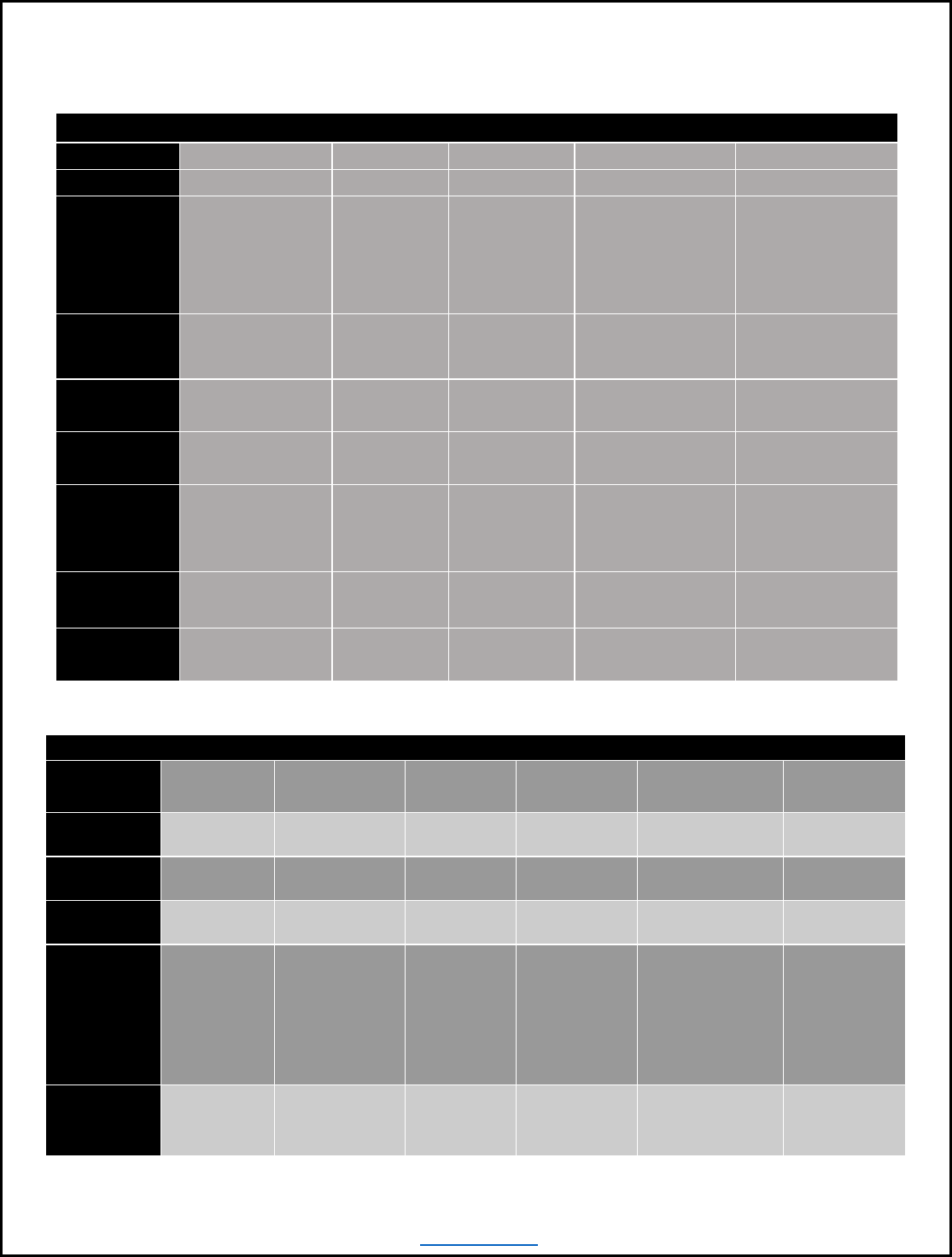
84
BACK TO TOP
Permissions Matrix
1.
Active RUC
Billet
MOL
OBI
DTS
GTCC
DTMS*
BN I-I
By Dir Template
I-I SgtMaj
SgtMaj Template
BN PersO
IPAC Director
(All
Active/Reserve
Rucs)
UDMIPS
Certifier
Authorizing
Official
BN Level APC
Certifier
BN Admin
Chief
MOL
Coordinator
Template
UDMIPS
Certifier
Authorizing
Official
BN Level APC
Certifier
Co I-I
MOL Manager
MOL
Approver
I-I 1stSgt
SgtMaj Template
MOL
Approver
Co Level APC
Viewer
Co Admin
Chief
MOL
Coordinator
Template
MOL
Certifier
Company
Authorizing
Official
Co Level APC
Certifier
Det Admin
Chief
Admin
MOL
Reviewer
Routing
Official
Alternate APC
Preparer
Co/Det
Admin Clerk
Admin
MOL
Reviewer
ODTA
Alternate APC
Preparer
2.
Reserve RUC
Billet
MOL
DMM
CLA
IDMS
MCMEDS
MROWS
BN CO
By Dir
Template
Approver
Endorser
BN I-I
By Dir
Template
Trusted
Agent
Endorser
BN SgtMaj
SgtMaj
Template
Endorser
Reviewer
I-I SgtMaj
SgtMaj
Template
Endorser
Reviewer
BN PersO
IPAC
Director (All
Active/R
eserve
Rucs)
DM
Manager/Truste
d Agent
Endorser
Reviewer
RTAMMS
BIC
Manager
Case
Administrator
Authenticator/
Order Writer
BN Admin
Chief
BN MOL
Coordinator
Muster
Manager
Endorser
Reviewer
Case Reviewer
Authenticator/
Order Writer
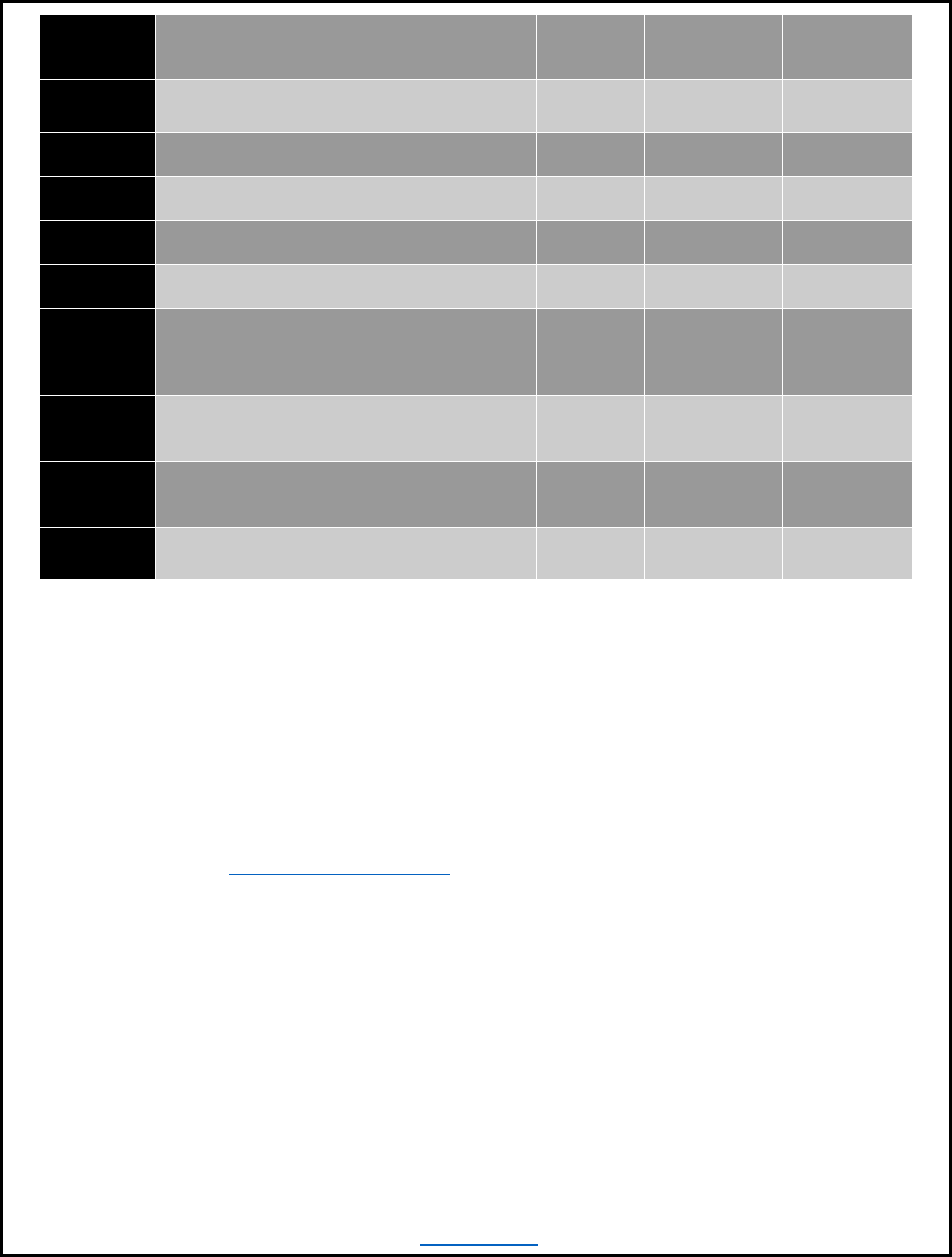
85
BACK TO TOP
BN Admin
Clerk
Admin
Muster
Manager/P
roxy
Preparer/Reviewer
RTAMMS/
Reviewer
Case Reviewer
Order Writer
Co
Commander
MOL
Manager
Approver
Certifier
Co XO
XO
Template
Trusted
Agent
Certifier
Reviewer
Co 1stSgt
SgtMaj
Template
Muster
Official
Certifier
Reviewer
Co I-I
By Dir
Template
Trusted
Agent
Certifier
Authenticator
I-I 1stSgt
SgtMaj
Template
Muster
Manager
Certifier
Reviewer
RTAMMS
Manager
Case Reviewer
Authenticator
Co Admin
Chief
MOL
Coordinator
Template
Muster
Manager
Preparer
RTAMMS
Manager
Case
Administrator
Preparer
Co Clerk
As required
Muster
Official
Preparer
RTAMMS
Reviewer
Case Reviewer
Order Writer
I-I
Training/S3
Reports
APD Mngr/
Schedule
creator
Reviewer
Co
Corpsman
Reports
Case
Administrator
a. Gaining Access to Systems
• MOL: An Assumption of Command Letter must be sent to MISSO 16/17 via trouble ticket in
UDMIPS in order to receive the MOL Manager role for a RUC. All other templates can be
assigned once the Company Commander or Company I-I receives their access to MOL.
• DMM: To become an Approver the Assumption of Command Letter must be forwarded to
the DM Manager (BN PersO) in order to grant access. For all other permission, submit a DD
Form 577 IAW MCO 1001R.1L, Chapter 6
• MROWS: DD Form 2875 (SAAR) must be filled and submitted to MROWS
Helpdesk (mrowshelpdesk@usmc.mil)
• CLA: DD Form 2875 (SAAR) must be filled and submitted to MISSO 16/17 via the trouble
ticket in UDMIPS.
• IDMS: DD Form 577
• MCMEDS: Must be HIPPA certified
• OBI: Can be granted via the MOL management module. Already included in most
supervisory templates.
• DTS: DD Form 577 and training must be completed IAW MCO 4650.39A.
• GTCC: Appointment letter and training must be completed IAW MCO 4600.40B
• IAPS: Administration Marines must request role via the website.

86
BACK TO TOP
PROMOTIONS
Promotions:
Promotions are the backbone of the Marine Corps for rewarding enlisted Marines for
excellence.
SMCR promotion eligibility periods for PVT/PFC are held monthly. Promotions
eligibility periods for LCpl and Cpl are held quarterly. Commanders will ensure all Marine's promotion
data is entered accurately and timely into Marine Corps Total Force System (MCTFS) and through the
MOL Training Module or via Unit Diary.
MOL will be the primary means for recommending and
non-recommending Marines for promotion.
Any secondary changes to this will be communicated
via email from the BNCO, XO or Personnel Officer (PersO) if MOL is unavailable or in other cases.
Below are CLB 451'srequirements for monthly/quarterly promotions:
1.
CO/I&I Permissions: Due to the geographic distribution of CLB 451, Company Commanders,
Detachment Officers In-Charge (Det OIC), and Inspector-Instructors are granted permissions as the
Commanding Officer (CO) for their respective Reporting Unit Code (RUC) which would usually be
reserved for a Commanding Officer with special courts-martial convening authority as defined by
reference.
In order to facilitate the promotion process via MOL, Company Commanders,
Detachment Officers In-Charge (Det OIC) and Inspector-Instructors must grant approver permissions
within the promotion module in MOL to the Battalion CO and Inspector-Instructor.
a.
Company Commanders, Detachment Officers In-Charge, and Inspector-Instructors will
ensure their assumption of command letter is submitted and received via MISSO/MISSA portal to be
granted permissions for their unit and grant permission as required tithe designated Battalion personnel.
Commanders must familiarize themselves with the procedures for requesting and giving permission in
MOL and take the action as required.
2.
Promotion Recommendations: Promotion recommendations for Marines not recommended for
promotion are due to the battalion administrative shop via email SMB CLB-451 Sl@usmc.mil NLT
the 10th of every month from the site I-I, I-I 1stSgt, or site admin chief or designated representative of
each unit. All submissions for promotion recommendations will be submitted using a roster of
Marines that are being not recommended along with it being submitted in JEPES. The roster will
serve to validate all not recommended Marines and will allow the BN CO/I-I to know who is be not
recommended. The roster will also be accompanied by signed pg. 11’s. If the pg. 11 cannot be
signed due to the Marine being UA or pending legal matters, please annotate in signature black as
follows:
“SNM unavailable for signature due to (put reasoning here)”
a.
All Marines who are not recommended for promotion must have their entries certified
by the Battalion Commanding Officer/Inspector-Instructor by the 15
th
of each month. If further
clarification for a recommendation is required, ensure to provide amplifying guidance in an email
to the BN staff with a better picture of the situation.
b.
Company Commanders do not have authority to certify unless given
special promotion authority.

87
BACK TO TOP
c.
The command's legal report should be compared to the promotion
recommendations each month to ensure Marines pending civil court action, NJP, or
Court Martial are not recommended for promotion. Special attention should be given
to those pending legal, for example DUI/DWI charges or a Marine being processed
for Administrative Separation via CLA.
d.
NLT the 10th of the month the BN S-1 will consolidate all recommendations from the
units.
The S-1 will then send out an email to the BN CO/I-I to notify of which sites have
recommendations for the appropriate month.
e.
Once the recommendations have been approved by the BNCO, the BN S-1 will run
the recommendations via Unit Diary and the submitted pg.ll's will be uploaded to the members
OMPF.
3.
Will not promote: Will be used to not promote a Marine who was recommended and selected
for promotion in cases which apply. If a commander has such instances, NLT 5th of the month the
commander will non-recommend the Marine by notifying the BNCO/I-I. Once approved byte
BNCO, an email will be sent to the BN S-1 with a pg. 11 and the roster for action. The same
sequence in the above non-Rec process will be used to complete the process. Will not promote will
not be used in place of the non-rec process.
4.
Delete as Erroneous promotions:
As soon as identified, a standard naval format letter,
explaining/justifying the circumstances must be drafted and sent to the BNCO for signature. The letter
will then be forwarded to the S-1 Promotions section for action for any Marines that the BNCO/I-I
does not wish to promote. A signed copy of this letter will be placed in the Co/Det promotion folder.
5.
Zeroed out composite score:
a.
All CLB 451 units must pull a zeroed out composite score roster from Report
Studio/Net on a quarterly basis after the new composite scores have posted in the MCTFS.
(1)
The promotion quarters are Oct, Jan, Apr, and Jul
b.
The new composite scores usually post in the MCTFS about the middle of the month
prior to the new quarter, i.e. scores for the October quarter post in the middle of September.
c.
Rosters containing zeroed out scores, will be reviewed by each Individual Co/Dot
to determine what caused the Marine's composite score to zero out.
d.
Each Marines "CSHW" screen in the MCTFS must be reviewed to determine the
missing data that caused their composite score to zero out.
e.
Contact your servicing MISSO or S-1 to obtain assistance with extracting
rosters from Report Studio/Net.
f.
The causes for a composite score to be zeroed-out are missing rifle score, PFT score,
CFT score, or missing pro/con marks.

88
BACK TO TOP
g.
The promotion clerk must then obtain the missing information from the S- 3 and/or
the individual Marine.
h.
This process must be monitored on a regular basis.
After the initial
request for information is submitted to the S-3 or Marinette promotion clerk must
conduct follow-up action and retain copies of all correspondence in the promotion
folder.
i.
Zeroed-out composite score rosters must be maintained in the Co/Det's promotion folder
and forwarded to BN's promotions section along with annotations that show exactly what action
was taken to correct the zeroed-out composite scores.
j.
In cases where eligible Marines are missing PFT/CFT scores due to assignment to
limited duty their last PFT/CFT score will be used to report a current score in the MCTFS to
update the composite score. This only applies to Cpl's and LCpl's who need a composite score.
k.
Once the missing data has been obtained it must be reported via Marine Corps
Training Information Management System (MCTIMS) at the unit or via unit diary at the S-1.
l.
Your S-3 personnel can update most of these deficiencies via the MCTIMS module.
m.
The S-1 must request a "Request Re-compute Composite Score “entry via the unit diary
once the missing information has posted in the MCTFS.
n.
If eligible, a remedial promotion request must be submitted if your
Marine meets the cutting score.
6.
Junior Enlisted Promotion Evaluation System (JEPES): JEPES occasions are designed to
evaluate junior Marines job proficiency and conduct. It is also used as a means for increasing or
decreasing junior Marines promotion opportunities. Paragraph 4007 of the IRAM outlines the
standards of proficiency and conduct which should be applied to the assigned marks.
a.
MOL JEPES occasions are auto generated in the system for the Semi-Annual/Annual
(SA/AN) marks and when specific occasions occur per the IRAM.
Marks need to be entered
immediately by the chain of command and have annotations by every Marine in the chain of command
that makes remarks.
b.
Per References (b) and (c), When the effective date of any reporting occasion coincides
with the SA/AN marking period on the 31st of July and December (for Reserves), the other reporting
occasions will take precedence.
c.
No later than ten working days prior to their completion the Battalion Adjutant and Sergeant
Major are to be notified of the completion status of SA/AN occasions.

89
BACK TO TOP
d.
All Marines who are promoted to the rank of Corporal and Sergeant are required to have
promotion occasions created reported via the JEPES module in MOL.
e.
The effective date of these occasions is the date prior to the Marines promotion, i.e. Marines
Date of Rank is 20181201 and the effective date of promotion occasion is 20181130.
f.
The most efficient way to process and track promotion occasions for the Co/Det is to open
one occasion for all Marines being promoted each month. Once the occasion is open, the SEA must
place all Marines being promoted, then the companies/sections can enter their recommendations.
g.
The SEA can then print out the occasion and place it in the promotion folder once the
Battalion Commanding Officer or Inspector-Instructor approves all marks in MOL.
h.
Upon approving the JEPES occasion site admin chiefs will ensure the occasion is closed out
and archived in MOL for future use.
i.
Page 11 entries:
(1)
A page 11 entry must be generated for all Marines who are not recommended for
promotion, have a will not promote entry reported, and for all periods of promotion restriction.
(2)
An example of the Promotion Restriction page 11 entry can be found in paragraph
4006.3e of the IRAM as updated by PAAs 09/11, 10/11 and 12/11.
(3)
An example of the eligible but not recommended for promotion counseling entry
can be found in paragraph 4006.3f of the IRAM.
(4)
All page ll's must be provided to the S-1 for uploading into the Marine's Electronic
Service Record (ESR).
(5)
The Promotion clerk must review each Marine's ESR to verify that the page 11
entry has been properly uploaded.
(6)
A copy of each page 11 entry should also be place into the Co/Det's promotion
folder.
7.
Body Composition Program (BCP):
a.
All Marines assigned to the BCP program must have the completed BCP Evaluation
form (NAVMC 11621) and completed page 11entry on file.
b.
The Battalion S-1 will report these Marine's BCP assignment via MCTIMS once the
complete package is received from the Battalion S-3.
c.
Each Co/Det must track the status of these Marines to ensure that they are properly
assigned, removed, and extended on the program

90
BACK TO TOP
BCP assignment process
Step 1: Upon notification that a Marine exceeds established weight standards, the FFI or CPTR will
conduct a BCE and record results on NAVMC 11621.
Step 2: After confirmation that a Marine exceeds established weight and body composition standards,
the FFI or CPTR will notify the chain of command that a medical evaluation is required.
Step 3: At any time in the BCP assignment processing period (60 days), Marines may have additional
weigh-ins/BCEs conducted. If the Marine returns to standard within the BCP assignment processing
period, the Marine will not be assigned to BCP. If the Marine is still out of standards at the end of this
period, the Marine will be assigned to BCP. If a performance evaluation is due during the period of
BCP processing, the Marines HT/WT/BF percentage data will be accurately reported, and a statement
will be included in the report that the Marine is being evaluated for assignment to BCP. The Marine
will be provided the opportunity to submit a statement regarding this adverse comment.
Step 4: An authorized medical provider (Independent Duty Corpsman, Nurse Practitioner, Physician, or
Physician Assistant) will evaluate the Marine and make the following determinations: (a) Medical
clearance to participate in the BCP/MAP/ remedial conditioning. (b) Physical limitations or restrictions.
(c) Recommended weight and body composition fat reduction goals. (d) Recommended nutritional and
dietary measures. (e) Referral to BCBEMP for evaluation of possible underlying cause for weight gain.
Step 5: After the medical evaluation, the FFI or CPTR will deliver the package to the commander/OIC.
The commander/OIC will conduct an assessment and make a BCP assignment decision. ONLY the
commander is authorized to sign the NAVMC 11621. The assignment to BCP will be ran via
MCTIMS.
Step 6: If assigned, the Marine will be counseled on his/her deficiencies, corrective action required and
information regarding BCP assignment responsibilities. The Marine will acknowledge notification of
deficiencies and BCP assignment by signing the NAVMC 11621 and a NAVMC 118, Administrative
Action,” (page 11) entry in accordance with paragraph 6105 of MCO 1900.16. Provide admin with
source documents for assignment to BCP and promotion restrictions to upload into the ESR.
Step 7: At the conclusion of the six-month period, the FFI or CPTR will complete the final BCP
assessment and deliver the package to the commander/OIC for a final determination. For Marines on
extended or second assignments, this process can occur as soon as the Marine complies with established
weight and body composition standards.
Step 8: Once the final determination has been made and appropriate entry will be reported via S-3
MCTIMS, the FFI or CPTR will complete documentation of the BCE and retain, in accordance with
MCO 5210.11 and SECNAV M-5210.1.
(a)
Body Composition Program (BCP) Extension: (1) Only Marines on their first assignment can
be granted an extension. (2) A Marine who has failed to comply with established weight and body

91
BACK TO TOP
composition standards, but has made satisfactory progress will be afforded a one-time six-
month extension. Additional extensions are not authorized. (3) Marines who fail to make
satisfactory progress will not receive an extension and will be processed for administrative
separation in accordance with MCO 1900.16 and SECNAVINST 1920.6. (4) An extension
does not constitute a second assignment.
(b)
Second Body Composition Program (BCP) Assignment: (1) Marines who have been
assigned to and officially removed from the BCP at any time in their career yet fail to meet
established weight and body composition standards, may receive a second one-time six-
month assignment to the BCP. (2) Extensions to second assignments are not authorized. (3)
All other BCP management policies apply.
(c)
Body Composition Program (BCP) Removal: (1) Marines on their first BCP assignment
who comply with established weight and body composition standards at the conclusion of
their six- month assignment period will be removed from the BCP by their commander/OIC
possessing special courts-martial convening authority utilizing NAVMC 11621, with no
further action required. (2) Marines on their second assignment who comply with
established weight and body composition standards can be removed from the BCP at any
time during their six-month assignment. (3) Marines who fail to comply with established
weight and body composition standards due to unsatisfactory progress shall receive a page
11 entry in accordance with paragraph 6105 of reference MCO 1900.16 and be processed
for administrative separation (Weight Control Failure). (4) Marines who fail to comply
with established weight and body composition standards due to indifference or apathy shall
receive a Page 11 entry in accordance with paragraph 6105 of reference 1900.16 and be
processed for administrative separation (Unsatisfactory Performance).
(d)
Coordination and Communication: The S-3 is responsible for the program to the CO
(Per MCO 6110.3A; The Commands Force Fitness Instructor (FFI) or Command Physical
Training Representative (CPTR) is responsible to the commander for development,
implementation, management, and supervision of the organizational MAP, BCP and
remedial conditioning programs). The S-1 is responsible for the correct promotion
process created by the Body Composition Program. The “Week” after drill weekends:
2. Pull the roster of Marines on BCP once a month (the week after drill). (The “BCP/MAP Assignments”
roster is available via MOL Reports, Team Content, ODSE User Reports, MCAAT, FUNCTIONAL
AREAS, and Promotions).
3. Designate a specific date and time to go over with S-3 on all BCP assignments for the
command.

92
BACK TO TOP
BCP (6 part folder) process and checklist
1
st
tab: NAVMC 11621 “BCP Evaluation”.
1)
Verify form has all required fields completed correct to include signatures and dates.
2
nd
tab: Medical documentation.
1) Verify all required medical documents able to be released under HIPPA are present.
3
rd
tab: Counseling records “6105’s and Pg11’s”
1) Verify correct 6105 counseling are completed, signed, and uploaded into the ESR as it
applies:
a. When a Marine is assigned to the BCP.
2) When a Marine fails to make satisfactory progress while assigned to the
BCP. This entry is to be made during the fourth month of assignment.
3) When a Marine makes satisfactory progress, but fails to meet established
weight and body compositions standards. This entry will be made at the
conclusion of the six-month BCP assignment period.
4) When a Marine is granted an extension to the BCP.
5) Verify correct page 11 promotion restriction has been completed, signed, and uploaded
into the ESR and it posted to MCTFS with code 4.
4
th
tab: Weekly weigh-ins and BCE results (ACDU). Monthly weigh-ins and BCE results
(Reserves).
5
th
tab: Remedial conditioning training log.
6
th
tab: PFT and CFT performance results.
4.
Competency Review Board (CRB):
a.
Procedures:
1)
All competency review boards, and administrative reductions must be completed in
accordance with Chapter 6 of MCOP1400.32D (Marine Corps Enlisted Promotion
Manual).
2)
This includes the Marine's notification, allowable response time, board composition,
and date of reduction.
3)
A complete copy of the CRB package must be kept in the command’s correspondence
files.
4)
The Marine's date of rank (DOR) must be the date of rank previously held in the grade
to which reduced.

93
BACK TO TOP
5)
The effective date of rank must be the date that the Commanding Officer with
promotion authority signs the letter.
6)
Example: Commanding Officer signs letter administratively reducing a Marine from
Corporal to Lance Corporal on 20181205 (Marines previous date of rank for Lance
Corporal was 20150101). Marine's new date of rank is 20150101 and effective date
for pay purposes is 20181205.
7)
There is also a 3 or 6 month promotion restriction associated with the reduction per
Paragraph 1204.4n and 1204.40 of the Enlisted Promotion Manual (MCO
P1400.32D). Please note, this also includes suspended administrative reductions per
paragraph 1204.
8)
A copy of the letter from the Commander to the Marine notifying them of the results
of the CRB must be provided to the S-1within 3 working days.
9)
Each Co/Det must track the CRB to ensure that it was properly reported and has
posted in the MCTFS.
Recommend the "GRAD “screen be printed and filed
with the CRB package to document the correct completion of the reduction.
10)
A page 11 must be completed in accordance with PAAs 009, 10, and 12-11 for the
corresponding promotion restriction period.
11)
Reduction pro/con marks must be completed via MOL. The effective date is the date
prior to the effective date of the reduction. Recommend the S-1 personnel create the
occasion in MOL to ensure completion and the correct effective date is reported.
b.
Each Co/Det must have internal control procedures in place for the CRB process.
5.
The Promotion section at each Co/Det must have written internal control procedures
established that cover billet responsibilities, document flow within the Co/Det, and relationship
within other organizations and services.
These procedures must cover all aspects of the
promotion clerk's duties and responsibilities. Coordination between the promotion clerk and
legal clerk must be made and supervisory personnel must ensure this is reflected in the turnover.

94
BACK TO TOP
REENLISTMENTS AND EXTENSIONS
Reenlistments and Extensions:
1.
Will Reenter:
a.
The Career Planner must submit a "will reenter" request to the S-1 for all Active Duty/Active
Reserve Marines who are within 90 to 45days of their EAS/ECC and have submitted a request
for reenlistment or extension.
b.
The Career Planner must also notify the S-1 in any case where a "will reenter" has been
reported in the MCTFS and the Marine subsequently chooses to separate from active duty.
c.
The S-1 will then report a "delete as erroneous" entry in MCTFS.
2.
Reenlistments:
a.
Each Co/Det must ensure that each Marine's DD Form 4 (Enlistment/ Reenlistment
Document), NAVMC 321A (Agreement to Extend Enlistment), and Statement of
Understanding (SOU), as applicable, are forwarded to the S-1 within 3 working days of
their occurrence for unit diary reporting.
b.
The S-1 will report the entries on the unit diary and scan all documents to the Marine's
Electronic Service Record (ESR).
3.
Auditing:
a.
The Co/Det must verify the reenlistment and extension is properly reported in
MCTFS.
b.
The unit must also verify that all documents submitted have been scanned to the Marine's
ESR. Certifying S-1 will scan the document into the ESR, Detachments just must ensure that
they have posted.
4.
Lump Sum Leave (LSL):
a.
The Career Planner must afford each Marine the opportunity to sell back leave in
conjunction with any reenlistment and on the effective date of the first extension of any
contract.
b.
Each Co/Det must have written internal control procedures for their reenlistment and
extension process. These procedures must include billet responsibilities, monthly report
procedures, document flow within the office, and relationship with other organizations and
services.

95
BACK TO TOP
RTAMMS/Drill Manager/ IDMS
RTAMMS/DMM: Reserve Training and Medical Management System (RTAMMS) is the website that all I-I
and SMCR members use to track, maintain, submit and pay SMCR member for drills. The website itself also
tracks all SMCR members placement into Billet Identification codes (BIC). The system is useful in terms that
all SMCR members are loaded into the system and able to be moved around to appropriate BICS. This will
also establish them as a member that rates IDT reimbursement if properly aligned.
Permissions
1. There are several permissions that are within RTAMMS as listed and described
below:
a.
Drill Manager
1. Drill Manager is designed for the SMCR leadership to handle all functions of mustering, submitting and
certifying the drills, however, S-1 should be involved in this process to ensure the muster sheet is filled out
correctly. The following are the only statuses that should be on the muster sheet:
a. X – present for duty
b. EA – excused absence (should include a brief reason for the absence
c. UA – unauthorized absence
d. NS – not scheduled (Only for a RIDT approved PRIOR to drill or a Marine on orders at the time of
drill. NS with a reason of 48 drills scheduled can be written over. Refer to the paid drills report prior to
marking present for duty)
e. NM – not a member (this should ONLY be used if the Marine has an approved transfer to the IRR
request effective prior to the drill or the Marine is past his/her RECC and diary action hasn’t been
taken yet)
2. Prior to the muster being submitted, S-1 should review the muster sheet to ensure it is administratively
correct. Once the company or detachment CO/OIC certifies the drills, S-1 exports the muster sheet which
results in the drills being reported in MCTFS. THIS IS DONE ON THE LAST DAY OF DRILL.
IDMS (Inventory Development and Management System)
The Inventory Development and Management System (IDMS) is a sub-module of the Requirements Transition
and Manpower Management System (RTAMMS), which also includes the Drill Manager (DM) and Marine
Corps Medical Entitlements Data System (MCMEDS) modules. IDMS provides inventory management,
needs identification, and vacancy fulfillment for improved decision support, optimal inventory distribution,
and collaboration. It also aids in the development, forecasting, prioritization, and sourcing of Selected Marine
Corps Reserve (SMCR) and Individual Mobilization Augmentee (IMA) manpower requirements.
1. Billet Identification Codes (BIC)
a. It is required that every morning part of the daily battle rhythm for an administrator is to log into
IDMS and check for BIC discrepancies.

96
BACK TO TOP
b. This process is automated but requires that user to validate placement of Marines in proper BICs.
To successfully do this, the administrator must select the discrepancy and choose the appropriate
BIC for the Marine.
c. The BIC for the Marine must be a Grade and MOS match.
d. Per guidance from the HQMC drilling reserve BIC assignment and management policy (Ref p), when
two Marines belong to the command with only one BIC open the Marine with great obligated service
will be assigned to the BIC. The other Marine will be reported as excess.
e. All Marines pending legal or medical will be reported as excess.
f. Two Marines are not authorized to fill the same BIC except during a 90-day turnover period in
conjunction with HQMC-directed action. Outgoing SMCR Marines will be assigned into an excess
BIC of EX009.

97
BACK TO TOP
SEPARATIONS
Active-Duty Retirements/Separations
For Active Duty retirements within the normal parameters of 4 to 14 months from the date of retirement or
separating from active duty, the below procedures must be followed.
1. The Marine requesting retirement must submit an Appendix J via the correspondence tracker to the
battalion S-1 to be signed by the battalion I-I.
2. Site administrators will report the request for retirement within 5 business days from receipt of the
signed Appendix J.
3. Once approved by Headquarters Marine Corps, the OBI module in MOL will populate for retiring
Marines and Marines that wish to separate from their active service can begin the OBI process as
early as a year from their EAS (same OBI procedures will apply).
4. A Survivor Benefit Plan (DD Form 2656) notarized as required, and SBP training certificate must be
submitted to the administrative section no later than 45 days prior to departing on Leave While Awaiting
Separation (LWAS) for Marines that are retiring. Upon receipt of the DD 2656, the unit S-1 will report the
“SP” training code on unit diary.
5. No later than 30 days prior to the Marine departing on LWAS orders, a draft DD 214 will be provided by
the unit administrators for review by the Marine. Any corrections to the DD 214 will be submitted via
email to the battalion or company level administrative section within 5 business days.
6. No later than 15 days prior to departing on LWAS orders, the final Transition Readiness Seminar (TRS)
form and final physical (SF 600) must be submitted in the OBI or S-1 Section to complete the Marine’s
separation file. The S-1 will then report the “TA” and “TZ” training codes for TRS and report the final
physical on unit diary.
7. The S-1 Section will finalize and sign the DD 214 and return it to the retiring/separating Marine within 5
business days. The member will receive copies of DD214 pages 1 and 4. The S-1 will retain the Service 2
copy.
8.
Upon the member’s departure, the signed DD 214 and all source documents will be submitted to the S-1
Section for final verification and upload to members OMPF.
9. On the day after the member’s retirement, the unit S-1 will verify if they need to create an 11060 or if the
Marine will be automatically paid their remaining entitlements. (SEPS screen in MCTFS, Final Pay Flag A
= Automatic, M = Manual entry in DTMS). If a manual entry is needed, it will be submitted to the finance
office via DTMS within 3 days of the retirement.
Outbound Interview (OBI) via Marine Online (MOL)
1. Upon receipt of Permanent Change of Station (PCS) or Permanent Change of Assignment (PCA) Orders, the
OBI module inside of MOL will populate. To complete the OBI process the following steps must be
completed:

98
BACK TO TOP
a. Marine must complete the OBI no later than (NLT) 90 days from the requested detach date.
b. Unit administrators will review the OBI and add comments, as required.
c. The admin reviewers (S-1 clerk) will finalize OBI no later than 45 days prior to the requested detach
date.
d. Battalion and/or Company administrators will review and certify OBI within 5 business days for
CONUS personnel and within 10 business days for OCONUS members.
If the above timeline is followed, a Marine executing orders will have certified orders in hand NLT 5 days
prior to the member’s detach date. If the above timelines cannot be met, an email from the unit leadership
must be sent to the battalion S-1 with reasons why the standard timelines could not be met and must copy the
Assistant I-I, Battalion I-I, Sergeant Major, and the Personnel Officer on the message.
Reserve Retirements/Separations
For reserve retirements within the normal parameters of 4 to 14 months from the date of retirement or
separating from the SMCR, the below procedures must be followed.
1. The Marine requesting retirement must submit a request to transfer to the retired reserve awaiting pay
at age 60 Reserve Retirement Request via the correspondence tracker to the battalion S-1 to be signed
by the battalion CO.
2. Site administrators will report the request for retirement within 5 business days from receipt of the
signed request.
3. Once the request is approved by HQMC a DFR will generate an approval notification and the
Marines retirement date will post to the record.
4. On Marine’s retirement date, site administrators will report the transfer to retired at age 60 list via
unit diary.
5. For separations for Marine’s being released from active duty to include reserves on orders over 90
days and reserve mobilizations, the below procedures must be followed.
6. Site administrators will create a DD 214 based off the Marine’s EAS in DTMS utilizing the
Appendix B from the separations manual to verify the Marine’s service. Once the DD 214 is
reviewed by the Marine and certified by the unit’s certifier, the Marine will be automatically dropped
by DTMS.
7. Release from Active-Duty orders will be created by the site administrators and signed off by the
Commanding Officer. These orders will include the Marine’s EAS, final address and how many
days of leave will be taken, sold, or carried over.

99
BACK TO TOP
8. Once the drop has posted, site administrators will verify the SEPS screen in MCTFS for the final pay
flag code. If the final pay flag is an “A”, the member’s final pay and LSL will automatically pay out
following the drop. If the pay flag is an “M” an 11060 will automatically be created in DTMS. The
document will need to be assigned to a preparer by the certifier and worked. All MROWS orders to
include modifications and release from active-duty orders will need to be attached.
9. When a Marine elects to carry over their remaining leave balance, the site administrators will need to
create a Carry Over Leave Statement that is to be signed by the Marine separating. TTC 316-000 will
need to be reported via unit diary prior to the Marine being dropped from active duty.
10. If a Reserve Marine is on order over 30 days but less than 90 you will not draft a DD214, and will
instead utilize the Release from Active Duty orders
and run a drop sequence 378-000 on diary for the
last date of orders.

100
BACK TO TOP
UNIT DIARY AND UDMIPS
Unit Diary:
The unit diary is the input method used to report events and occurrences of
units, personnel action, and data relative to Marines supported by a reporting unit of the
Marine Corps. The UDMIPS module is the system by which all administrators effectively
process and manage most administrative actions for a command. It by this standard that as a
BLAM that you must maintain integrity and standardization across all sites. The purposes
of Unit Diary are below:
1. Provide the means to report information pertaining to Marines and units into the MCTFS.
2. Serve as a permanent historical record of the unit in the Archives of the United States.
3. Serve as the principal document to substantiate pay status changes or critical personnel
changes.
The PRIUM, MCTFS Codes Manual, and MCTFS FPM are the three references used and
required to prepare unit diaries and manage MCTFS. These three manuals contain all
pertinent information concerning MCTFS. These manuals must be maintained and most
importantly must be used. A common error is to rely upon memory or refer to old docu-
ments. The MCTFS is dynamic and extensive changes are implemented approximately
every 6 months (Oct/Apr).
INTERNAL CONTROL PROCEDURES
1.
Commanding Officers and delegated officials must and will establish written internal
control procedures that describe the methods used to ensure accurate and complete
reporting of pay-related information. These written procedures should be tailored to fit
the needs of each administrative or financial office, and can take the form of any, all, or
a combination of the following: Standard Operating Procedures (SOP), individual desk
top procedures, unit/organizational directive(s), "tickler files," etc. Regardless of the
form of the written internal controls, they must, at a minimum, include audit procedures,
billet responsibilities, document flow within the office, and relationships with other
organizations; for example, DFAS-Cleveland (DFAS-CL), joint reception center, or
housing office. Other areas that require particular attention, to ensure internal command
information is relayed to the appropriate reporting unit, are legal, training, off-duty
education, career retention, promotion recommendations, personnel tempo events, leave
tracking, and separations. Once documented, the internal controls must be maintained
and reviewed for current content.
2.
Unit Diary Process
Step 1. Member/unit submits source documentation.

101
BACK TO TOP
Step 2. Preparer reviews source documentation. If source documentation is not accepted, the Preparer
returns the source documentation to the member/unit, else the Preparer opens, prepares, reviews,
corrects, and submits unit diary to the Reviewer.
Step 3. Reviewer reviews unit diary. If the unit diary needs corrected, the Reviewer returns the unit
diary to the Preparer for correction, else the Reviewer submits the unit diary to the Certifier.
Step 4. Certifier reviews unit diary. If the unit diary needs correction, the Certifier returns the unit
diary to the Reviewer for correction, else the Certifier certifies the unit diary.
Step 5. The unit diary processes with the MCTFS cycle then the Unit Diary Archive process.
Step 6. After successful processing, the unit diary and all its source documents are filed in accordance
with the applicable retention requirements.
PERMISSIONS
1.
The commanding officer uses the commander's role and permissions to assign/create UD
certifiers, reviewers, and preparers within the unit. Once the Commanding Officer has
assigned additional Certifying Officers, the Commanding Officer may then delegate the
ability for Certifying Officers to further assign certifier, preparer or reviewer
roles. Commanding Officers must request the Commanding Officer role and permissions from
their servicing MISSO
2.
There are three types of permissions that are granted in UDMIPS. They are certifier,
reviewer, and preparer. Certifier gives you the ability to review and certify the following:
diaries, diary feedback reports (DFR’s), orders, EPARS, and grant permissions to others.
Reviewer gives you the ability just to review all the modules within UDMIPS but does not
allow you the ability to edit anything. Lastly, preparer gives you the abilities to create and
work diaries, DFR’s, EPAR’s, lastly outbound and inbound orders.
3.
The Battalion I-I and CO are the authorities to grant permissions. In most circumstances
this permission is delegated down to the Battalion Personnel Officer or Administrative
Chief. To get permissions, the administrator must fill out a DD577 which must be
signed by either the Battalion I-I, PersO or Company I-I’s. The complete verbiage for
block 7 is:
a. Certifier: Reviewing for accuracy and certifying unit diaries, outbound and inbound
orders, and EPAR’s within UDMIPS.
Command: Your site
ARUCS: Your’ active and reserve ARUC
Permission Form: UDMIPS Permissions
*Note* A certifier must complete the COL Foundations and Military pay
training prior to permissions being granted COL Foundations and Military
Pay. Once complete training code ZL must be ran in UDMIPS for annual and
ZM for refresher.
b. Reviewer: Reviewing for accuracy with unit diaries, outbound and inbound orders,

102
BACK TO TOP
and EPAR’s within UDMIPS.
Command: Your site
ARUCS: Your’ active and reserve ARUC
Permission Form: UDMIPS Permissions
c. Preparer: Preparing and working unit diaries, outbound and inbound orders,
EPAR’s, and DFR’s
Command: Your site
ARUCS: Your’ active and reserve ARUC
Permission Form: UDMIPS Permissions
4.
No other individuals are authorized to sign these documents. Once the DD577 is completed it
must be uploaded to the administrator’s OMPF. The Battalion I-I will need to grant delegation
of authority in order for the PersO or Admin Chief to sign DD577’s template is linked here
Unit Diary Procedures
1.
Due to level with which this command is spread out all Unit Diaries will be certified at
the battalion Level. Reporting unit diaries daily is time consuming for the preparers as well
as the certifier. As a result, diaries will be consolidated as much as possible, and reported on
the last cycle of the week. Diaries will be due to the certifier’s NLT 1400. All source
documents and files will be uploaded directly to the diary utilizing the unit diary source
document folder uploader. Click the following link to learn how to achieve this Source
Document Uploader.
2.
UD entries must be checked against the entries in this Manual and TTC sequence listings. The
source document (for example, leave papers or school completion certificates) will be
compared with the UD to ensure the correct transaction has been reported. The source
documents will be maintained in the unit diary archives for two years plus current. When the
UD is presented to the Certifying Officer for certification all source documents will be
attached. UD must be certified within 5 days from the Preparer creating the UD. The unit will
establish a 30/31-day "tickler" file to monitor transactions that are to be reported at a future
date. For example, leave authorization, subsistence entitlements, FSA, TAD periods, or
separations. UD/MIPS provides an electronic tickler file that will prompt users of daily tasks.
3.
Timely reporting of MCTFS information is 5 days from the date of occurrence to the date of unit diary
certification. However, for complex matters, accuracy and completeness should not be sacrificed to meet the 5-
day goal. Due to the influence the unit diary process has on the Marine's pay, it is imperative that certain unit
diary transactions receive special attention to ensure their timely submission. Those transactions measured for
timeliness are listed in Chapter 12, Section 5. Reporting unit commanding officers are encouraged to become
familiar with them and strive to attain timely unit diary input.
a. Consolidated Diary Process

103
BACK TO TOP
(1)
Create a future diary at the beginning of the week for the last cycle of the week.
*Note* Use the cycle calendar located in UDMIPS to verify
(2)
Add all transactions to the future diary throughout the week and prepare the
source documentation for the upload to unit diary source document tab.
(3)
On the morning of last cycle of the week, report any other transactions, scan, and upload
the source documents.
b. Exceptions to the consolidated diary process: There are time sensitive entries that need to
be reported prior to the last cycle of the week. Here are just a few examples (there may be
more)
(1)
Joins (active or reserve)
(2)
Transfers for orders 31 days or more (Reservists)
(3)
Pay entries (dependent on when U&E is scheduled for Active Duty pay entries)
(4)
Corrective actions for rejected transactions (See DFR Part II process)
c. When in doubt of whether a transaction needs to be reported outside of the consolidated
diary, contact the PersO or Admin Chief PRIOR to opening a new diary.
4.
Below is the guidance for all unit diaries and source documents across MFR:
a. The diary cover sheet will always be on top, and transactions sorted in alphabetical order.
b. If the diary is for a join the only thing on that diary will be all the TTC’s for the join on
the member.
c. The source documents will be sorted in TTC and alphabetical order behind the diary cover sheet.
d. MCTFS print outs are not considered source documents. They are supporting documents, as
such, anything being reported on diary must have the original source document and if needed
MCTFS print out screens. If you are in doubt, contact the battalion admin chief or PersO.
e. The only Marines authorized to finalize a diary are SNCO’s or the admin chief.
f. The entire diary with source documents will then be uploaded into the diary source documents
tab as one file. The file will be labeled as (ARUC_UD_#_date).
g. All IADT join diaries will need to include the reporting endorsement.
h. Requirements for source documents for all joins:
(1)
Fast checklist
(2)
All orders in sequential order i.e. (to boot camp, to Marine Combat

104
BACK TO TOP
Training, to school, to command)
(3)
Reporting Endorsement with sentence for receiving BAH if single
(4)
Travel Claim
(5)
Audit with OPT 23 worked (ensure that the transfer or drop from the
previous command on has posted on this before you work it)
(6)
D150 MCTFS Screen (if applicable)
(7)
10922 (if applicable) with all dependents birth certificates/marriage
certificates/divorce decrees (if the member has the correct form and source
documents already in OMPF attach them to the diary)
(8)
GTCC SOU with confirmation that application was submitted
(9)
Primary residence information with source documents (For all SMCR
including PSR Joins)
(10)
ESR upload confirmation
(11)
DTS Profile confirmation
(12)
Check in sheet
(13)
SOES Completion validated
i. The certifying site will do bi-weekly Second Stage Audits on Fridays on all Joins and will
report the Z2 training codes appropriately.
j. If the required source document file is not uploaded correctly to the diary the certifier will ask
once for you to attach it and if it is not uploaded by 1400 the Friday of that week, the
transaction will be moved to the transaction pool and the diary will be deleted.
k. All diaries are due by 1400 EST if it needs to be certified that day. If there are any
corrections to be made, they will be rejected back to you in an email or using the certifier
notes in UDMIPS annotating what needs to be corrected. Corrected diaries are due back
same day.
l. If a diary is received after 1400 EST, it will not be certified until the following day.
m. If a diary has been in the que and not completed by Friday of that week with all
appropriate corrections it will be deleted, and you will have to redo the diary
completely.
n. Once the diary is correct and ready for certification, the certifier will upload the source
documents from UDMIPS to the SharePoint Unit Diary files folder. The certifier will upload

105
BACK TO TOP
to the appropriate folder for the site the diary is related to.
DFR’s (Diary Feedback Report) Procedures
2. DFR’s will be answered weekly by 1300 on the last cycle of the week. This prevents the DFRs
from building up as well as ensures any required diary action is taken in a timely manner. If there
is a DFR that cannot be answered that day for whatever reason, communication with the PersO
and/or Admin Chief is required.
3. The DFR consists of three parts. The PRIUM defines them as follows:
a. Part I will contain all unit diaries that processed in the requested cycle. If the DFR is
requested without a cycle number, Part I will contain all unit diary information on the Diary
Statistic Report (DSR) for that reporting unit. As stated in Ref c, this is the result of the diary
that was processed on the cycle. No action required on this part, but you should be aware if
there were any rejected transactions or if the total number of entries reported on the diary does
not match what is on Part I.
b. Part II contains error messages generated from unit diaries submitted by the reporting unit.
Therefore, if no unit diaries are processed for the cycle requested, or if there are no rejected
transactions listed on Part I, there will be no action required. If there are rejected
transactions on Part II of the DFR, the following actions are required:
(1)
Each transaction listed on the report will be audited to determine why the transaction
failed to process correctly. The error message printed below the transaction gives a
brief reason for the failure and should be used as a starting point for research. Once
the reason for the error is known, the appropriate correction procedures can be taken.
(2)
Explain in the unit’s own words why the transaction failed. This will ensure the
certifier sees that the preparer understands why the transaction failed and will also
assist the preparer with not making the same error in the future.
(3)
Action Taken. This can be done by reporting a diary transaction from the DFR
(preferred method) or by stating what corrective action was taken to include the diary
number and date (putting transactions in a future diary or transaction pool do not meet
the requirement listed in the reference)
(4)
Request assistance from your regional Manpower Information System Support
Office (MISSO) when efforts to take corrective action at the reporting unit fail or
when the unit has questions concerning error messages.
c. Part III contains advisory messages generated from several different modes of input and are
not connected to a particular unit diary submitted by the unit. Therefore, a unit may not
have submitted a unit diary for several days and still have advisory messages posting to Part
III of the DFR for cycles processed during the period that no unit diaries were submitted. If
there are advisory messages on this part, the following actions are required:
(1)
Request assistance from your servicing Manpower Information System Support

106
BACK TO TOP
Office (MISSO) when all unit efforts to resolve advisory messages fail or when
the unit has questions concerning advisory messages.
- Any joins will be reported on the next cycle (Reservists) and will include the
diary number and date the transaction was reported
- Annotate what action was taken on the DFR
- Future action answers will not be accepted
Outbound Interview (OBI)
1. Upon receipt of Permanent Change of Station (PCS) or Permanent Change of Assignment (PCA)
Orders, or within six months or End of Active Service (EAS). The OBI module inside of MOL will
populate. To complete the OBI process the following steps must be completed:
a. Marine must complete the OBI no later than (NLT) 30 days from the requested detach date.
b. Unit administrators will review the OBI for discrepancies, required documents, and
add comments, as required.
c. The admin reviewers (S-1 clerk) will finalize OBI no later than 45 days prior to the
requested detach date.
d. Battalion and/or Company administrators will review and certify OBI within 5 business
days for CONUS personnel and within 10 business days for OCONUS members.
If the above timeline is followed, a Marine executing orders will have certified orders in hand NLT 5 days
prior to the member’s detach date. If the above timelines cannot be met, an email from the unit leadership
must be sent to the battalion S-1 with reasons why the standard timelines could not be met and must copy
the Assistant I-I, Battalion I-I, Sergeant Major, and the Personnel Officer on the message.
Trouble Ticket Service (TTS)
All MOL, MOL Unit Leaders, PAC, MISSO and MISSA users are able to create, modify, route, assign,
complete, and track Trouble Tickets. This system provides the mid-tier user base an enterprise solution to
submit Trouble Tickets for system issues, access requests, and feedback to their servicing MISSO for
resolution. The Trouble Ticket Service will also allow servicing MISSOs to resolve system issues and
requests in an efficient and timely manner as well as allowing the MISSOs to route, track and create
Trouble Tickets.
1. To create a Trouble Ticket, click the following link for a PowerPoint walkthrough TTS Walkthrough.
Electronic Personnel Administrative Requests (EPAR)
The EPAR system is an electronic method of submitting personnel related actions through your chain of
command or your supporting administrative office. It provides individual members and authorized unit
leaders the ability to submit and route administrative requests. The MyEPAR option is enabled for all
personnel that are affiliated to a unit in the Marine Corps Total Force System (MCTFS). This enhanced

107
BACK TO TOP
EPAR system will allow UDMIPS users to create, modify, route, assign, complete, and track EPAR
records. This system will standardize deployed administrative support, reduce rework due to incorrect
source documentation and required information, and increase accurate and timely MCTFS reporting. To
access the training guide for EPAR’s click the following link EPAR Training

108
BACK TO TOP
GENERAL
ADMINISTRATION
General Administration:
The disbursement of the MFR units and time zone differences can create
issues with tasks. It is imperative, that lines of communication always remain open. BN/Co/Det I-I
staff are to keep HHQ staff informed of all systems, personnel, or equipment problems/issues right
away to allow HHQ to assist/engage as needed. We must continually engage in a collective and
collaborative staff effort to fully utilize and enhance the skills, knowledge, and abilities of our team.
To be successful 0111 administrators, need to:
a.
Use references provided, as a guide. They will assist in answering many reserve or
general administration questions.
b.
Ensure administrators are readily available to answer all questions pertaining to
administration to all personnel assigned to their site. Please do the research and ensure it is passed
to those affected.
c.
Always ensure positive tracking is being conducted, do not just fire and forget, see
tasks through completion as applicable.
d.
Ensure that available admin manpower is used appropriately and plan accordingly to
have administrative support on hand to take care of administrative issues as needed.
e.
Questions should be asked when subjects' or tasks are not clearly understood.
Battalions S-1 is here to provide guidance and support all CLB 451 subordinate units.
SHAREPOINT
SharePoint:
Provides a collaborative information-sharing environment across the business and
warfighting domains to support communications, computing network information assurance, and
enterprise services infrastructures. It is primarily used for accessing, verifying, and updating data for the
unit such as the Co/Det contact roster, shared documents, monthly updates, etc.
1.
Company Commanders, Executive Officers, and First Sergeants, and all I-I staff members must
obtain access within 30 days of arriving at the Co/Det.
2.
Detailed information for requesting access can be provided byte S-6 or the designated Company
Information Systems Coordinator (ISC).
3.
Much of the needed administrative resources to assist units in the everyday functions are available
on SharePoint via the below link.

109
BACK TO TOP
Gaining Access to the MISSA/MISSO Portal
1. Personnel requiring access to a MCEITS EIS SharePoint site, I.E. MISSA/MISSO Portal, must have
a CAC enabled MCW domain account. MCEITS EIS utilizes the MCW domain Active Directory
for authentication and identification of users. Individuals who have a MCW domain workstation or
an active eHQMC account do not need to submit a new account request to access MCEITS EIS
hosted SharePoint sites.
2. Users who do not have access may submit their request at the following link MCIETS Users
must ensure
a)
to select “MISSA” from the available SharePoint Site menu options to have
the request routed accordingly and
b)
They provide a **valid** and **official** email address.
3. Requesting a new account is a multistep process. Once the request is submitted, MISSA personnel
will review and approve the request for action by the MCEITS EIS Helpdesk. The user, upon creation
of the account will receive an email notification requesting their 10-digit EDIPI (aka DoD ID). The
user must reply to the MCEITS Helpdesk with their EDIPI to have the account CAC-enabled. A final
notification to the user will then be provided informing the user the account has been CAC- enabled.
The individual may then access the MCEITS EIS SharePoint servers and the MISSA/MISSO Portal.
Existing Accounts
MISSA / MISSO personnel **do not** have the capability to make changes to an individual’s Active
Directory account information. If your rank, email address or last name has changed please contact the
MCEITS Help desk via a Service Request or eishel[email protected] or (816) 705-4865.
Note: Accounts not accessed within 180 days will be suspended by the MCEITS Help desk
SMART TOOL SMB
In order to submit trouble tickets, frequently asked questions, or give suggestions to this tool please submit all
inquiries to SMB_SMARTTOO[email protected]IL
